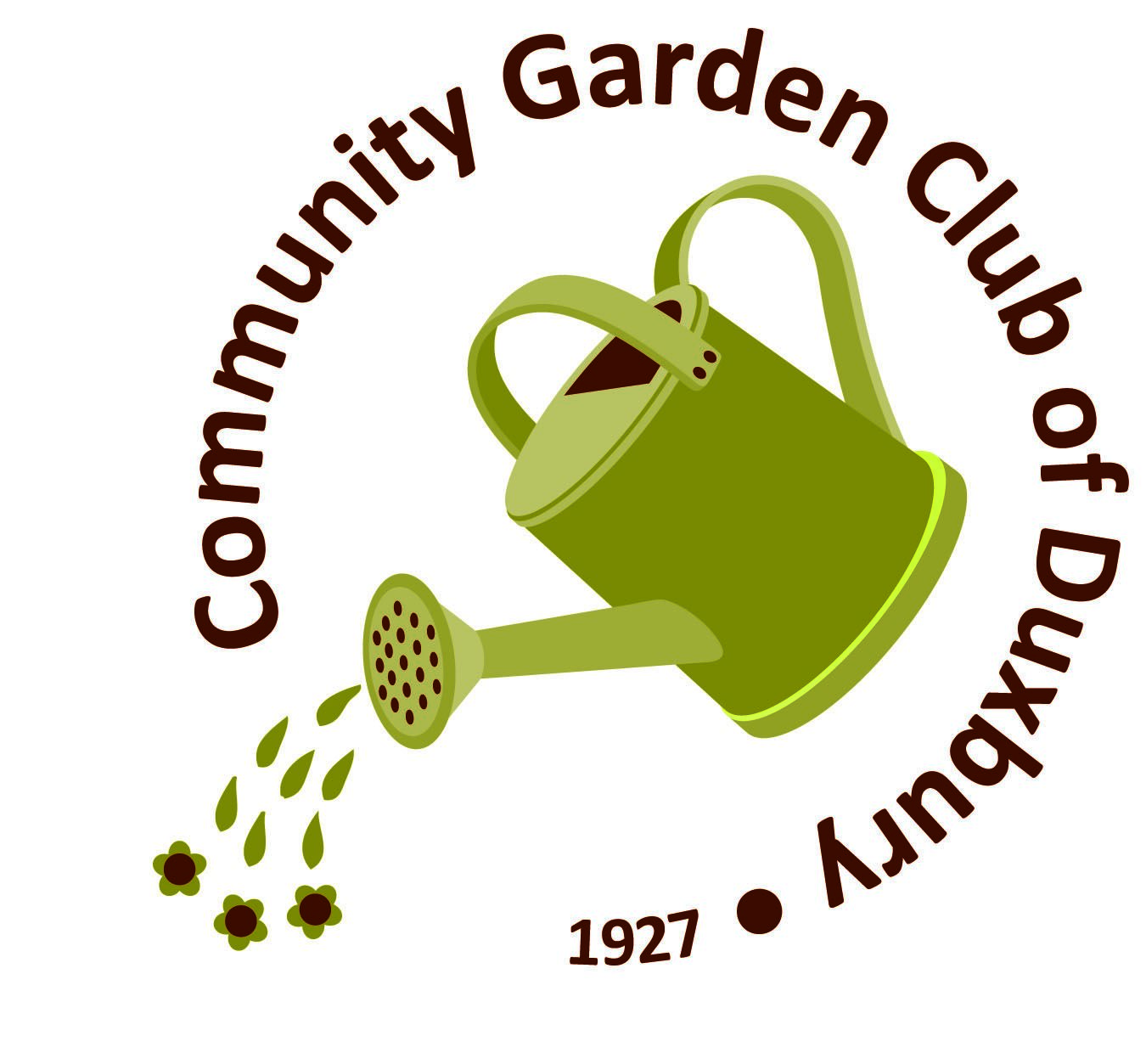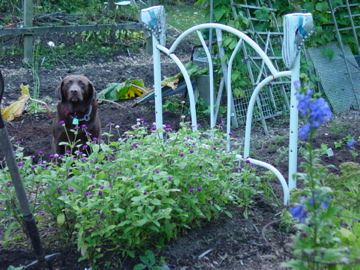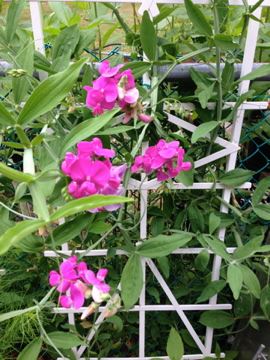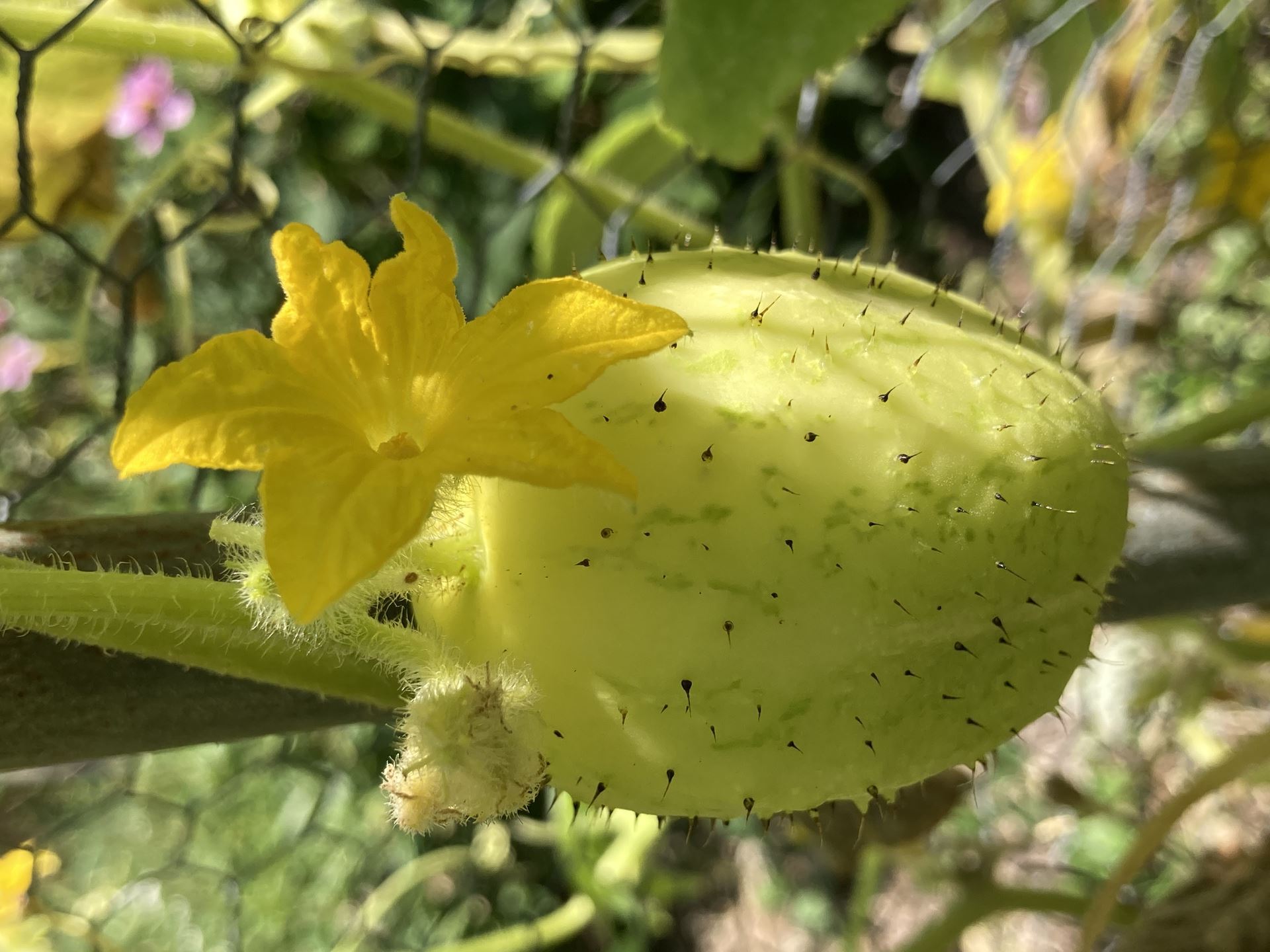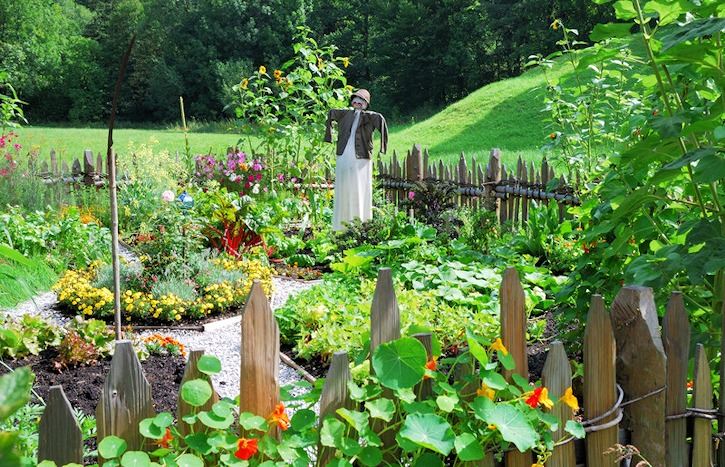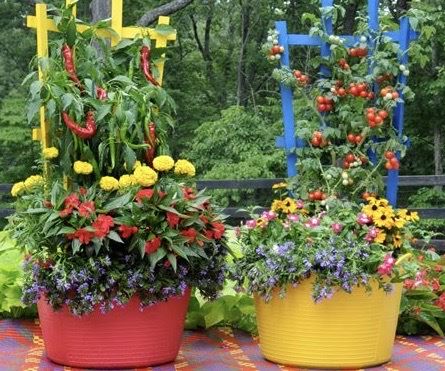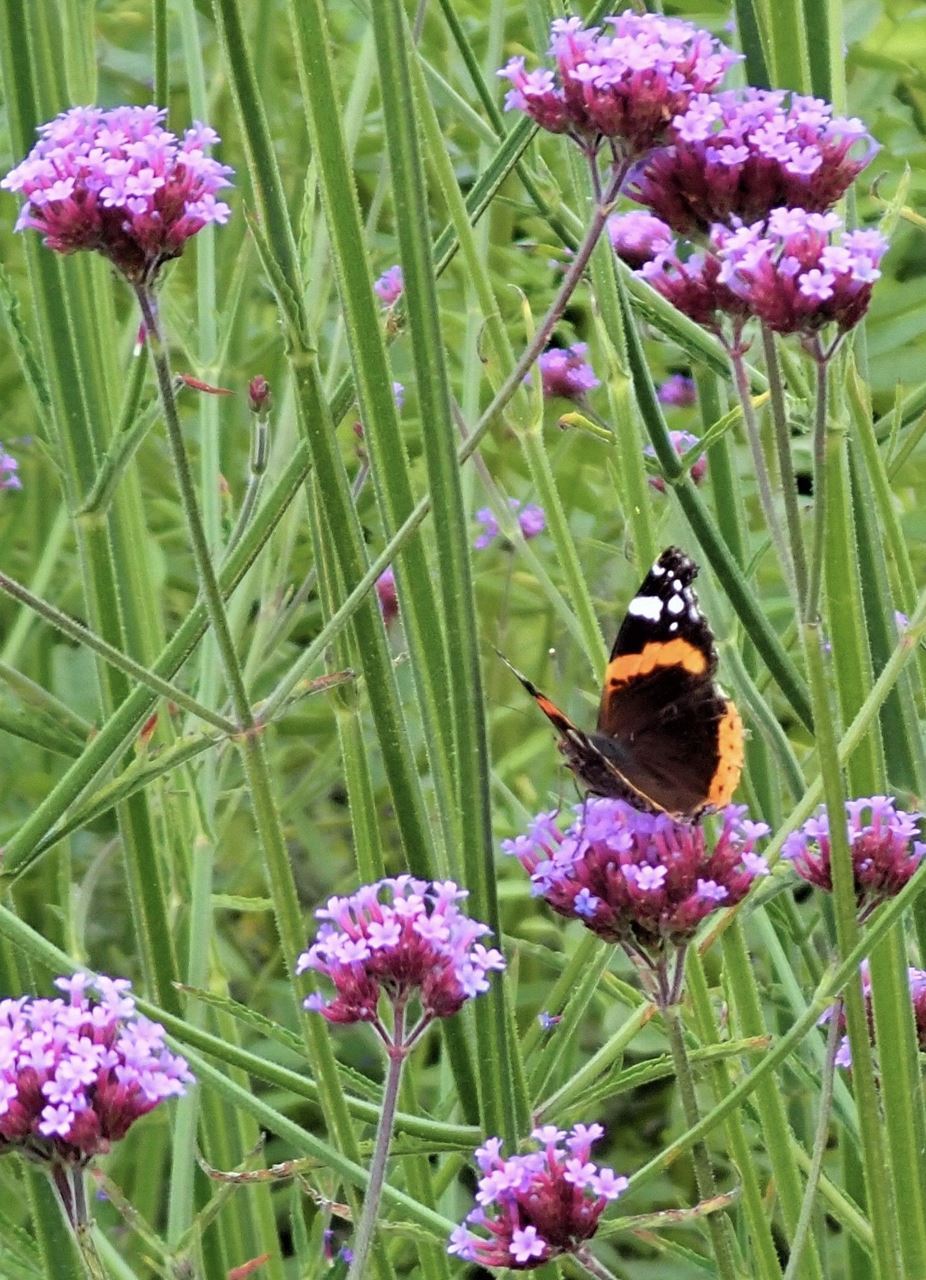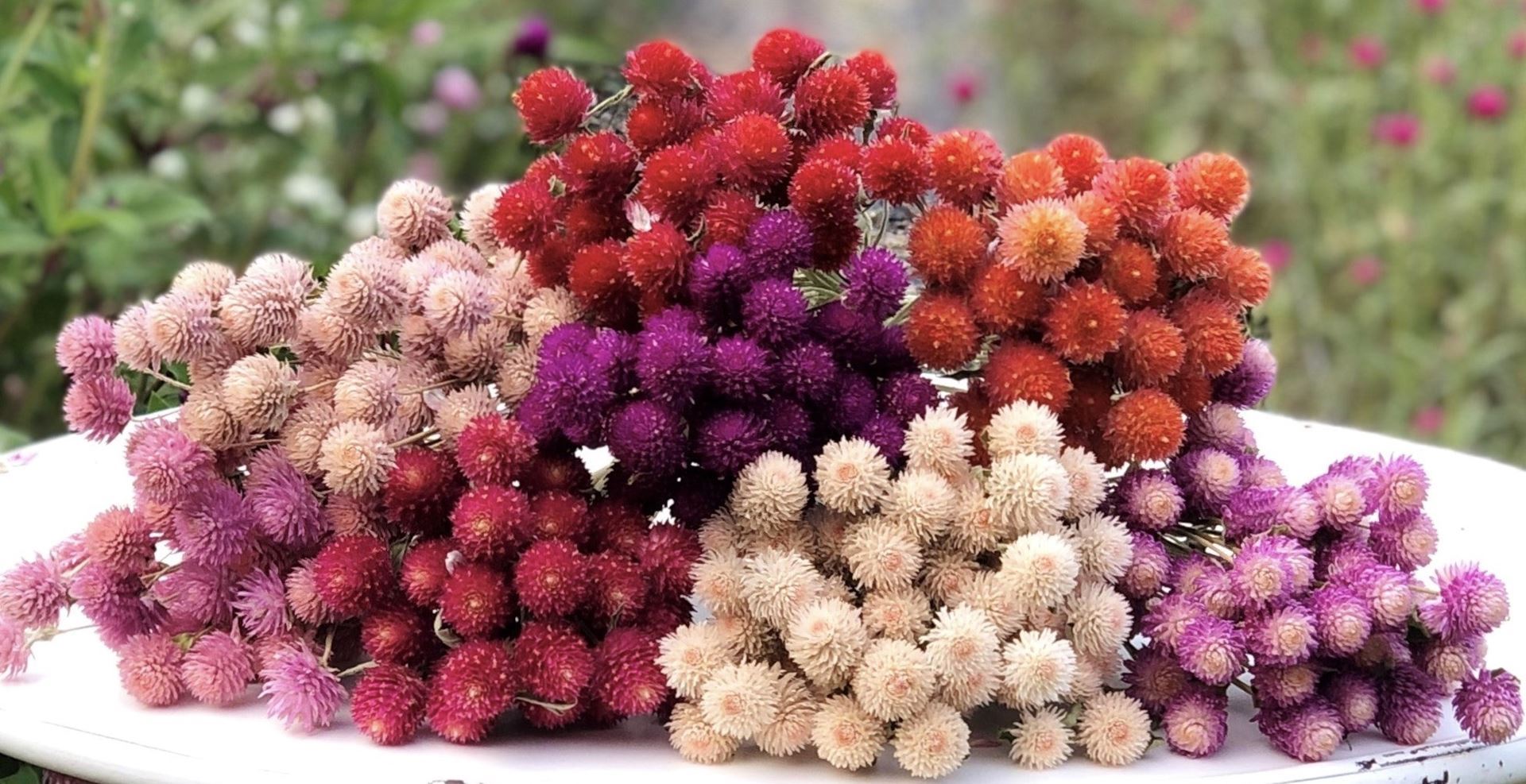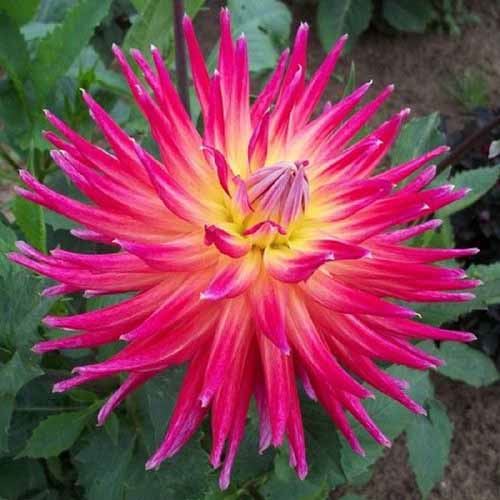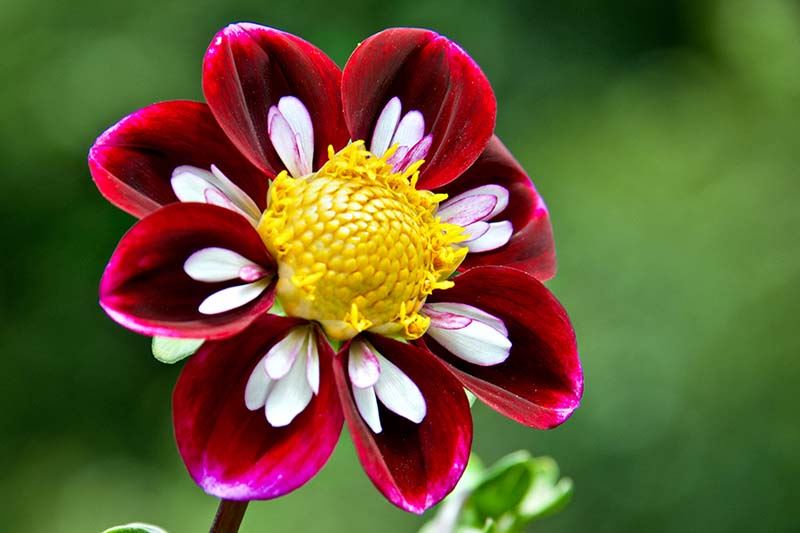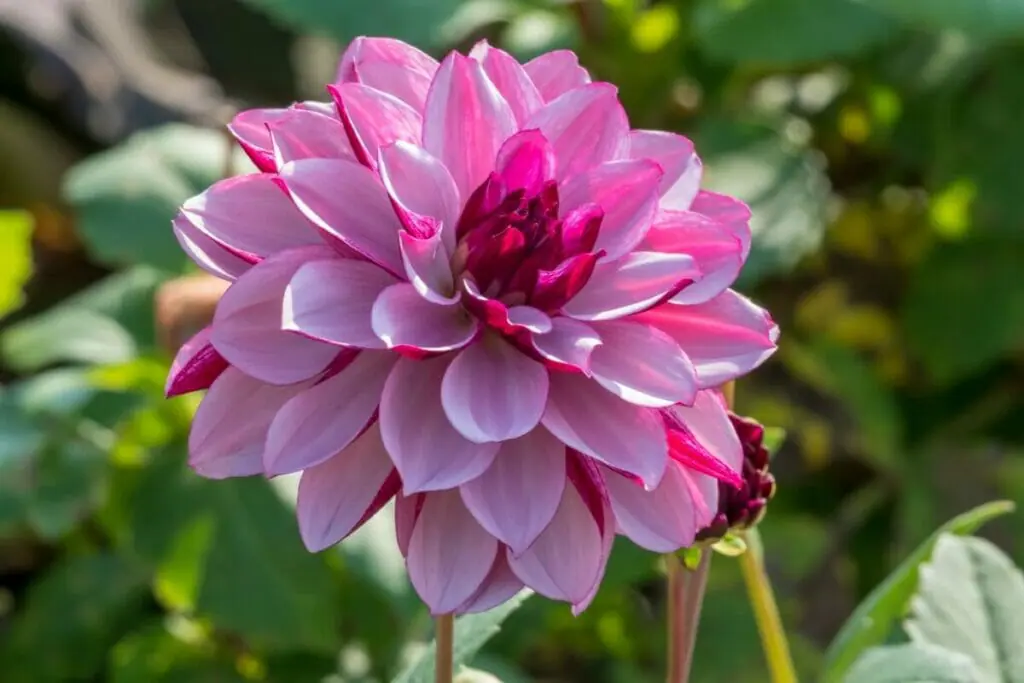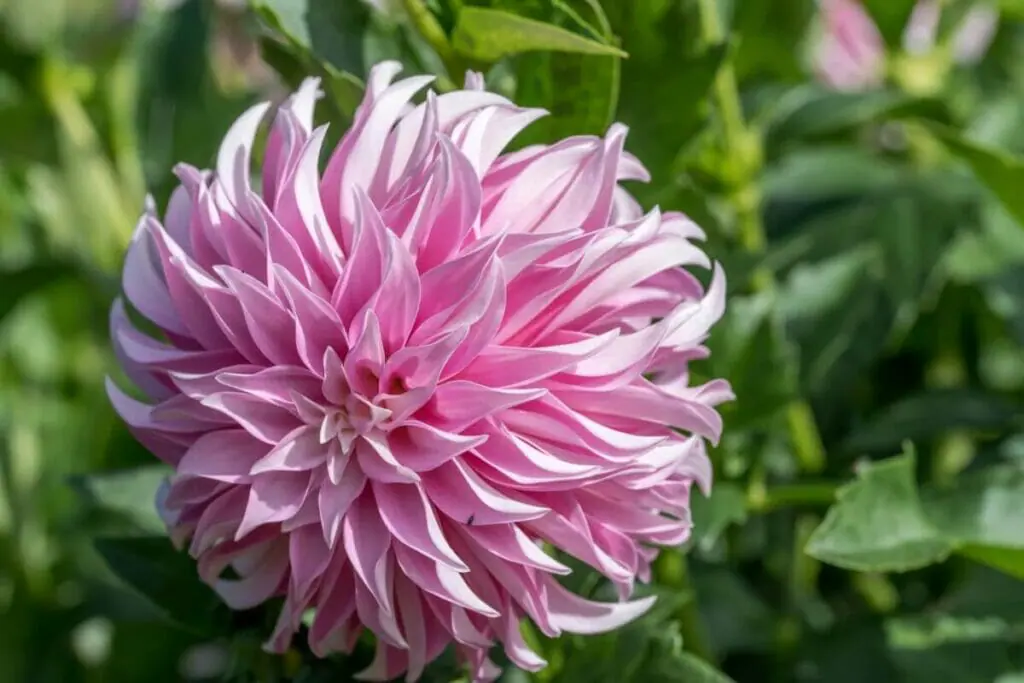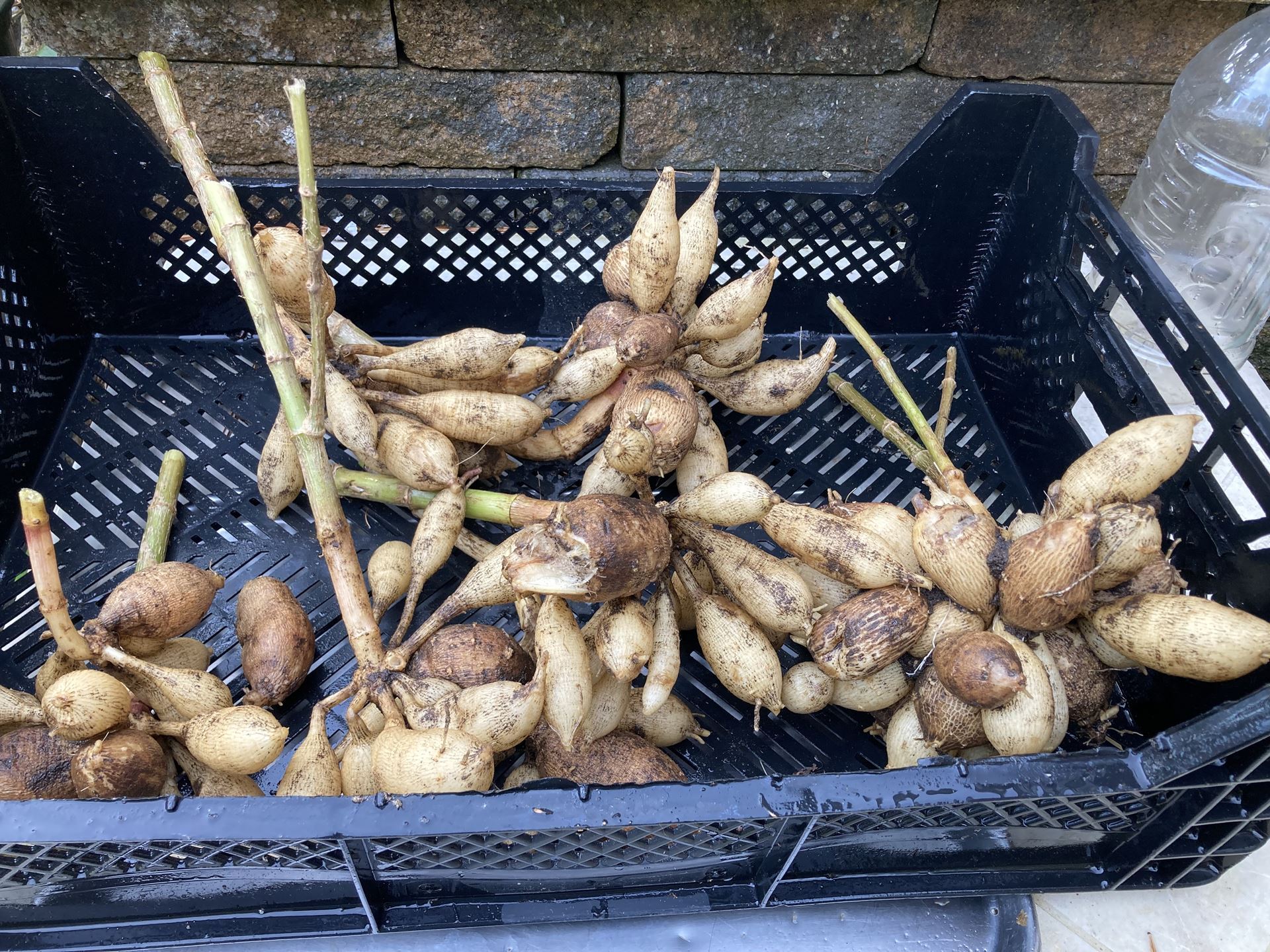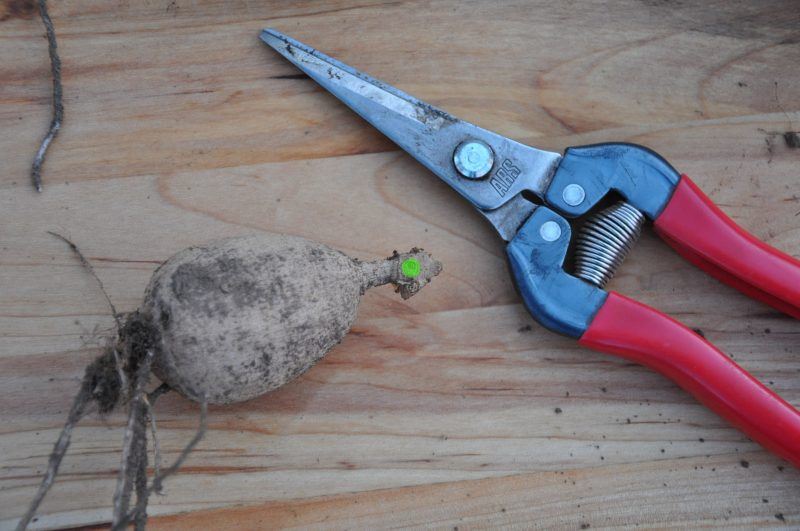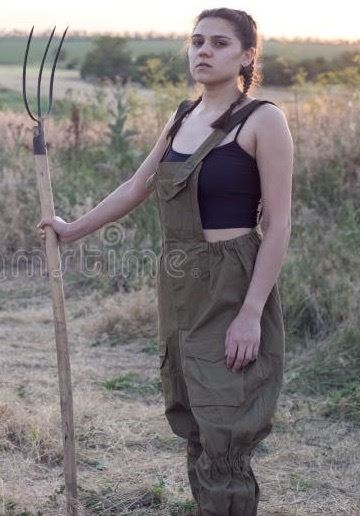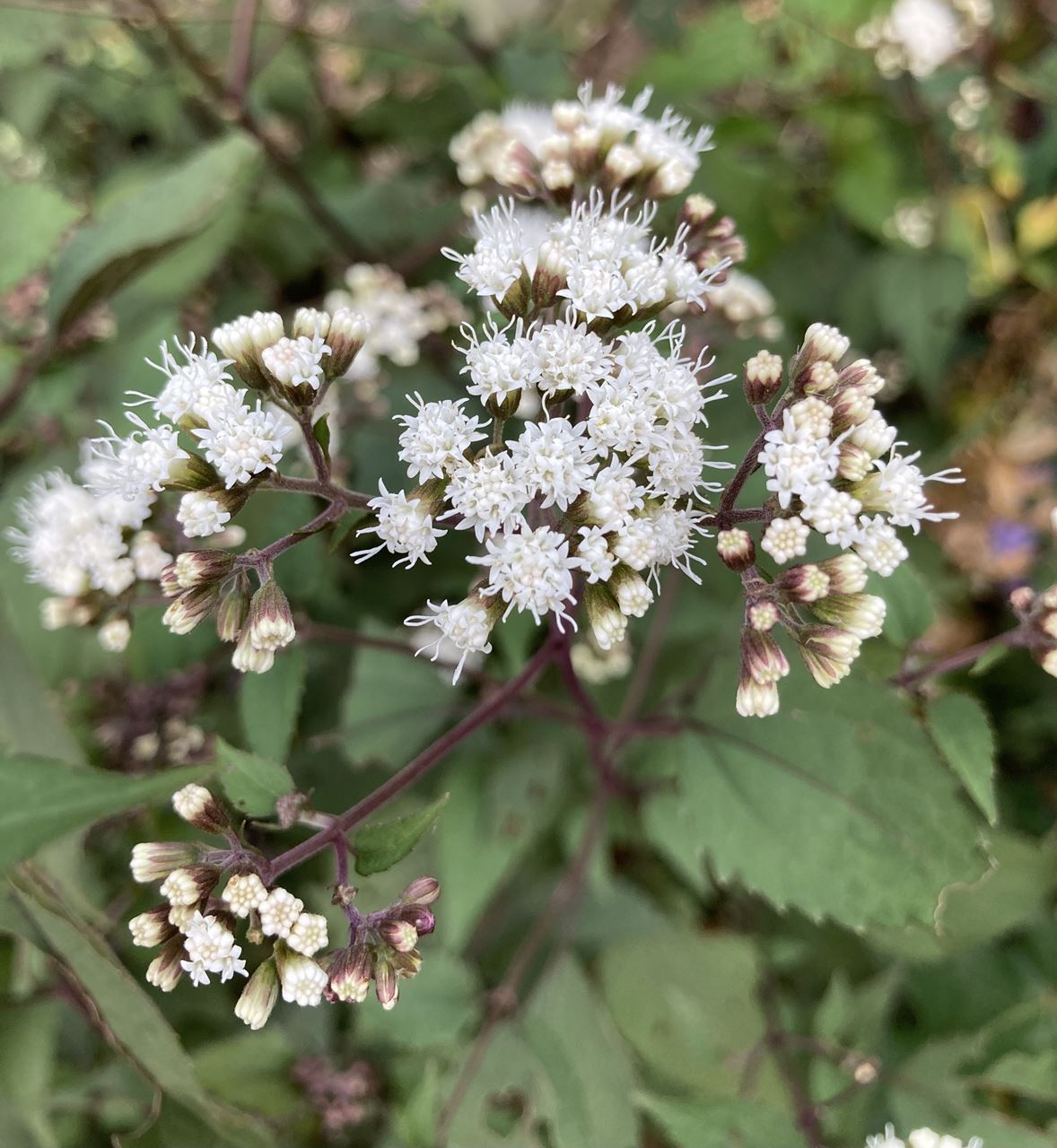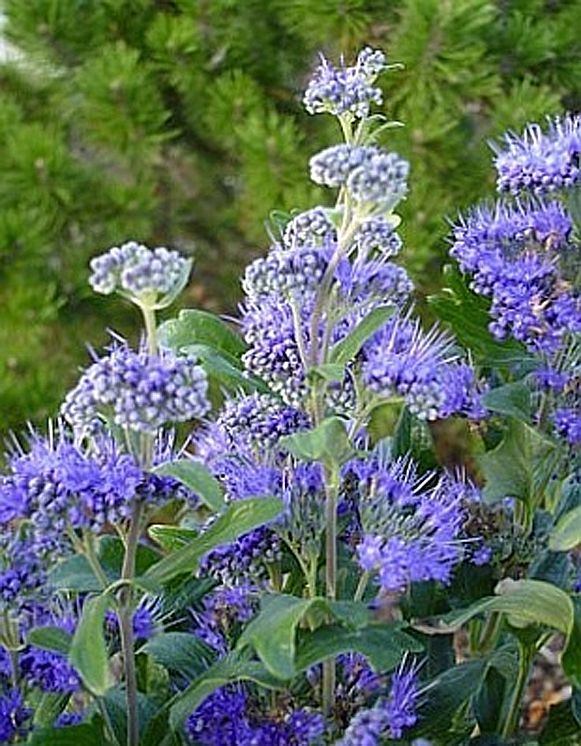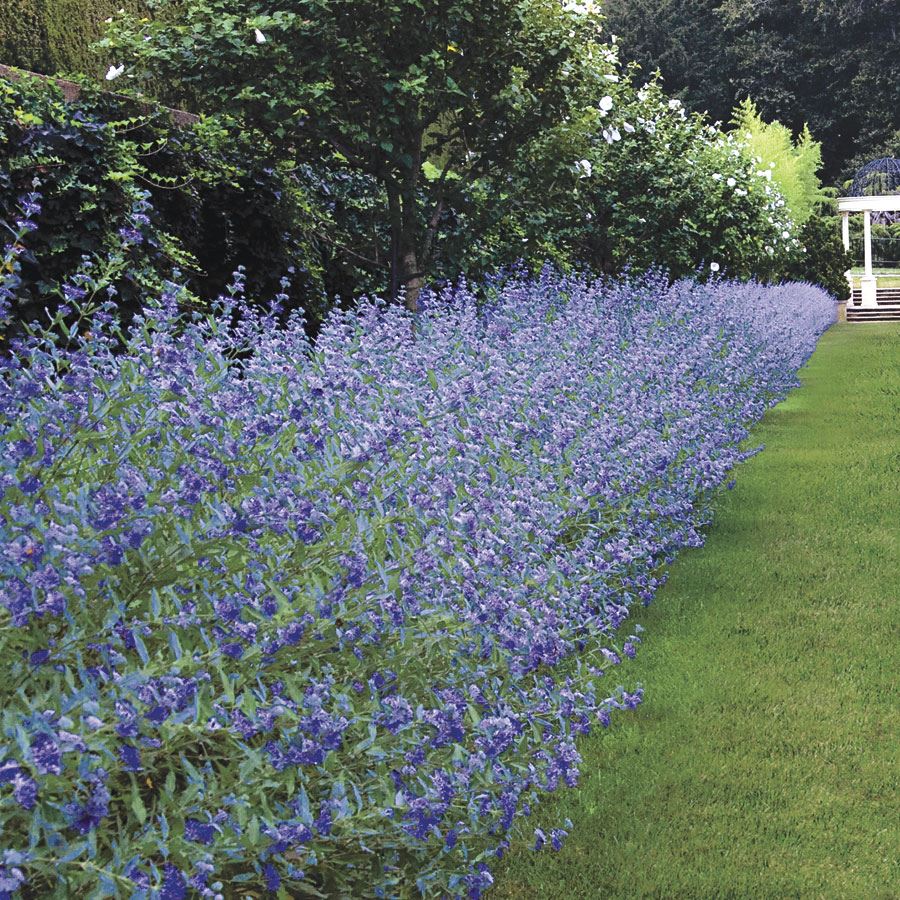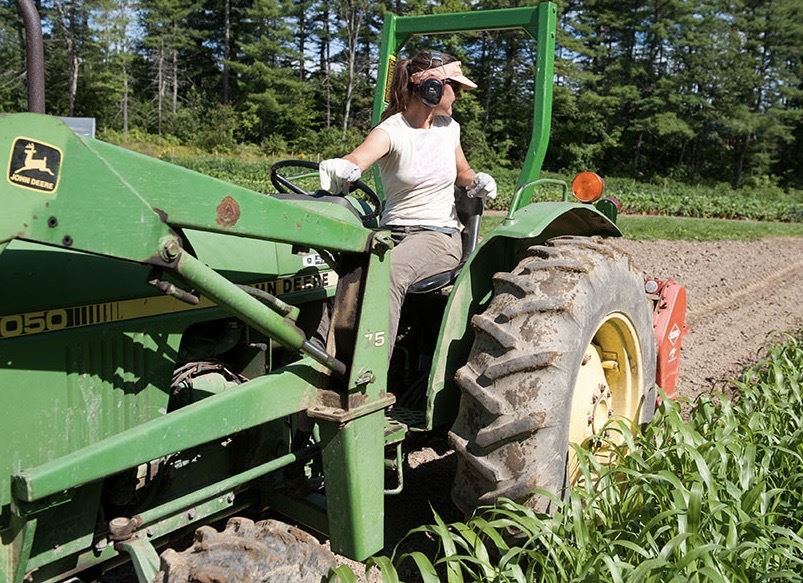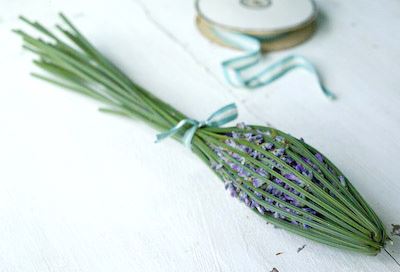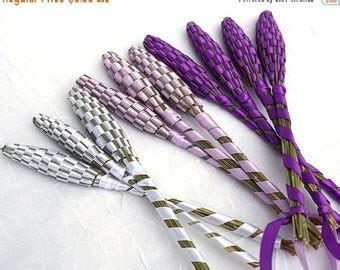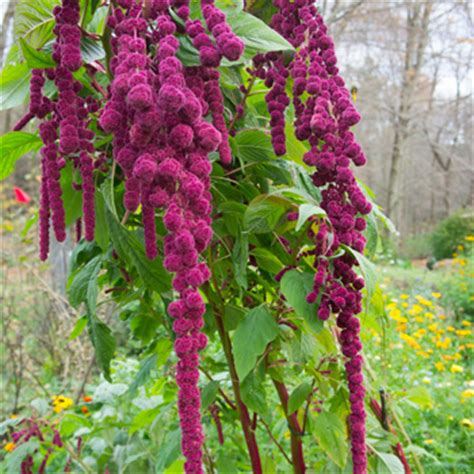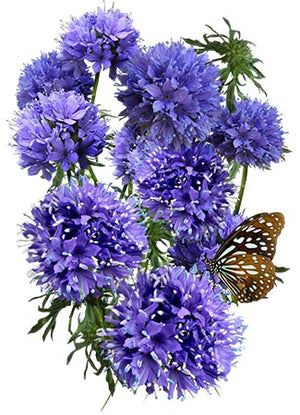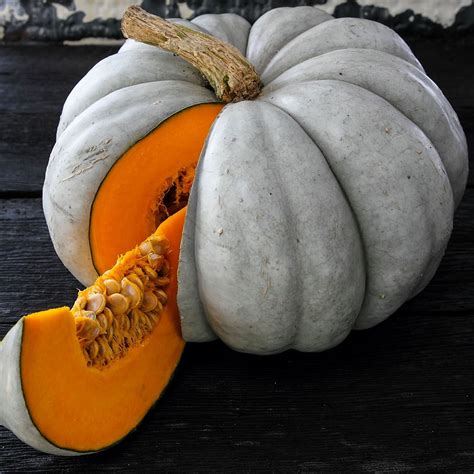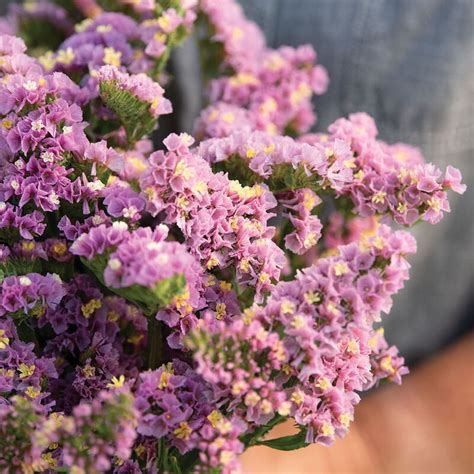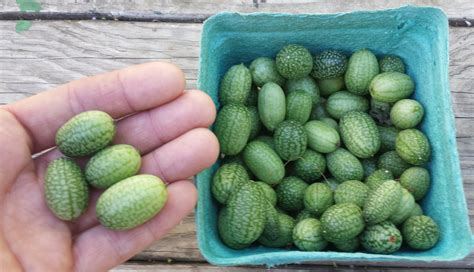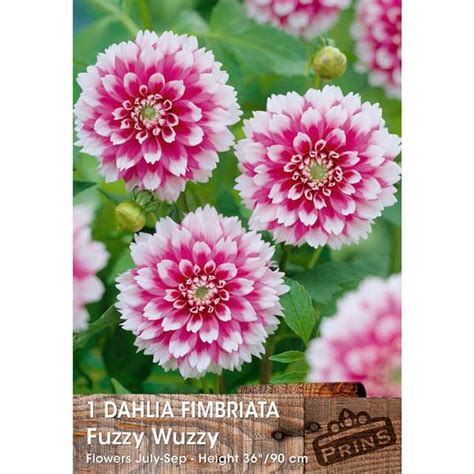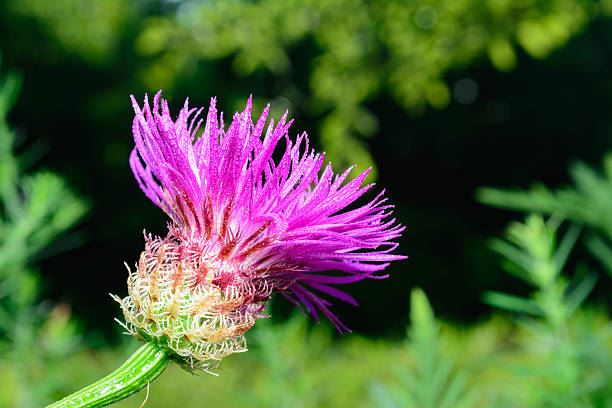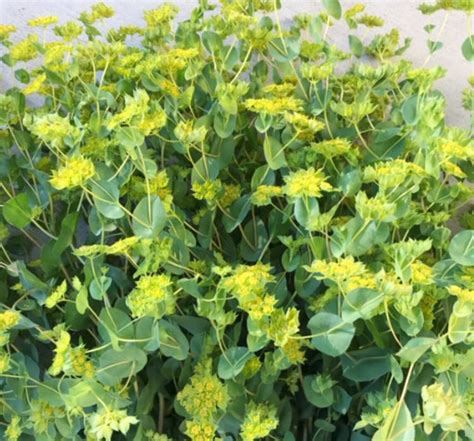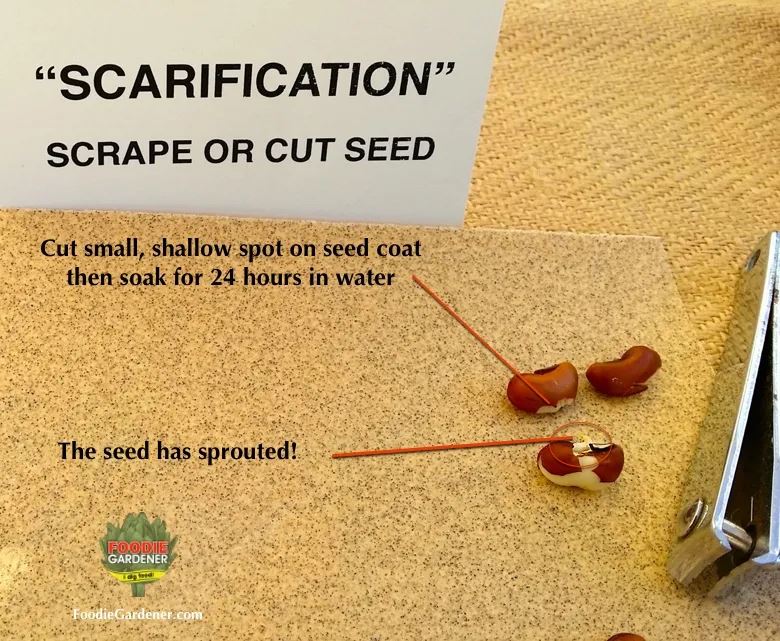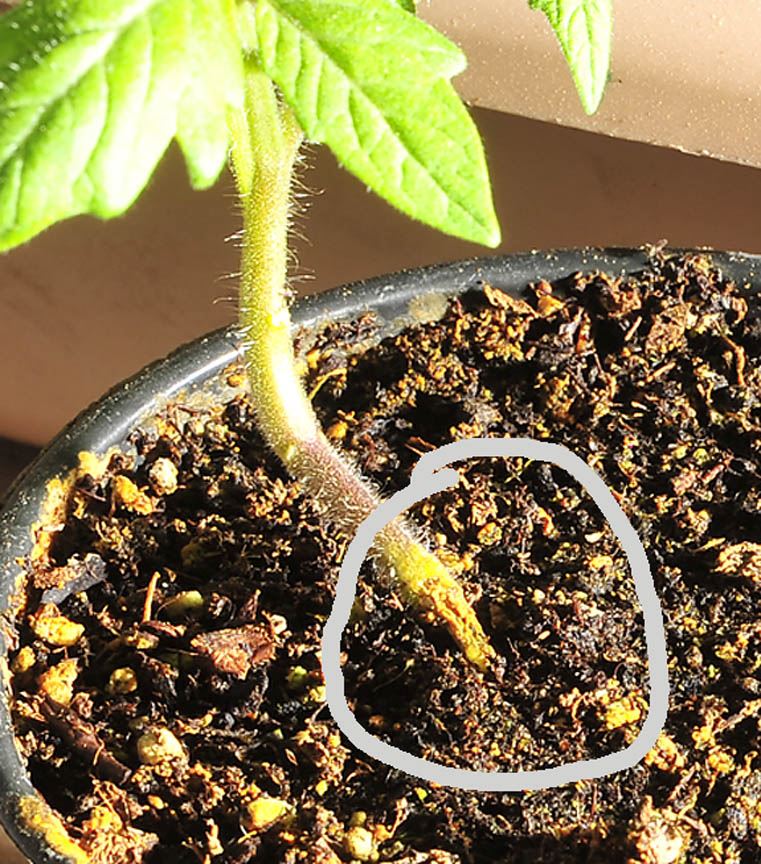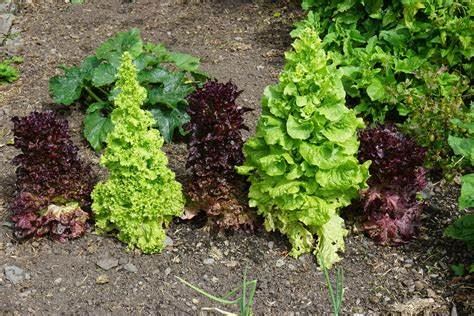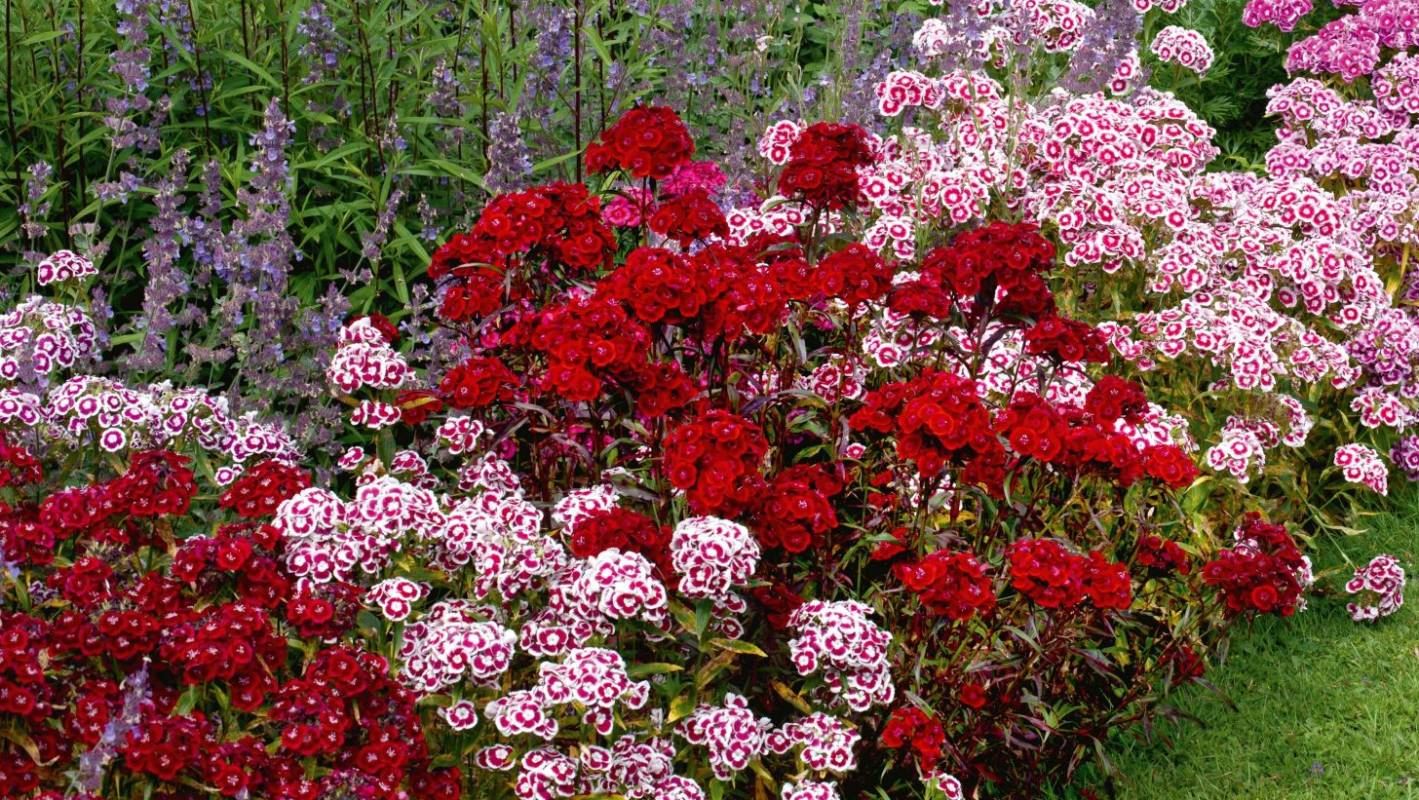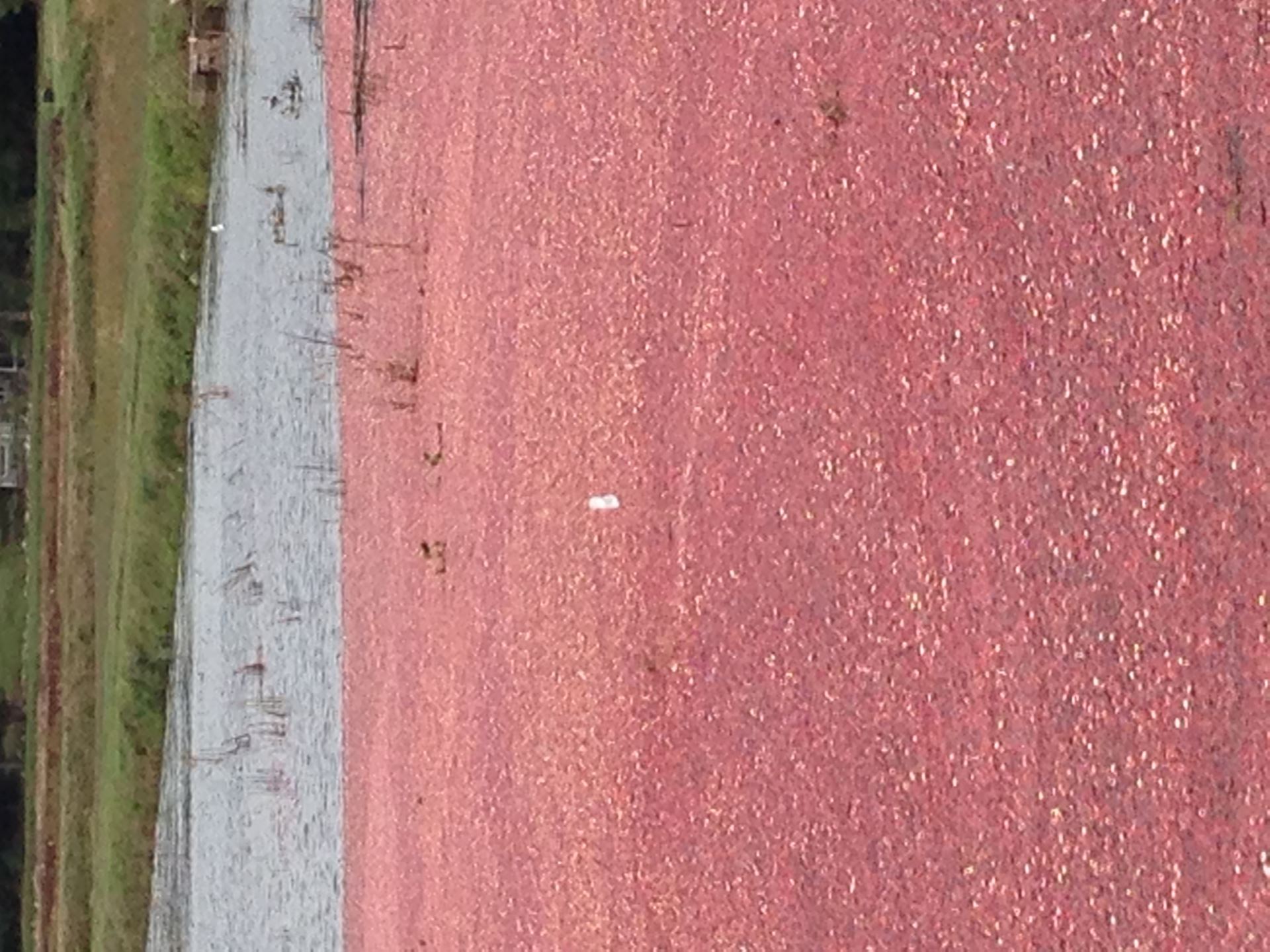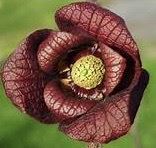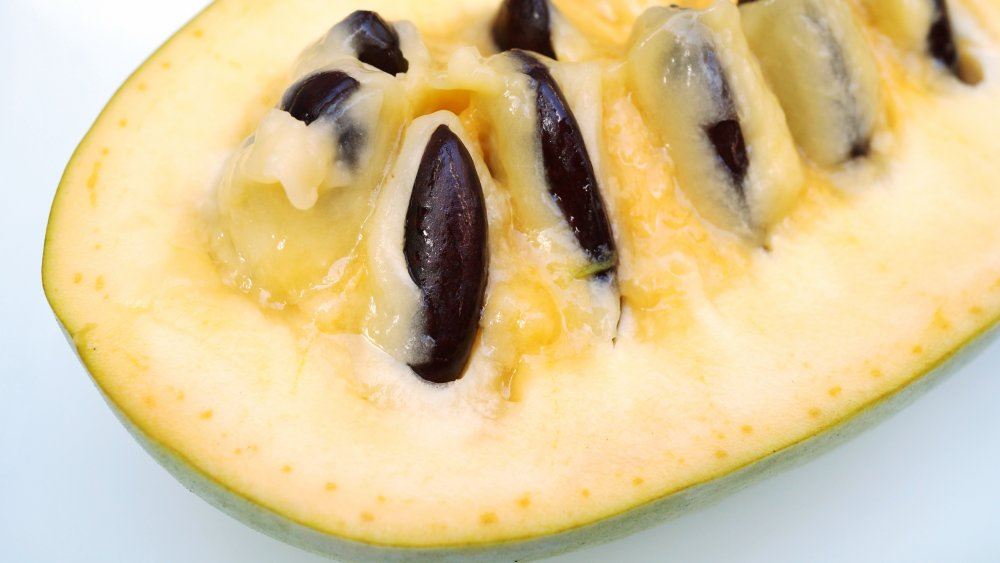hot in horticulture
ASHES FOR GARDENING
By Jeanette Mac Kenzie
March 2025
To a gardener, ashes are a valuable by-product of burning wood. A cord of wood gives from 50 to 60 pounds of ashes. There are several different uses for wood ashes in the garden. First, they are used as a fertilizer. Ashes contain all the minerals that were contained in the wood. Hardwoods contain higher amounts, with conifers coming in as a close second. Wood ashes contain calcium, lime, and phosphorus, and they are one of the most abundant sources of potassium.

Potassium is important to plants because it stimulates production of strong stems and stalks, increasing resistance to disease. It also increases plant vigor and promotes the production of sugar, starch and oil. A high sugar content is desired in sweet corn, carrots and beets. High starch content is more important in such crops as potatoes and grains. Those who grow herbs know that a high oil content in plants such as lavender, basil and thyme increases the fragrance and plat-ability. Lilacs a, flowering quinces, asparagus, tall phlox and lavender all benefit by an application of wood ashes. Perennials that like generous amounts of ashes include peonies, campanulas, pinks, candytuft and tulips. Tall plants like delphiniums and silver king artemisia need the potassium in wood ashes to strengthen their long stems.
Phosphorus and potash are essential in any perennial planting. They help to give plants a rapid and vigorous start, stimulate early formation and growth of roots and are important for seed formation. Give the whole flower or vegetable bed a good dusting of wood ashes in early spring on top of the snow. You will find that the dark ashes absorb sunlight to speed up the timeline of snow for early spring planting.

Lime found in wood ashes changes the pH of the soil making it more alkaline. If you add peat moss (which is acidic) to your soil, the lime in wood ashes helps to keep the pH in balance. If you tend to line your lawn every year, try spreading wood ashes in the early spring before the grass begins active growth. Do not apply wood ashes to acid loving plants such as Japanese iris, lily-of-the -valley, berries, watermelons, heath, heathers, blueberries, holly or rhododendron.
As the ashes accumulate over the winter, save them in a metal container. If you burn brush outdoors in the spring, save these ashes too. They should be collected because once it is rained on, much of the mineral content is leaked out and they are next to worthless as fertilizer. If at all possible, disperse the feather-light on a non-windy day. One resource book suggested garbing up in a long raincoat, plastic shower cap and goggles to prevent the ashes from covering you from head to toe. As you are in the middle of your lawn or garden scattering ashes, unexpected company is sure to arrive to see what you are up to!

Another use for wood ashes is an ingredient to put in your compost pile. In addition to adding its mineral to the compost, the ashes act as a deodorant due to its odor-absorbing ability. The normal fermentation process for a compost pile tends to create an acid condition. Ash has a neutralizing effect which helps microorganisms do their composting work more effectively. Wood ashes can also be used in the never ending battle against insects. Sprinkling the ashes around vegetable plants will help control cutworms, slugs, cucumbers and beetles as well as root maggots. After each hard rain sprinkle more ashes around the plants. If aphids or red spiders are the problem, apply a light dusting of ashes over the infested plants while they are still wet with morning dew.

If you heat your home with wood or just use the fireplace on occasion, use the wood ashes in your gardening, not as something to cart to the transfer station! Please note that everything I mentioned in this article applies only to wood ashes- not coal!
Spring is on its way, time to get your garden ready for veggies and flowers!!

________________________________________________________________
PLANTING YOUR CHRISTMAS TREE
December 2024 by Jeanette Mac Kenzie
Is there a spot on your property that calls out to have an evergreen
tree but you just haven’t gotten around to planting one? December isn’t
the time one usually thinks about doing such things, but it is doable. Why
not combine two projects at one time? Getting a Christmas tree and
later planting it outside! It’s not too late as our soil has not yet frozen, so
digging a hole for your new tree should be relatively easy.

Carefully consider the location on the property. Find out the eventual
height and spread of the tree branches you choose. In a few years you
don’t want branches covering your front door, growing into other shrubs or
trees or under power-phone lines! Another thing to consider is the amount
of sunlight that the tree will get.

Find a nursery that has either balled & burlapped evergreens
(commonly called B & B), or those in pots or decorative containers.
Hopefully you can find a variety of evergreen or holly that you want.
Most likely these trees will be on the shorter side and costlier than a cut Christmas tree.
I’ve called around to see what live trees (those with roots) are
available at local nurseries. That Bloomin Place Too on Rt. 53 in
Pembroke seems to have the largest variety: blue and green spruce,
Canadian fir, balsam and white pine. Kennedy’s in Scituate, Every
Blooming Thing in Scituate and Morrison’s in Plymouth carry either blue
spruce or dwarf Alberta spruce. You may want to check out other
nurseries farther away from home to see what is available as well as to
compare prices.

As soon as you know the size of your tree, dig a hole for its
future planting. It should be just as deep but twice as wide as the
root-ball. Save the excavated soil in a container or pile onto a tarp to
put somewhere it won’t freeze. Temporarily fill the hole with leaves,
evergreen needles, hay, etc. and cover with a tarp to try to keep the
hole from freezing. Keep it in an unheated garage or porch until it is
time to move it inside and decorate it for Christmas. Your tree should
only be inside for about a week. While inside, keep the tree away from
heat sources and keep it as cool as possible and watered. Decorate
with care and avoid trying not to hang heavy ornaments in the branches
that might damage them.

After a week or so, transition the tree by letting it spend about a week
getting used to the cold again by putting it in an unheated garage or
porch before planting outside. Remove the temporary material from the
hole. If the soil in the hole has frozen, pour boiling water around the
edges. Take the tree out of container and plant making sure it is at the
same depth it was growing in. Make sure that the trunk flare
(where the trunk meets the root-ball) is not buried, as it may lead to later
fungal rot. Use the dug up soil to fill in around the edges of the tree and
water deeply. Apply mulch around the tree. If the tree is B&B, remove any
wires and fold down the burlap before planting. The burlap will eventually
decompose.

Another option for a living Christmas tree is a Norfolk Island pine.
This plant (Araucaria heterophylla) is endemic to Norfolk Island in the
Pacific Ocean between New Zealand and New Caledonia. This is a
conifer although botanically it is not a true pine. In most of North
America and Europe it is only grown as a slow growing houseplant.
When young, the tree has a symmetrical triangle shape which resembles
many of our conifer trees we decorate for Christmas. If you get
a Norfolk pine give it bright indirect light, routine watering and lots of
humidity. The best way to do this is place the plant pot in a tray of
pebbles/gravel filled with water. These trees seem to be most available
in the larger grocery stores that have florist departments. They run from
2 – 5 feet and are usually reasonably priced. Lowes and Home Depot
also carry the smaller ones. They don’t like the cold so make sure they
are wrapped well when getting them to your vehicle and into your
Home.

Happy Christmas tree shopping, decorating and (possibly) planting!
________________________________________________________________
by Jeanette Mac Kenzie
October 2024
Springtime in the garden is way too busy! How about doing some of the planting of perennials, shrubs and trees in the fall. Besides the time factor there are several advantages to doing this.
Plants have a better time of ESTABLISHING THEIR ROOT SYSTEMS in warm soil without having to also nourish the plants, put out new leaf growth and make flowers as in the spring. Roots of fall planted plants will continue growing as long as the ground temperature (not the air temperature) is above 50 degrees.
Plants put in the ground in the fall need less WATER to establish them-selves compared to the spring. They don't have the added stress of hot spring and summer weather to contend with. Plants use less water since photosynthesis is slowed by shorter autumn days. Evaporation rates in plants slow down during the fall. This doesn't mean however that you shouldn’t water newly planted plants!
Plants as well as bulbs can be PLANTED AT THE SAME TIME in the fall without damaging established root systems.
There are a few EXCEPTIONS to the fall planting rule. Ground Covers as well as acid loving plants like azaleas and rhododendrons do better when planted in the spring.
Finally, from mid—August on nurseries as well as plant catalogs have most of their merchandise on sale with prices dropping as winter gets closer. Granted there may not be as large a choice of plants, but you can certainly save yourself some money on your landscaping project.
___________________________________________
AUTUMN PLANTING 2024
by Jeanette Mac Kenzie
The daylight time is noticeably a bit shorter each day. Autumn temperatures especially in the evenings are a bit chillier. Although the soil temperatures are still on the warm side, plants are less stressed. Plants are getting ready for dormancy so their need for water is a fraction of that in the spring and summer. In the spring and summer the plants energy is divided between growing for top growth, repairing and growing new roots. In the autumn the plants are busy just sending energy to grow the root structures. Plants will continue growing roots until a hard freeze. In the fall insects focus less on feeding to finding a place to over winter. They enter a period of suspended development during unfavorable environmental conditions, a condition called diphase.
There is less competition from weeds in the autumn. By fall weeds are completing their growth cycles, perennial weeds have pretty much stopped growing and only a few varieties are still germinating. It is a good time to place a light layer of mulch around your perennials to get ahead of spring weeds. Sales of perennial plants and shrubs are abundant as nurseries try to get rid of their extras before the season ends. Often times good sales may be found. Autumn is also the time to buy and plant bulbs such as daffodils, crocus, tulips, grape hyacinths, etc. for next seasons spring blooms; Because of these reasons as well as others it is a good time to plant perennials and shrubs. The plants listed are those that will be blooming in Aug.-Sept.-Oct. which you may want to consider planting.
CAEYOPTERIS clandonensis
Several common names include Bluebeard, Bluebird, Blue Mist, Dark Night. I recently stopped by a local nursery where I found a small shrub covered with the most striking shade of bright blue flowers! Numerous bumble bees were busy pollinating the flowers –so of course I went home with the plant! It will attract beneficial insects such as ladybugs and lacewings which help by keeping the population of harmful insects in check. Caryopterius has a long blooming season and is valued for its late fall flowers, it is drought resistant, can be pruned in the late spring as flowers bloom on new growth, and is a good cut flower. If you are adventurous you can try making new plants from soft wood cuttings in the spring.
ALLIUM tuberosum
Garlic chives look very similar to regular chives, but they have white flowers in the early fall. They are a type of herb related to the onion family. The leaves are long and thin and tend to resemble blades of grass with a dark green color. They are appreciated for their aromatic mild garlic flavor with a hint of onion. Garlic chives prefer a sunny site in rich well drained soil but will grow in less favorable conditions. They are a nice addition to your culinary herb garden, easy to grow and add flavor to many dishes. They can be used in soups, sauces, salads, meat and egg dishes, snipped and sprinkled over garlic bread, baked potatoes or over hamburgers. One of my favorites is adding a few chopped garlic chive leaves with scrambled eggs and a bit of melted cheese! As a medicinal herb a paste of the leaves is used on minor wounds and cuts as it helps to heal them faster and also aides in stopping bleeding. Garlic chives are rich in Vitamin C as well as riboflavin, potassium, Vitamin A, iron, thiamin, and beta carotene. The white flowers can be added to your fresh floral arrangements also.
PEROVSKIA atriplicifolia
Russian sage is the most common name. Recently the botanical name of this plant has been changed to SALVIA YANGII. The name can be somewhat confusing. It is not native to Russia but instead hales from Central and South Asia. It was named by a botanist in honor of a Russian state official. This is not the type of sage you want to eat.
This attractive blue-purple flower is a favorite of pollinators for bees, hummingbirds and butterflies. These plants thrive in hot dry conditions and are drought tolerant once established. No fertilizer is needed just lightly mulch with a little compost in the spring. Bloom time runs from late summer to fall. The scented leaves can be dried for potpourri. The leaves are not edible even though they smell very fragrant. Critters don't like Russian sage due to its strong fragrance and flavor. The plants are tough and long lived.
The most common problem with Russian sage is its tendency to sprawl. The plants may require a hoop or some sort of staking devise to keep them upright.
OENOTHERA lindheimeri
Gaura has several other common names including Wandflower, Bee blossom, Butterfly flower and Whirling butterflies.
The species was named after Ferdinand Jacob Lindheimer a German born botanist who collected primarily from the Texas frontier becoming the first resident plant collector in the state. He is known as the “Father of Texas Botany”. This species was awarded the Royal Horticulture Societies Garden Award of Merit in 1993.
The very long wiry flower stems wave with delicate fluttering flowers that rise above dark colored foliage. They are a bit unique due to their long stems which are said to look like butterflies perched at the end of the stems.
These plants like full sun in well-drained soil and will tolerate extreme heat. This is another plant that does not do well WITH fertilizer, as it tends to make them floppy. Since this plant has a tap root it is difficult to try to divide it. Gaura is native to North America where it is considered to be short-lived perennial living about 3 years. It is loved for its hardiness, delicate beauty and low maintenance needs. There are about 20 possible species to choose from coming in varying shades of pink and white.
EUPATORIUM rugosum
Chocolate Joe Pye Weed, Chocolate boneset is both common names for this plant. It is named after a man named Joe Pye a Mohican sachem who lived in the mission town of Stockbridge, Massachusetts from 1740 – 1785. “Sources (although without citation) claim the plant was used to treat typhus outbreaks and for the treatment of kidney stones and other urinary tract ailments.”)
Chocolate Joe Pye Weed is a little-known species related to a smaller relative of Joe Pye a native plant to North America. The leaves are a burgundy color which goes well with the fuzzy white flat-topped blooms. This autumn flowering perennial blooms in late summer and autumn, it tolerates a wide variety of conditions including dry shade. It is a butterfly and bee nectar source growing about 3 feet tall. The flowers as well as the foliage are useful for cutting for flower arranging by the end of summer. It’s one of the best perennials to add to your late autumn garden as the white flowers can go blend with any colorful scheme of your choosing. The term chocolate refers to the color of the plant leaves not for eating as the plant itself is toxic.
It is mid-September already so if you want to plant some of these perennials now is the time to do it.
SUMMER IS ALMOST OVER
Jeanette Mac Kenzie Mid-August 2024
The daffodils, peonies, iris, and daylilies have come and gone. However hydrangeas and tall phlox are still blooming. If you are still in a gardening mood here are a few late summer & autumn perennials you may want to consider planting.
Wind Flower Anemone
This plant has numerous common names including Windflower, September Charm, Pasque Flower, Prairie Crocus, Thimbleweed as well as others. It is a very diverse genus with as many as 200 cultivars and hybrids. In the language of flowers in Victorian times this plant represented a forsaken love of any kind. The name means Daughter of the Wind. The variety I am familiar with has long flower stems. They begin blooming in late August. The plants can be up to 48 inches tall. Anemones attract pollinators adding to the value in your gardens. For cut flowers harvest them in the early morning when the bloom is still closed.
Flowers cane be nearly any color except yellow. Some varieties are fragrant, but the scent is often light and not all species have a noticeable aroma. Windflowers prefer partial sunlight, but they can with stand full sunshine. Adding a mulch will help keep the soil moist. All parts of the plant are slightly toxic to humans and pets.
Turtlehead Chelone
This wildflower is native to North America. Its common name comes from the appearance of its flower petals which resembles the head of a tortoise. If you gently squeeze the flowers the turtle will open its mouth! It is great for pollinators such as bees and hummingbirds. Pollinators favor turtlehead as deer and rabbits tend to leave it alone. It is rarely bothered by insects or diseases. It is the primary plant on which the Baltimore checkerspot butterfly will lays its eggs. There is no describable scent.
There are many species, hybrids and cultivars that vary in size, appearance, blooming time, in colors of, pink, white and purple. Turtleheads will grow in full sun but does much better in filtered shade. The plant likes rich moist soil where it grows about 3 plus feet. It blooms in the late summer.
The pink variety of Chelone lyonii is a native plant which is most tolerant of dry conditions so consider pairing it with other natives such as Joe Pye Weed, Cardinal Flower, Aster or Button Bush. All these plants can be used as cut flowers for your own arrangements.
Obedient Plant Physostegia virginiana
This plant gets its common name from the fact that each individual little flower will upon being pushed in any one direction remain in its new position as if it was hinged. I am not aware of any other plant that will do that. Fertilizer is not needed other than some compost around the base of the plant. Fertilizer leads the plant to have floppy growth. It is a native American plant which attracts pollinators of bees, hummingbirds as well as butterflies. It is generally deer resistant, and free of pests and diseases.
This perennial will do best in either full sun or light shade. It grows up to 2-4 feet tall. The flowers are white to pink blooming in the late summer into fall. The plant is rambunctious, meaning that it can spread by underground runners. The plant has shallow roots, so it is easy to remove excess growth to place in a new location, give to a neighbor or put in the compost pile if it gets too aggressive. The obedient plant makes great cut flowers.
Great Blue Lobelia siphilitica
Another American native is found in over half of the country from the Dakotas to the Eastern half of the country. Butterflies and hummingbirds both love this plant. It is NOT drought tolerant but can tolerate occasional flooding conditions. Most mammals avoiding eating Blue Lobelia as the foliage have toxic alkaloids. Blue Lobelia prefers damp soil, grows to 2-3 feet tall, does well in sun or partial shade, and does NOT need supplemental fertilize to grow well.
Lobelia has a red cousin named the Cardinal Flower which also blooms at the end of the summer. They can grow well together and are also good cut flowers. They are not typically sold in nurseries but can be found in specialty nurseries that deal with native plants. Check out Blue Stem Natives in Norwell, MA They gave a program to our garden club in the past year.
Native Americas had many uses for Blue Lobelia. It was kind of a catch all to treat many different symptoms. It was once considered a cure for syphilis by European settlers as its botanical name suggests.
Green Dragon Arisaema dracontium
I came across this rare native plant at a local garden club plant sale many years ago not knowing what it was. I just knew that the leaves were quite unusual so of course I wanted it. After much searching I was able to find a plant that was related you may know as Jack -in-the-Pulpit.
The perennial plant is native to Canada as well as the US where it prefers damp shade. The Green Dragon normally has one long stem with compound leaves of 7 to 13 leaflets which are held horizontally over the plant. A long tapering wand emerges called the dragon's tongue which holds the seeds that turn orange to red when ripe in the fall, which only birds can eat. The plant can range in height from 12 inches up to 3 feet. After flowering in the autumn the plant becomes dormant. All parts of the plant contain calcium oxalate crystals which are an irritant to the mouth and esophagus. It is toxic to both cats and dogs. Green Dragon has no serious disease or insect problems.
Green dragons can be male or female ...they are dioecious. More interesting is the fact that a given plant can change its sex from year to year. When the plants are small they produce only male flowers. In successive years when the plants become larger it produces both male and female flowers at the same time. As the plant becomes still larger it produces more female flowers or only female flowers.
**For those who like exotic plants I have just a few Green Dragons plants for club members who might want one!
WHAT'S BLOOMING IN MID-APRIL?
By Jeanette Mac Kenzie
The spring has been cold and damp for quite a long time, so we are all hoping for some warm sunny weather to get busy with our gardening. In spite of the weather some early plants are busy putting on their spring colors.
First come the tiny ones Grape Hyacinths. It is a small bulb with tight clusters of blue /purple flowers that resemble grapes. The small bulbs are best sown in the fall for spring blooms in March to April. They prefer full sun to partial shade. When the plants begin to yellow they can be cut back as they become dormant. The blooms do not have a heavy scent, but some gardeners may notice a slightly sweet fragrance similar to grapes. Grape hyacinths spread quickly by either seeds or by underground roots.
This plant is a bit taller in size growing up to 12 inches. Lungwort likes partial shade but will take more sun in the early spring. The shift in flower color from pink to blue is due to the pH levels shift as the growing season progresses.
The leaves are a fuzzy, green with white speckles all over them while the flowers are shaped like tiny bells. These plants tend to go dormant during hot dry weather during most summers. If kept well-watered the plants will rejuvenate as the weather cools.
Some may wonder about the strange name for this plant. “The doctrine of signatures dating from 1493 states that herbs resembling various parts of the body can be used by herbalists to treat ailments of those body parts. A theological justification was that God would have wanted to show men what plants would be useful for. Today considered pseudoscience the practice has historically led to many deaths and severe illnesses. In the case of Lungwort, however they got lucky, and these little lung-shaped leaves really are a wonderful respiratory tonic.”
For-Get-Me-Nots botanical name is Myosotis coming from the Greek meaning mouse ear as that is what the leaves resemble. These flowers have long been a symbol of friendship, remembrance, and love. This dainty flower makes a visual impact as there are many flowers along its stems. Among the varieties of this plant, sky blue is the most common color, but it also comes in white and pink. It disperses its seeds and then dies back. The following spring many new plants come up creating a blue river throughout the garden. The seeds can lay dormant in the soil for years until conditions are right for growing.
Once upon a time a knight wearing a full suit of armor was strolling with his lady love along a rushing stream in the springtime of the year. As he bent over near the water’s edge to gather a bouquet of sky-blue flowers he fell into the current. He tossed the bouquet to his intended as he shouted for-get-me-not just as his armor dragged him in and he drowned. This is one version of how this plant got its name.
It is said that the Pilgrims brought seeds for (Lunaria annua) silver dollar plant to the colonies on the Mayflower. Thomas Jefferson grew them in his famous gardens of Monticello. This biennial plant with a long tap root is best sown from seed as it doesn't transplant well. The first year only low growing rosettes will appear. The second year a tall stem can grow up to 3 feet with purple/pink flowers. These are followed by green flattened seed pods called silicles. As they mature they shed the outer layers, the seeds fall off leaving a white translucent membrane. Now your salver dollars can be used for long term dried arrangements. In the language of flowers, the plants represent honesty, money, and sincerity. Because so many seeds are produced from each plant be careful that they do not become invasive. The fragrant flowers attract both butterflies, bees, and moths.
Hardly a street in town can be found where there are at least some daffodils blooming. These bulbs are planted in the late autumn to bloom in April. With a vast array of colors and color combinations you have many choices to make when growing daffodils. A bulb will usually last 3 to 5 years but they self-propagate and form new bulbs that should continue to grow season after season. Neither purple nor red daffodils exist. If you find your daffodils are not flowering they have become blind the term used to state they are not flowering. This is caused by the fact that they lack the nutrients to produce blooms. Try adding a specialized fertilizer to the area and you should have resulted the next season.
Pieris Japonica - Japanese Andromeda also called lily-of-the-valley is both glossy and evergreen. This shrub proves to be attractive during both winter and summer time. It is winter hardy to zones 5-9 and does best in partial shade. The spring buds open into dramatic creamy white pendulous racemes of bell-shaped flowers. Gardeners love this shrub due to its early arrival in the spring with flowers. It also adds greatly to early spring arrangements.. Feed Japanese andromeda with fertilizer meant for acid loving plants. A plus is that deer tend to leave this plant alone. There are dwarf varieties ranging from 2 to 6 feet while standard ones are 9 -12 feet in height. They are slow growing. The shrubs are usually well shaped, so pruning isn't usually necessary. The new foliage emerges in vibrant shades of pink to reddish bronze. One warning if ingested the plant is toxic to humans and pets.
Everyone knows the brilliant yellow splash of spring color of the forsythia bush. The shrub can be tightly pruned to a lollipop shape or long formal hedges. Others prefer a less formal look with cascading branches. If you want a taste of very early spring in March just cut a few stems to bring inside to force indoors. There are many varieties of forsythia which range in size from 2 feet to 12 feet. As spring arrives the flowers come first then the leaves follow. If you want to prune your forsythia the best time is right after it has finished blooming. Prune ¼ to 1/3 of the oldest branches down to the ground. Then cut a few of the branches to improve the overall shape of the plant.
Many Rhododendrons are sun tolerant, but most prefer part shade in the afternoon. These plants exhibit a fantastic diversity of leaf size, shape, and height. Peak flowering times are March, April, May with some growing at opposite extremes depending on variety. They have shallow root systems so need moist soil and mulch to protect the root systems. Pine bark chips or pine needles 2-5 inches thick will do the job.
Peach trees are now in full bloom with their colorful pink blossoms. Over the years family members have tossed their peach pits helter-skelter throughout the property. Some of them have taken root then were transplanted to appropriate spots where they have grown and fruited within 3-5 years. There is nothing quite as tasty as a freshly picked juicy ripe peach.
These are just a few April blooming plants in my garden this spring. Throughout the town of Duxbury, I am sure there are many more in your own gardens as well as neighbors. Look around to find both old and new plants you may want to try out this year.
Why I Plant A Garden
Take a look back at gardeners of the past in this inspiring essay featured in the October 1928 issue of Better Homes and Gardens magazine.
BY SUSAN ASHLEY
I plant a garden because I have the spirit of adventure. I like the smell of fresh-turned earth. I love to plant, then weed and water, watch and wait. I delight in the miracle of green shoots quickly upspringing, unfolding; the transparent tender shades of tiny seedlings growing, all even, row on row; to see plants branch and blossom and put forth their fruit. Then my garden gives me beautiful and good gifts, choice offerings for my friends, best food for my children. Soul and body are fed.
I plant a garden because I like change, and a garden is always changing. I like progress, and progress is the garden's watchword. I like color, and my garden holds shades of color found nowhere else-the unmatchable red of the radish pulled from the ground in the early morning with a bit of moist, black earth clinging to its slender white root, the silvery lavender of the kohlrabi stems, the golden yellow of the carrots and corn, the royal purple of the eggplant, the endless shades of glorious green in vine and bush and tree, and in the multicolor flowers.
I plant a garden because I love its spirit of camaraderie. It calls me when I am away; it greets me when I return. Every hour and season, it has new beauties to reveal. My garden asks for little and gives much. Its dependence is like that of a loving child. Still, I go to my garden with problems, and there, as I prune and weed, I find calm counsel. I go to it in sorrow and leave it comforted; I go to it weary and come away refreshed. When I am hurried, I go to my garden until the wheels of time run again in rhythm; when harried, I go to my garden until quiet confidence has returned; when impatient, I go to my garden and see how surely, if at times slowly, good things grow to their fulfillment. Gardening steadies my nerves and increases my physical strength. When I seek pleasure, I find it in my garden. Garden time is the happiest time. There I can exercise, or simply rest and dream by the sunlit pool or in the deep shade of tall trees.
For these and other reasons, which garden lovers know, I plant a garden.
FLOWERS IN THE VEGGIE GARDEN
February 2024
Jeanette Mac Kenzie
Why not flowers in the veggie garden? There is no good reason that the veggie garden must be boring or be tucked away and hidden from the street and/or the neighbors.
First a bit about terminology for those new to gardening. Perennials are plants that come back year after year. Biennials live only 2 years, then they die. Biennials tend to self-seed so you may think that they are perennials. Annuals only live for one season and must be planted with new seed or plants every year.
Flowers in your veggie garden are best planted as annuals. Each year you can try some new variety or color scheme to tie in with the veggies. The veggies can be planted in blocks or in rows that parallel the flowers. You can also just add a few flowers haphazardly amongst the veggies and herbs. If you have raised beds your favorite perennials can be situated at the end of rows. A few vegetables such as radishes, and some of the greens, are grown and harvested in a short amount of time. The flowers can stay all summer while you do a second planting of another type of vegetable.
What are pollinators and why are they important for gardeners to know about? Basically, they are anything which helps transport pollen from flower to flower. Pollinators can include bees, moths, wasps, beetles, flies, butterflies, insects, and creatures such as birds, bats, and sometimes even rodents. Pollinators are directly responsible for 1/3 of all human food we eat including fruits, vegetables and even things such as coffee and chocolate. Many flowers are powerful pollinators that attract bees, butterflies, and hummingbirds to your vegetable patch. Be careful about the use of pesticides as pollinators such as bees can be killed by them.
Zinnias are an easy to grow annual, that are heat loving. The flowers originated in Mexico and were brought to Europe by the Spanish in 1519. In the 18th century a young German doctor named Gottfried Zinn received seeds from a friend who was the German ambassador to Mexico. This is where the Zinnia got its name.
Most of zinnia varieties are of the species Zinnia elegans which are naturally taller with large blossoms. Occasionally you may come across Zinnia haageana or Zinnia marylandica. These are usually more compact and have smaller blossoms.
You may want to try the Benary Giant Zinnias. They are big, beautiful, productive annuals with sturdy stems and diameters of up to 5”. The mature plants can reach up to 50” in height. Zinnias come in a wide variety of colors so there are lots to choose from.
The Queen series are new on the scene. Instead of bold bright colors the Queen Zinnias have subtle shades of muted soft colors with a hint of lime. They grow 25” in height with blooms of 2” to 3” in diameter. Just the right height to add to your home arrangements.
Marigolds another easy to grow annual, originated from south, central, southwest America, and Mexico. Marigold colors come in shades of yellow, gold and maroon.
Tagetes tenuifolia is the small dwarf compact bush variety with finely divided fern like leaves. The delicate looking flowers have 5 petals and are usually yellow. The plants have a strong scent which deters aphids, white flies, and nematodes. The integration of new veggies planted with Tagetes tenufolia will help protect your veggies from pests.
Tagetes patula is known as French marigold. With its ruffled petals it comes in brilliant shades of yellow, orange, and various combinations. Some like the strong scent while others find it offensive. The oil from this plant effectively prevents mosquito larva from maturing. There are over 1000 different cultivars from the French marigold. These plants are both heat and drought tolerant. They are great as pocket-sized hedges or just tucked into your veggie plantings.
Tagetes erecta is often referred to as the African marigold although it is native to Mexico and central America. These drought tolerant plants are noted for their large blooms that can reach up to 4' in height. Pay attention to dead heading to prolong flowering. These plants can be used in the dying process for fabrics as well as being added to chicken feed to insure good coloration in egg yolks.
Try adding this very tall, slender stemmed tender perennial of Verbena bonariensis next to gold or yellow marigolds. The striking small clusters of purple flowers play out dramatically with the marigolds and they are also good pollinators for bees and butterflies. Later, in the season goldfinches will eat the seeds. Verbena a native plant originating from South America demonstrators’ resilience against both deer and bunny predation making it less susceptible to their feeding habits. The plants bloom for weeks from early summer to frost.
The small clover like flowers of (Gomphrena globosa) globe amaranth provide quite a show while simultaneously attracting butterflies in the veggie garden. Lavender Lady, Strawberry Fields, BicolorRose and Fireworks are some of the varieties of this everlasting annual plant. The flowers are beautiful in the garden as their names imply as well being used for fresh arrangements or dried for craft work. The germination rate can be sparse so add a few extra seeds when planting.
Thyme leaves are tiny but are packed with flavor to add to your herbal cuisine. Plants are not too noticeable until the bees start pollinating the copious tiny flowers. They can be tucked in most places with the vegetables. Oregano another herb will spread along the soil until it sends up stalks of tiny purple & white flowers to keep the bees happy.
Monarda commonly known as Bee Balm is a native American pollinator for bees and hummingbirds with a robust growth habit. The aromatic flowers and leaves are used for herbal tea as well as for salads. Numerous cultivars come in red, white, lavender, pink and purple colors and can be found in varying heights.
The lists of possible flowers to add to your veggie gardens seems to go on and on forever. This may open a whole different way of gardening for you to consider and to try out.
IT'S TIME TO DIG THE DAHLIAS
November 2023
Jeanette Mac Kenzie
Dahlias are native to Mexico and central America. Spaniards reported finding dahlia plants in Mexico in 1524. They spread to Spain in the 1700's then to Europe. The plant is named after a Swedish botanist named Dahl, who was born in 1851. It was declared to be the National Flower of Mexico in 1963.
There are over 57,000 registered cultivars worldwide. The American Dahlia Society categorizes them according to three groups based on color- form/flowering types and size. You can find dahlias in any color except blue. In the 19th century a London newspaper offered a reward to the first breeder to create a blue dahlia …. it has never been claimed although there have been many attempts that are near blue.
In general dahlias aren't known for their scent but there are some that can be quite fragrant. Decorative types have large blossoms and deep vibrant colors. Cactus dahlias have a light delicate scent similar to citrus but are smaller than decorative. Single dahlias have a sweet subtle aroma. Pompoms are known for their small dense blooms and subtle sweet scent.
Dahlias are a perennial plant with tuberous roots. Because they can't be grown in colder climates they are grown as annuals however they can be dug up in the late autumn to be saved for the next growing season. Dahlias attract birds as well as being an excellent cut flower. During the Victorian era dahlias were a symbol of commitment and everlasting union between two people. Some cultivars use dahlias to represent diversity because the petals are multilayered, and they symbolize the diversity that exists within the world. The flowers range in size from up to 1 foot (dinner plate size) down to 2 inches in diameter. Few flowers give you a greater return for your money than dahlias.
For an early spring start the tubers can be potted up and kept inside, however don't water until they start sprouting. When the last expected spring frost has passed, plant the tubers outside about 3 feet apart in full sun. Most plants require staking which is best done when the tubers are newly planted. When the flowers begin to bloom later in the season, remove wilted ones. The more you cut them the more they will bloom. Dahlias have an incredible ability to multiply over the course of the growing season. A single tuber by the end of the season can become 5 to 10 tubers. Watering should be done at the base of the plant.
Digging Dahlias
Sometime in November you can expect an early frost which will be the end of the growing season for these plants. Using loppers, first cut the stems down to about 8 -12 inches. Tag each clump with flagging tape and using a sharpie denote the variety and color. This is especially important if you are growing more than one variety. Carefully using a pitchfork, loosen the clump along all sides until you can pull gently pull out the plant. The spent stems and foliage can be put in your compost. Remove excess soil from around the tubers. If it is cold out, wear waterproof gloves to wash the tubers with a stream or water. They then need to dry for 24 –48 hours away from freezing temperatures.
Dividing Dahlias
No matter what size the tubers are or what variety, in order to be viable, they must have these three things: 1. an eye, 2. a neck, 3. a body. If the tuber doesn't have all three of these components or are very shriveled or rotten toss them. The eye can be very small and hard to detect. It can have tiny pink bumps before it starts to sprout in the spring. The neck is readily visible and easy to detect. The body can be chubby like a potato or on the thin side if smaller. Even if the body has been accidentally pierced by a pitchfork if it still has an eye and a neck it may still be viable. Snip off the tiny root hairs. Gently cut the tubers carefully apart.
Storing the Dahlias Through the Winter
Dahlias need to be kept in a stable environment that has a constant cool temperature but doesn't freeze them. There are several choices to use as a medium for the tubers. Wood shavings work well, as does peat moss, vermiculite can be costly and can be dusty or something like Saran wrap could be used around each tuber. Very slightly dampen the medium. The tubers can be laid flat in several layers so that no two are touching. If you have several different kinds use separate containers to keep the colors or varieties apart and be sure to label them.
Springtime
A good rule of thumb is about the same time you plant tomatoes outside you can also plant your dahlia tubers. After planting DO NOT water the dahlias until you see sprouts coming through the ground.
Now you get to enjoy a summer full of beautiful dahlia flowers!
AUTUMN BLOOMING PLANTS
Jeanette Mac Kenzie Oct. 2023
Are any of you younger members looking for a job that can use your gardening experience? If so, I may have found one you might be interested in. This ad has been re-printed in many farm publications across the country. It reads as follows:
“Wanted: Attractive single woman, 21 - 30 years of age, able to do light housekeeping and barn chores. Must have own tractor! Please send picture of tractor.” Even if you aren't job hunting you may be interested in learning about several uncommon fall blooming plants.
The first one is a a perennial named Northern Sea Oats (Chasmanthium latifolium). This 3 foot plant is one of a few grasses that do better with partial shade. Even with the slightest breeze the flat flower spikes of sea oats dangle in the wind. It can be a food source for birds in the fall and winter. If you live near the ocean sea oats do well in wind and salt spray. The plants prefer a moist site yet tolerate dry conditions if grown in a shady setting. Some nurseries do carry a variegated leaf cultivar known as 'River Mist' which has leaves of white and green stripes. Northern sea oats are bothered by few pests which includes deer who leave it alone. The sea oats are great in both fresh and dried arrangement in both autumn and winter, At Christmas time I spray some of them with a gold or silver spray to add them to evergreen arrangements.
Eupatorium rugosum 'Chocolate' was named not for its taste but for the color of the stems and leaves. Do not eat this plant. 'Chocolate' which is native to the eastern United States is related to the much taller Joe-Pye weed. It is a magnet for butterflies but neither deer nor bunnies will eat it. The bushy 3'-4' foot plants have dark burgundy leaves with contrasting snow white clusters of flowers that bloom in Sept & Oct. The 'Chocolate' colored stems will perk up your late autumn bouquets with their white fuzzy looking flowers. I prefer using the name 'Chocolate' although one or its common names is snake root. Native Americans reportedly would use a decoction of roots as a remedy for snake bites.
There is an an interesting bit of history concerning this plant. During the 18th & 19th centuries a number of people died due to something called the milk sickness. The sickness was caused by the consumption of milk from cows who had eaten this plant in the woods or near by fields. European settlers at that time were unfamiliar with the the plant and allowed their animals to feed on it. A toxin called tremetol tainted the milk and caused the sickness as well as death to thousands before its source was known. A frontier doctor in Illinois named Dr. Anna Pierce Hobbs Bixby was trying to figure out what caused the milk sickness. In the process Dr. Anna was describing what the plant looked like to an elderly native American woman she had befriended, named Aunt Shawnee. Without hesitation Aunt Shawnee went to the woods to show Dr. Anna what the plant looked like, where it could be found and that it was called snake root.
Dr. Anna instructed the local settlers to remove this plant from their woods and fields. This helped the local people to get rid of the milk sickness but not those who lived farther away. Unfortunately both women Dr Anna and Auntie Shawnee were mostly ignored by the medical community. Later research eventually confirmed the connection between Eupatorium rugosum 'Chocolate' and milk sickness. If you are a fan of history you may have heard about those who died or suffered from milk sickness. At the time the cause was unknown and there was no known cure but now treatment is available.
“How could a disease, perhaps the leading cause of death and disability in the Midwest and Upper South for over two centuries, go unrecognized by the medical profession at large until 1928” ?
by William Snively “Mystery of the Milksick” (1967)
Many flowers prized as ornamentals contain poisonous toxins that should not be eaten by people or pets. For instance foxglove, a spring blooming flower and the very fragrant lily of the valley which covers the woodland garden. The countless varieties of hydrangeas as well as rhododendrons and azaleas have flowers and bark that carry toxins. The colorful orange pods of Chinese lantern which are used in dried floral arrangements have toxins not for consumption.
If you like the color blue, Blue Beard (Caryopteris) is the shrub for you. This shrub stays in its bounds ranging from 2 to 4 feet depending on the variety. It is slow to leaf out in the spring.....just be patient. The plant is drought tolerant and doesn't require fertilizer so just a bit of compost may be all it needs. Blue Beard is resistant to deer but the bees, butterflies and humming birds love it. Autumn is when Blue Beard begins to bloom with its fragrant flowers as well as aromatic foliage. Some of the newer cultivars of Blue Beard include Longwood Blue, Blue Mist, Beyond Midnight, Petit Bleu and Sunshine Blue with its striking gold colored leaves.
Next time you are looking for something new to add to your autumn garden consider one of these perennials which are not commonly seen such as Northern Sea Oats, Chocolate-Snake Root or Blue Beard.
Don't forget the photo of your tractor when looking for farm work!
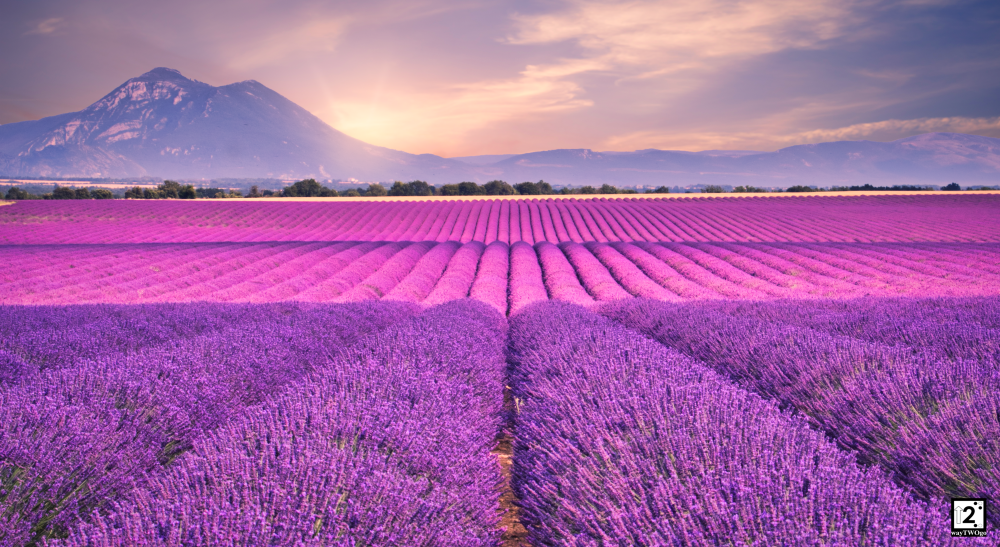
LAVENDER
July 2023 by Jeanette Mac Kenzie
Lavender is native to the Mediterranean area as well as northeastern Africa and southwestern Asia where it has been grown for over 2,500 years. In ancient times lavender was used in Egypt in the mummification process. The Greeks used it to ease ailments and to add to their bathing water, In the 16th century it was used to ward off the Black plague.
Lavender plants thrive on poor to medium soil with excellent drainage, full sun and are tolerant of both acid and alkaline soil although they prefer alkaline soil.
The Language of Flowers was most popular during the Victorian age when emotions were expressed through the giving of flowers where each one had a secret meaning. In the Language of flowers lavender represented devotion, levity, silence, grace, calmness, or purity. If mixed with a sprig or two of baby's breath everlasting love was also included in the message.
There are 47 different species of lavender with 450 varieties. For our climate the English varieties are the best choices. Names you may see at local plant nurseries include: Hidcoat, Munstead Jean Davis, Grosso, Provence, Angustifolia, and the hybrid Lavandin. Avoid Spanish, & French varieties as they won't survive our winters. They do have unusual flowers though.
Due to its fragrance lavender is a deterrent to both deer and bunnies as well as bugs in the garden. Dried lavender made into sachets and placed with woolen clothing repels moths. They can also be used with towels, linens, clothing or even placed in a suitcase. Lavender is supposed to be a sleep aide so place a sachet under your pillow.
Harvesting lavender usually takes place in late June of early to mid-July. If you want to use the lavender for wreaths, lavender bottles or lavender wand making cut when top flowers are open, but the rest are still closed. Cut long stems, bunch with rubber bands as the bunches will shrink as they dry. Hang to dry upside down in a dark, well-ventilated area until dry. Check out YouTube for directions with photos on how to make these fragrant delights. Lavender bottles or wands should be made with fresh cut lavender. When lavender is blooming it attracts bees, so I usually leave a few stems for them instead of cutting it all.
If using only the flowers for sachets or potpourri wait until all the flowers are opened before harvesting. Strip the flowers off the stems and place to dry on a screen again in a dark well-ventilated area. You could also just leave the flowers alone to enjoy the plant as it blooms in your garden. This will also give the bees an extended period to harvest the lavender nectar.
Photos of lavender farms in Europe are spectacular as they cover acres and acres. On a much smaller scale you could visit capecodlavender@gmail.com 508-432-8397 a smaller local lavender farm in Harwich MA on Cape Cod. They have a cute little gift shop with lavender products as well as lavender plants for sale. Harvest time is almost over so get there quickly. It is on a dirt road tucked back in the woods.
 NO …. NOT IN MY GARDEN!
NO …. NOT IN MY GARDEN!
June 2023 by Jeanette Mac Kenzie
Some plants can suddenly appear in your garden or on your property without an invitation. Sometimes they are aided in getting there by birds or animals or the wind can blow the seeds there.
The specific plant I am currently referring to is known by its common name Garlic mustard, poor man's mustard, hedge garlic, Jack-by-the-Hedge or in botanical nomenclature as Alliaria petiolata. When crushed the leaves smell like garlic and onion. This plant is a biennial, meaning that its entire life cycle takes two years then it dies.
The first year you will only see a low to the ground rosette of heart shaped ragged edged leaves. The next spring it quickly shoots up stems from 2 – 3 feet tall topped by small white 4 petaled flowers. As the month of June progresses the flowers turn into long seed pods lining the upper stem. Each seed pod can contain up to 16 seeds and there are many pods per plant so some plants can have up to 600 seeds. When ripe, usually in late June, the pods forcibly eject the seeds several feet from the mother plant. Does this give you an idea how this plant can rapidly take over a whole area and spread rapidly? Even though the mother plan dies after 2 years the seeds can be viable for up to 5 years.
Besides the fact that garlic mustard spreads so rapidly there are a few other reasons to get rid of this invasive plant. It is very adaptable to many different environments including forest, field, roadside and beach areas.
Alliaria has a special chemical called sinigrin which it releases into the soil through its root system. This substance is toxic to many native plants and their supporting mycorrhizal fungi. It chokes out native plants which provide pollinators with egg laying sites and food sources. It can kill butterflies that rely on these particulate plants to survive.
Supposedly only the young leaves are edible but very bitter. They need to be cooked thoroughly as they contain cyanide. Best to not even try.
It is believed that this plant first showed up in this country in the late 1800's coming from Europe and Asia. It was used for erosion control and various herbal remedies. European insects and diseases that control this plant population are not present in our country, thus it spread rapidly.
Pull the whole plant up as soon as it is identifies and before it sets seed. This is easiest right after it rains. Don't add to compost instead get rid of it in the blue bags.
Continue enjoying your gardens and attending to them even if only for a few minutes each day.
 TRY SOMETHING NEW
TRY SOMETHING NEW
April 2023 by Jeanette Mac Kenzie
You probably have your favorite flowers and vegetables which you plant each year. There is such a fantastic variety of both seeds and fresh plants available in companies online as well as local nurseries. Why don't you try something new this season. These are some suggestions from some of my favorite online sources.
Heirloom Seeds Shop | Baker Creek Heirloom Seeds, many unique heirloom seeds, no shipping charge
Amaranth Dreadlocks
This 3–4-foot plant has a weeping habit with long dark red tassels. It is a unique fresh cut flower and also dries well. Young leaves are edible.
Globe Gilia
A stunning sky blue to violet color. This annual is a good pollinator plant. It likes hot dry conditions, self-sows and is a good cut flower.
Parsnips are root crop related to carrots. Before the adoption of sugar cane, they were used as sweeteners. After exposure to cold weather the roots become even sweeter. This vegetable was very popular during the 19th and early 20th centuries. It is great added to soup and stew or just cooked by itself with a little butter.
Lemon Cucumber
It looks like a pale colored lemon with white flesh, and is about the same size, never bitter. The vine yields abundantly.
Jarrahdake Squash
This Australian variety averages 10 #. It is ribbed with blue-grey skin and orange sweet, flesh. Harvest when rind becomes dull and dry. Cure for a week in sun to harden the shell and increase storage life.
Dwarf Music Box Sunflower
This multi branching sunflower grows only 40 inches tall. The flowers are yellow, cream or maroon with brown centers. Great for cutting and a favorite for kids. https://www.johnnyseeds.com/
Status Forever Happy
These cut flowers are used both fresh and dried. They are lavender to rose in color. The plants grow 20 –30 feet in height. The clusters are on strong stems.
Marigold Giant Yellow
These tall 36–40-inch plants produce large 3 inches flower heads. They are excellent as cut flowers. There is also an orange variety.
Blue Ballet Hubbard Squash
This variety is only 4-6 # with a much softer skin than the big blue hubbards you are used to. The flesh is sweeter, a bright orange color and fiberless. You don't have to smash it on the garage floor to open it, a knife can be used. https://www.marysheirloomseeds.com
Japanese Hulless Popcorn
The stalks grow about 5 feet tall with 2-3 ears per stalk. Plant after the last spring frost. To harvest for eating strip off the covering of each ear then rub two together to remove the kernels. This is best done with your hands inside a paper bag. A fun project for kids.
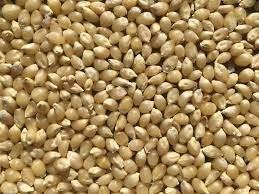
Mexican Sour Gherkins
These tiny cucumbers look like miniature baby watermelons. They have a cucumber taste with a hint of lemon flavor. They grow on vines so give them a place to climb. Another favorite for kids to grow.
Sweet Pea Old Spice Mix
This very fragrant plant has a mix of both solid and striped flowers. Sweet peas have been cultivated since the 1899's. They need something to climb on. These peas are NOT edible. https://www.marysheirloomseeds.com/

Fuzzy Wuzzy Dahlia tubers
These dahlia blooms are a bright pink with white tips. The edges are lanced as if cut by pinking shears. The plants will be about 4 feet tall. If you have never grown dahlias before, why don't you give them a try. They make a lovely addition to your late summer garden.
Basketflower is native to Mexico. This annual flower has wispy petals that are pink lavender. The underside of the fragrant lower forms a woven basket. The flower resembles a thistle but without the prickles.
Hudson valley works with artists who create unique artwork for their seed packets as well as art prints, calendars. note cards, gardening books. https://fedcoseeds.com/
Green Gold Bupleurum
An annual treasured by florists as a filler with its tiny yellow flowers and small green leaves. Each stem opens up so only a few are needed in either a fresh or dried arrangement. So far not very common in this country.
American Elm 'Princeton’
A fast growing, elegant, tall shade tree which is resistant to Dutch Elm disease.
Give a few of these suggestions a try. You may find some new favorites.
Time for Terminology
Feb. 2023 by Jeanette MacKenzie
Since there is not too much going on in the garden these days, take a little time to lean some gardening jargon. You are probably familiar with most of these terms but may only have a hazy idea of what they actually mean. My test is if you can clearly define to others what the term means. So here goes. These terms are in no particular order.
Stratification
The process of mimicking what a seed needs to go through in nature before starting to grow. For plants native to colder regions this means keeping seeds in cold temperatures for a set period of time. The seed packet should tell you how long the seeds need to be in a refrigerator in a closed zip lock bag before being planted. Seeds that are sown outside in the fall will go through this stratification process naturally.
Scarification
This is a process to weaken the thick/hard seed coats of seeds to hasten the germination process. Not all seeds need this procedure. Again, read the seed packet. Scarification makes the seed coat more permeable to moisture. For larger seeds a small cut with a knife will break the seal. An easy method for medium to small seeds is to place them in a shallow container and rub across them with a piece of sandpaper. There are also chemical and thermal methods of opening the seed coat.
Damping Off
This describes the decay of young seedlings at ground level caused by a fungus attack. This can be caused by soil borne disease or over watering. Use a sterilized soil mix. Make sure that all pots, tools, and other equipment is clean. Don't reuse old or garden soil. Avoid fertilizing until several true leaves have grown. Be careful not to get water on the leaves or having plants sit in water. Watering with cool chamomile tea sometimes helps.
Chloris
A yellowing or blanching of leaves due to lack of chlorophyll, nutrient deficiencies or disease.
Bolt
This is a process where a plant will try to produce seeds as quickly as possible when the weather gets too hot for the plant to survive. It is a survival mechanism. Cool season plants such as spinach, cabbage, lettuce, broccoli are apt to bolt when the weather turns hot. Try to prevent bolting by planting in early spring or late summer when the weather is cooler. Mulching as well as watering will help to keep the soil cooler to postpone bolting. Plants that have bolted lose their quality, flavor, texture as all their energy goes into making seeds.
Deciduous
A plant that sheds its leaves each year in the fall and regrows new ones in the spring. For instance, maple trees, peony bushes, phlox, Shasta daisies, roses, mint. Although conifer trees like white pine lose the inner needles on each branch in the fall, they are not considered deciduous as they still have plenty of needles.
Annual
Plants that bloom, produce seeds then die in one year’s time. Marigold, zinnias, basil, dill, corn, lettuce squash, wheat are just some examples.
Biennial
Plants that grow, bloom, produce seed then die over the span of two years. They often produce many seeds. Examples include foxglove, parsley, fennel, carrots, onions, cabbage, sweet William, dusty miller, teasel.
Perennial
Plants that live longer than 2 years. Examples include, lavender, coneflower, garden phlox, daffodils, thyme, mint Rosemary, Hosta, asparagus, rhubarb, day lily.
Rooting Hormone
A substance either powder or gel which help stimulate new root growth on fresh cuttings to make a new plant. Aloe vera as well as cinnamon are also effective in stimulating new roots on cuttings.
Mulching
Covering up exposed soil with 2 – 3 inches of some organic material (shredded bark, salt marsh hay, shredded leaves, pine needles to within a couple inches of the plant. Mulch helps in moisture retention through the hot months, it also tends to reduce the number of weeds growing.
Deadheading
Clipping or pinching off flowers that are done blooming. This process is especially important for annuals as it promotes new flower growth and a longer blooming time. If you want to save seeds or have a plant self seed don't deadhead.
Staking
Some plants have tall stems that tend to bend or fall over with the added weight of blooms. To prevent this, they can be somehow propped up or tied to stakes. In general staking is best done in the spring.
Hardening off
The process of slowly getting plants grown inside used to the varying temperatures, wind, rain, full sun of being outside. This involves moving the pampered indoor plants outside for longer periods each day for a week or two. Start off by putting plants in a shady area increasing the time a few hours every few days then put them in a sunny place. Eventually they can be planted in the garden without too much shock.
Companion Planting
Growing plants near each other that help instead of competing. An example is the native American way of planting called the 3 Sisters. Corn is planted followed by pole beans which climb the corn stalks. Squash is the 3rd sister which shades the ground, and its prickles discourage critters from eating the beans and corn. Another example is when dill and coriander are planted near bell peppers it increases the presence of beneficial insects. Plants that don't compete for the same nutrients make good companions. Bush beans draw heavily on phosphorus while potatoes need a lot of potassium. Inter-cropping of these two types of plans is another way of companion planting.
Determinate
Tomatoes that grow to a certain size usually 3-4 feet and then stop. Sometimes called bush. Good for small spaces and containers. Most ripen within a 2-week time period.
Indeterminate
Refers to tomato plants that keep growing until a frost kills them. These tomato vines need a strong system to keep them from sprawling on the round. Tomatoes ripen throughout the season.
Cranberries
Autumn 2022 by Jeanette Mac Kenzie

During the fall in Duxbury and surrounding areas, one of the prettiest sights is on a bright sunny day with a blue sky, a flooded bog covered with bright red floating cranberries being corralled for harvest.
There are only 3 fruits that are considered native to N. America, Concord grapes, blueberries and cranberries. Cranberries are considered healthful because they contain bacteria blocking compounds that are believed to be helpful in preventing urinary tract infections, ulcers, and destroying certain bacteria that lead to gum disease.
Native Americans used cranberries to treat wounds, as a dye for rugs and blankets, as well as to eat. They mixed the berries with venison and fat and pounded it into what they call pemican. Our New England sailors used cranberries to prevent scurvy due to its high vitamin C content.
Cranberries are a unique fruit. They only grow and survive under specific conditions. 1. Requires acid peat soil 2. Needs adequate fresh water 3. Full sun 4. Growing season from April to Nov 5. Dormancy period of winter to provide a chilling time necessary to mature fruiting buds. Normally growers don't have to replant cranberry vines as they will survive indefinitely. Some vines in MA are more than 150 years old! Cultivation began in 1816 when Captain Henry Hall of Dennis, MA noticed that wild cranberries seemed to grow better when sand blew on them. He began spreading sand on the berries that grew near his home. Nowadays cranberry growers spread 2-3 inches of sand every 3 years.
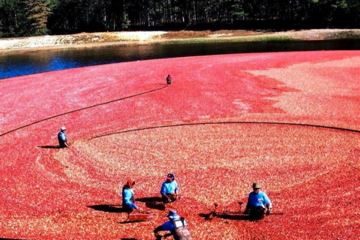
Only about 10% of today's cranberries are dry harvested and sold as fresh cranberries. The other 90% are wet harvested and used for juice, sauce or sweetened and dried and sold as Craisins. The water in the bogs is reused by connecting canals that carry it from bog to bog. I have heard that bogs owned by different growers in Duxbury share the water via these canals and holding ponds. Besides flooding the bogs for harvesting, they are also flooded to protect the berries from both spring and fall frosts.

MARKETING In the 1980s, international markets developed for cranberry juice and blends. In the 1990s demand increased worldwide for diversified cranberry products.

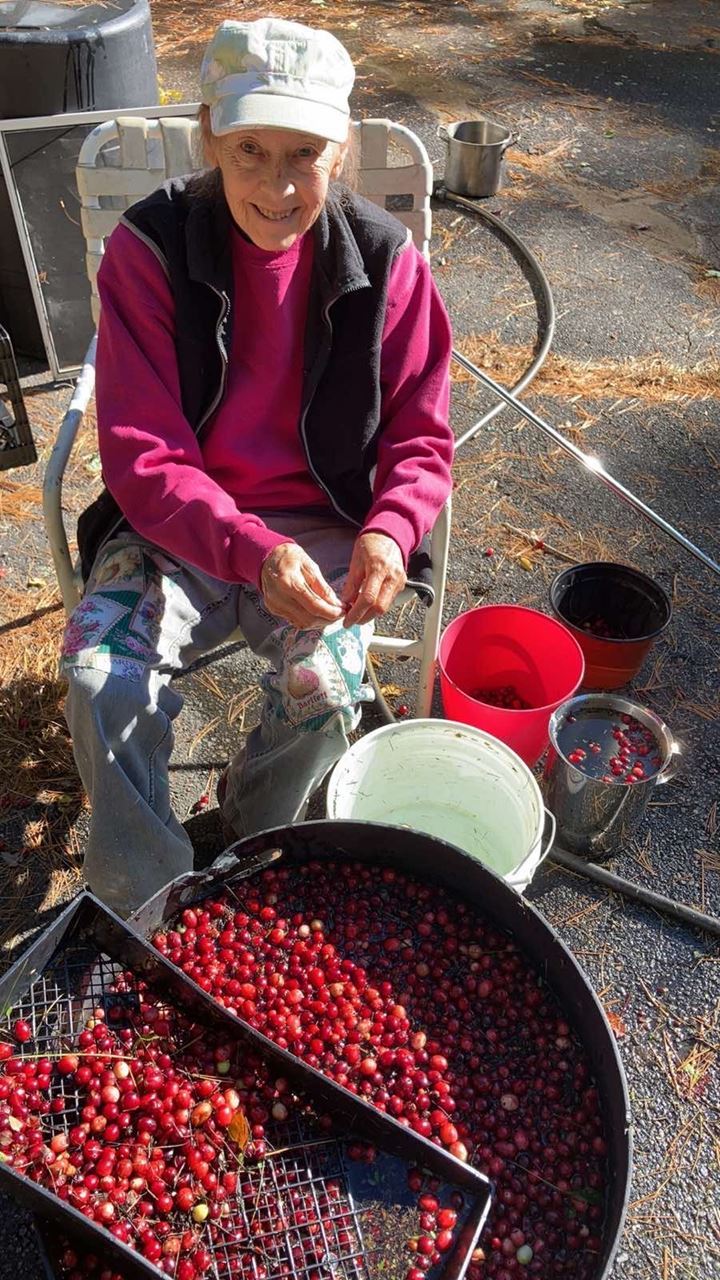
Fresh cranberries are available from mid September into December. They will keep in your refrigerator for about a month. If you want to use cranberries the rest of the year, buy fresh and freeze them unwashed in double plastic. Defrosting isn't necessary for most recipes. They can be kept frozen for 18 months. For recipes ranging from basic sauce to cranberry/pecan coffee cake go to www.cranberries.org. Home made cranberry sauce is very easy to make. Try mixing in various other ingredients such as blackberries or my favorite - lime zest with a little juice. If you are into canning, process some for later use. It can be used not only with turkey and chicken but in sandwiches, over ice cream, pancakes, corn bread, waffles and in various recipes such as the cranberry-vanilla muffins pictured here.
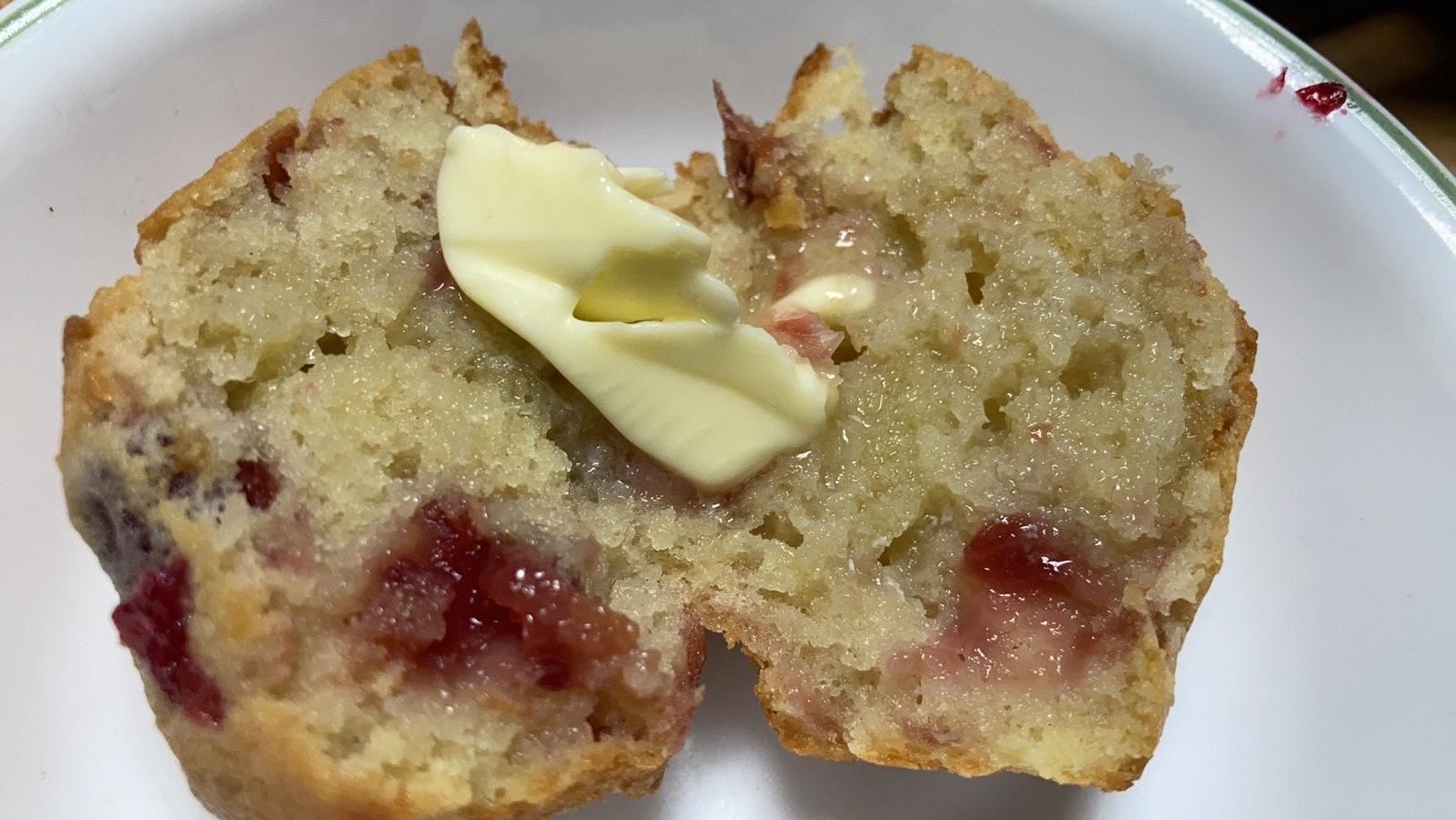
Methuselah Generation
September 2022 by Jeanette Mac Kenzie
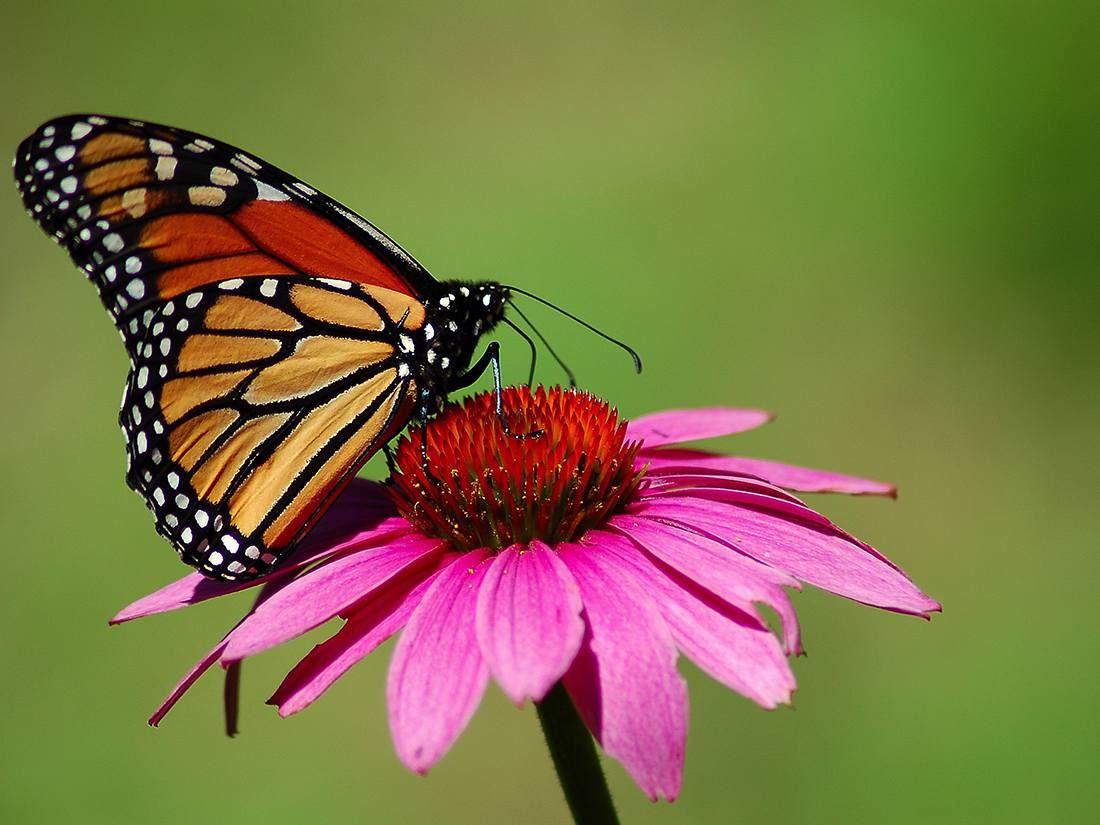
You may have recently read or heard that the Monarch butterfly has been classified as “Endangered” by the International Unions for Conservation of Nature. In the past 20 years the number of Monarchs has decreased 80%. The growth of GMO (genetically modified organism) crop planting and increase in chemical herbicides kills the milkweed plants that Monarchs need to survive. Climate changes, urban sprawl causing loss of habitat, parasites and diseases have also contributed to the problem.
Most butterflies overwinter in various ways such as larva, pupa and in some species even as adults. Monarchs however can't survive the cold winters of northern climates. The Monarch is he only known butterfly to make a a 2 way migration each spring and fall to avoid the cold as birds do. Using environmental clues: of decreasing day length and temperatures, aging milkweed plants, and decreasing nectar sources they begin their great migration in Sept and October each fall. Somehow they know that when the sun's angles is between 48 and 57 degrees above the horizon at noon it is time it is time to pack up and start flying south. These butterflies that migrate south are called the Methuselah Generation named after a man in the Bible who lived 969 years.

These particular butterflies who only occur in the fall, are a little bit larger, live longer, travel farther and reproduce on a unique schedule . They travel from 50 to 100 miles per day. Depending on their starting point whether is it southern Canada or Rhode Island their migrations time can take up to several months Each individual Monarch makes the almost 3,000 mile trip to central Mexico, parts of Florida or Texas. Monarchs west of the Rockies migrate to southern California.

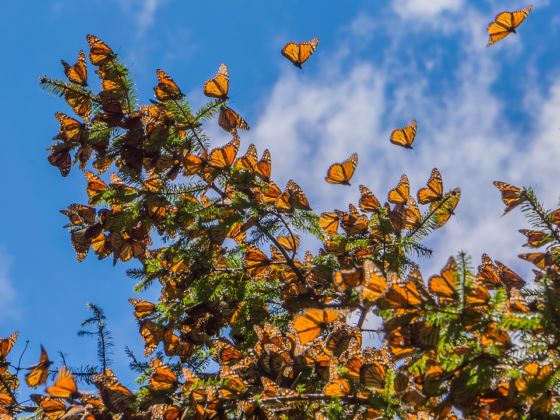
These Methuselah butterflies are fully grown but not reproductively mature when they come out of their chrysalis stage. They won't be able to mate until the following spring when it is time to migrate back north. Breeding Monarchs only live 2 – 6 weeks while the southern migrating Methuselah Generation lives 8 months. In the spring on the migration back north it takes 3 to 4 generations to make the flight. The loss of milkweed along their route is partially what is to blame for the decline in the Monarchs as the larva can only survive by eating milkweed plants.

Monarch on milkweed
In preparation for their great southern migration the Methuselahs must build body fat for fuel and to survive winter in Mexico. As gardeners how can you help these beautiful creatures. Plant some of the fall blooming nectar plants to provide nutrition that the Monarchs need. Plants to consider are New England Aster, anise hyssop, Joe Pye weed, coneflower, blue mist flower, lantana, marigolds, Autumn Joy sedum, blazing star, golden rod and of course milkweed for next years population of Monarchs. You may not want to have plants such as golden rod in your formal garden but consider having a wild area on the edge of your property for some of the wild native fall blooming plants to grow.

Monarch on blue mist

Monarch on teasel
WHATS BLOOMING IN JULY
July 2022 by Jeanette Mac Kenzie

Top of the list is probably Day-lilies. There are literally thousands of varieties to choose from colors ranging from near white, yellow, red, pink, purple, lavender, peach, near black, bronze, bi-color. Local nurseries carry some varieties but if you are looking for a particular one you may want to check out some of the many speciality nurseries on line. Once established the plants are drought tolerant but do appreciate watering during a drought. Day-lilies attract bees, butterflies, humming all which help in the pollinating process. Look for plants with lots of buds, as each flower only lasts one day.
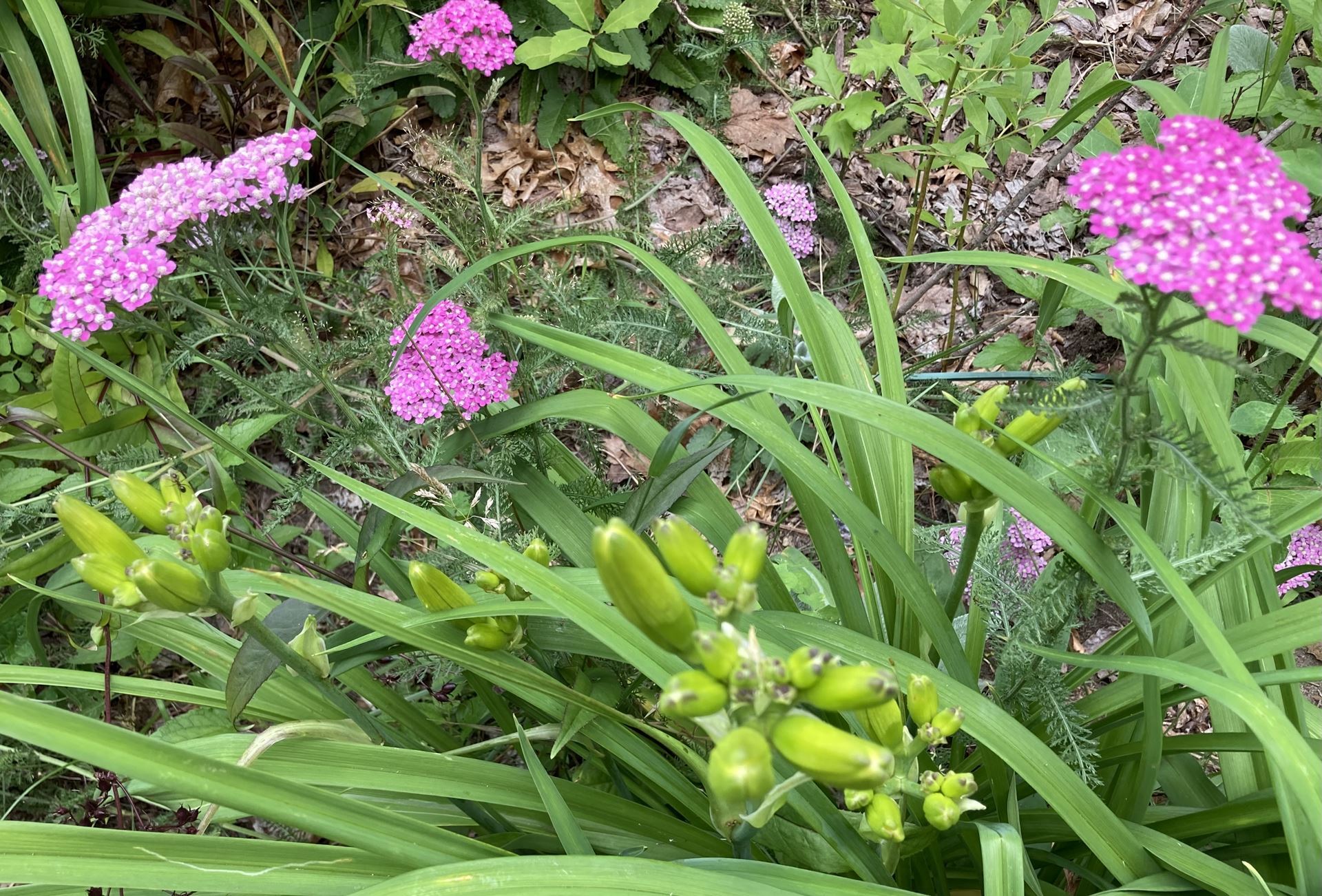
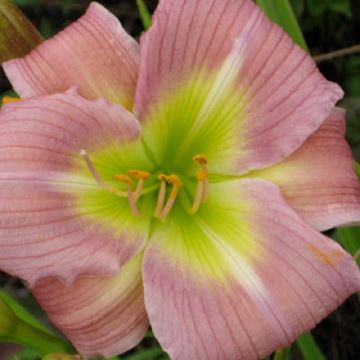

If you like visiting local gardens check out the Hanover Garden Clubs upcoming garden tour on Sat. July 24, 2022 from 9:30 - 4 . For tickets call Joan Thomas 781-826-7952. The well known lecturer and Day-Lilly specialist Susan Mahler's garden is included in the tour. She has spoken to our club a number of times over the years.
The many varieties of lavender also bloom during the month of July. The plants are alive with both honey and bumble bees. When harvesting the lavender blossoms just move slowly and the bees won't bother you. If you want lavender stems to dry on the stalk cut when about 2/3 of the blooms have opened. If on the other hand you just want the blooms for potpourri,etc. Wait until all the flowers have opened. Dry on a screen out of direct sunlight in a warm area. When dried then strip the blooms from the stems. I always leave some of the smaller stems on the plants for the bees.

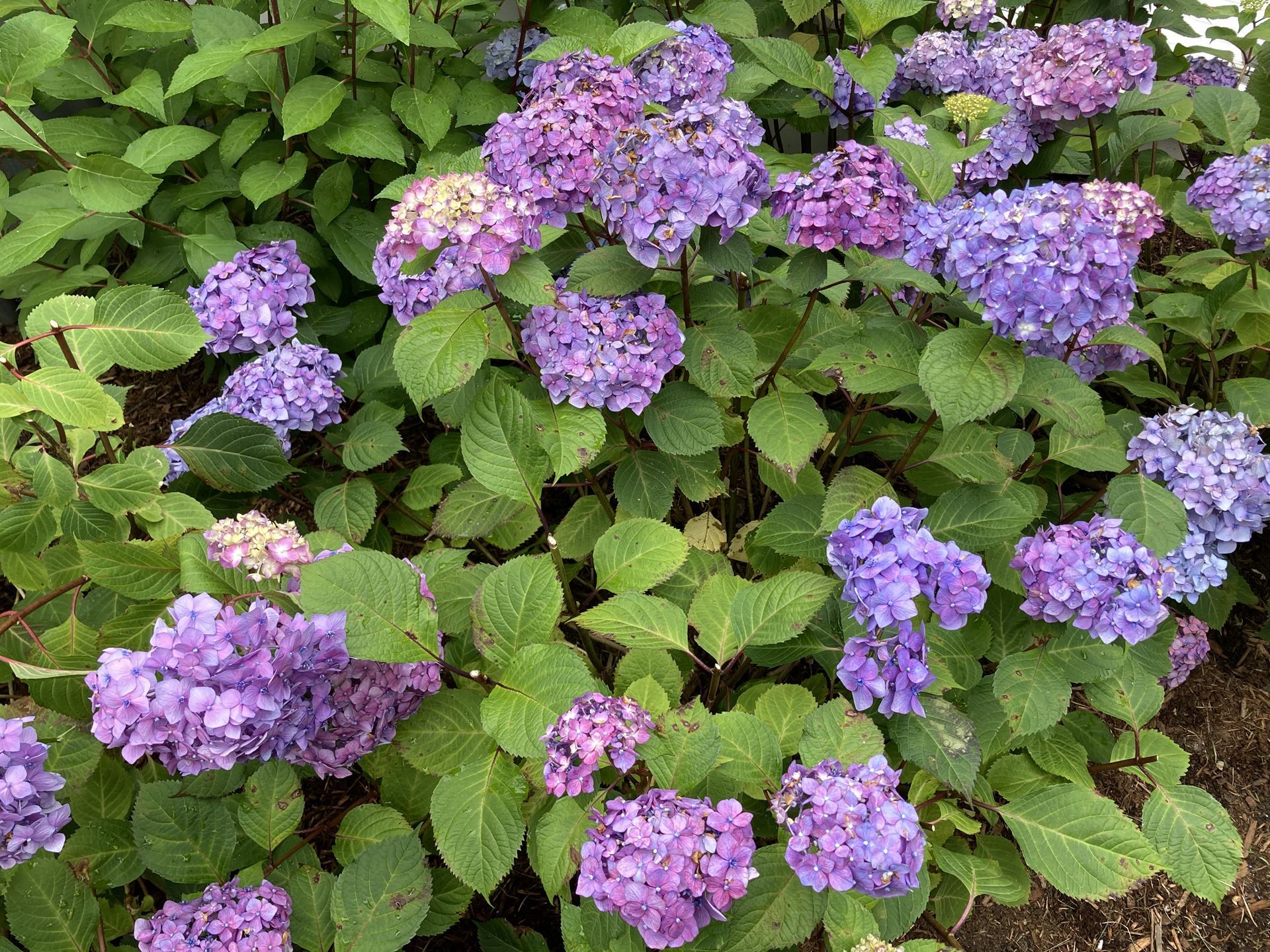
Those of you who participated in the recent club's hydrangea festival in July are aware of the many varieties and color variations of this shrub. Blossom colors of white, lime green, blue, purple, pink, red and combinations of these colors are currently available with new hybrids showing up every so often.
A not so common July bloomer is the white flowering False Baby's Breath (Galium aristatum). This lacy, delicate looking mounding plant grows up to 3 feet tall in full sun. Although it doesn't hold up in cut arrangements quiet as well as Baby's Breath it is very attractive in the garden where it sets off nearby colorful flowers. It is related to the small, spring blooming ground cover, shade lover , herb sweet woodruff (Galium odoratum) which is used to flavor “May wine”. Beware of its other relative (Galium aparine) Cleavers – Stickyweed which has fine hooked like hairs that readily adhere to anything and rapidly spreads.

For a bright eye catching yellow Moonglow Yarrow can't be beat. This bloom hold up a long time in the garden as well as in both fresh and dried arrangements. It is drought tolerant too. The yarrows also come in pink as well as other shades.
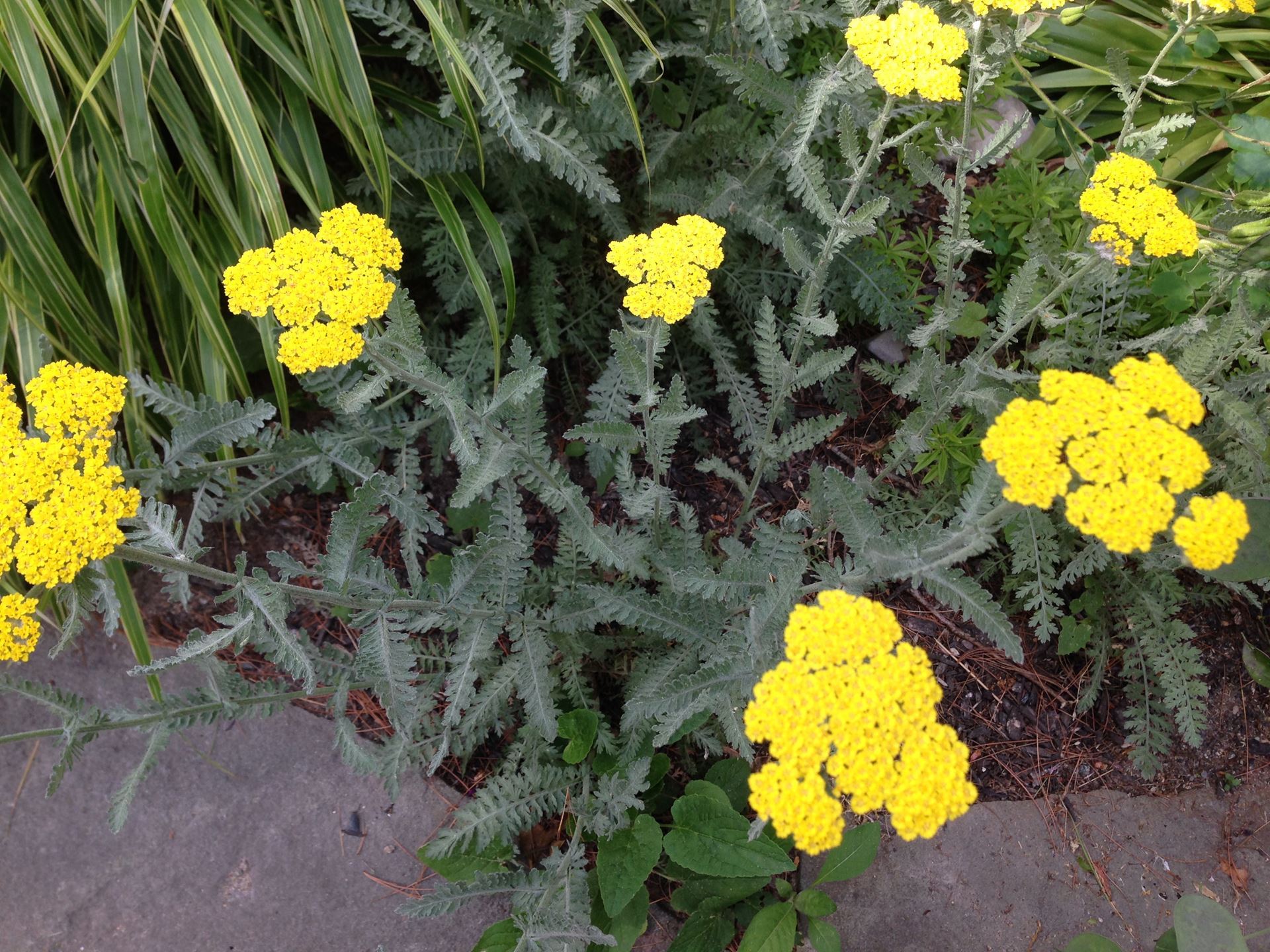
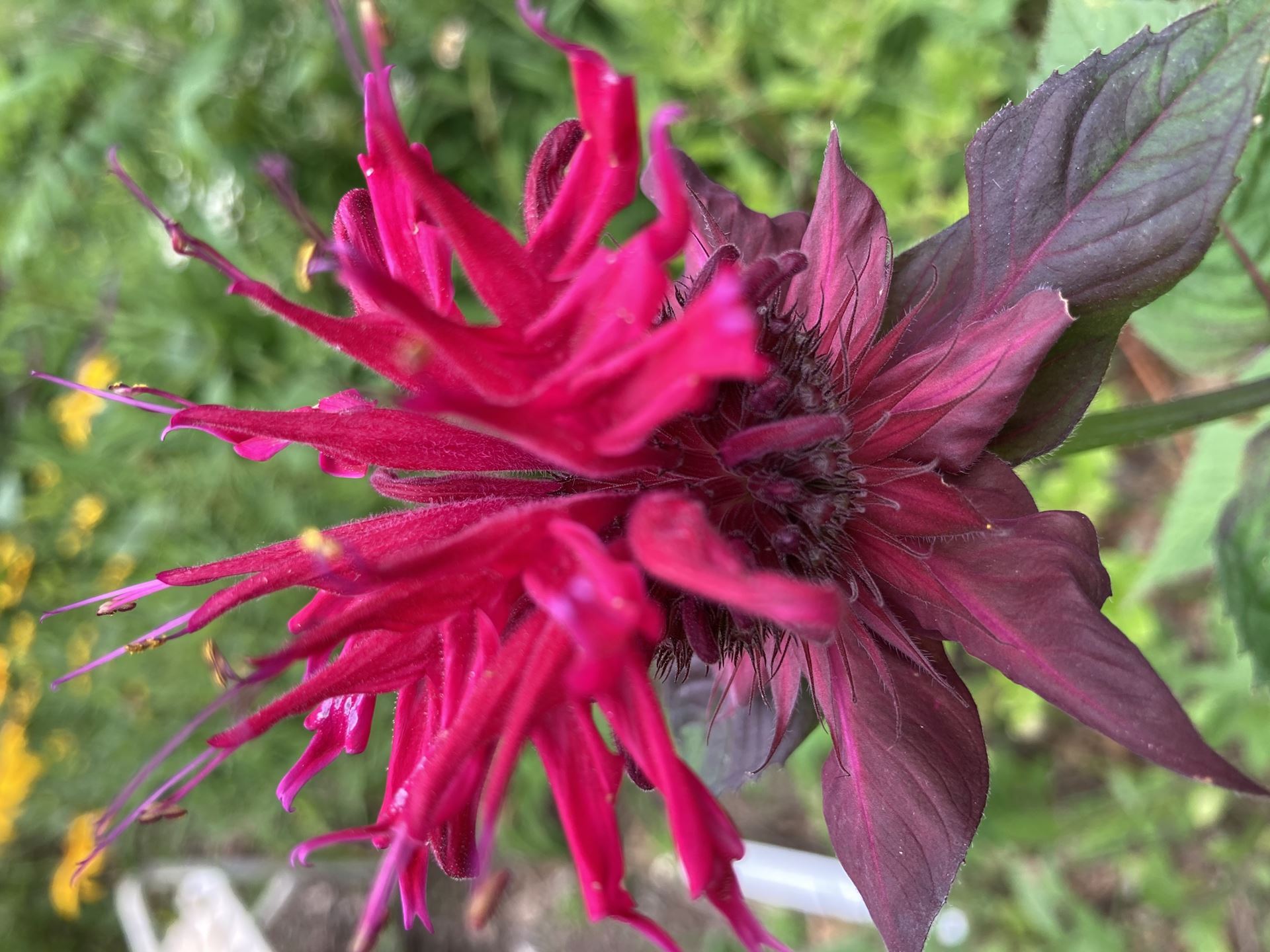
Another plant that begins blooming in July is Monarda commonly referred to as Bee Balm. Obviously it attracts bees as well as humming birds and other beneficial pollinators but is deer and bunny resistant. This native American plant became quite popular in history after the Boston Tea Party. The colonists were taught by the Native Americans that the leaves of Bee Balm could be used to make tea to replace the highly taxed tea from England some of which ended up in Boston harbor. It is the source of the antiseptic compound thymol used in some commercial mouthwash formulas.The colorful flower petals are edible and add a splash of color to salads. The plant grows about up to 4 feet tall and will spread by its root system. It is adaptable to both sun and partial shade. There has been much hybridizing of this plant to get varying heights and colors of blooms. Bee balm varieties can be found in colors and shades of white, pink, red, lavender and purple.
Every garden in town has a different combination of plants and many change from year to year. This is only a partial list of what is blooming in July in Duxbury. Find a chair in the shade, with a cool drink a few munchies and sit back and enjoy natures bounty as you survey your own garden. If you are lucky a butterfly may even land on your shoulder.
“IN EVERY GARDENER THERE IS A CHILD WHO BELIEVES IN THE SEED FAIRY.”
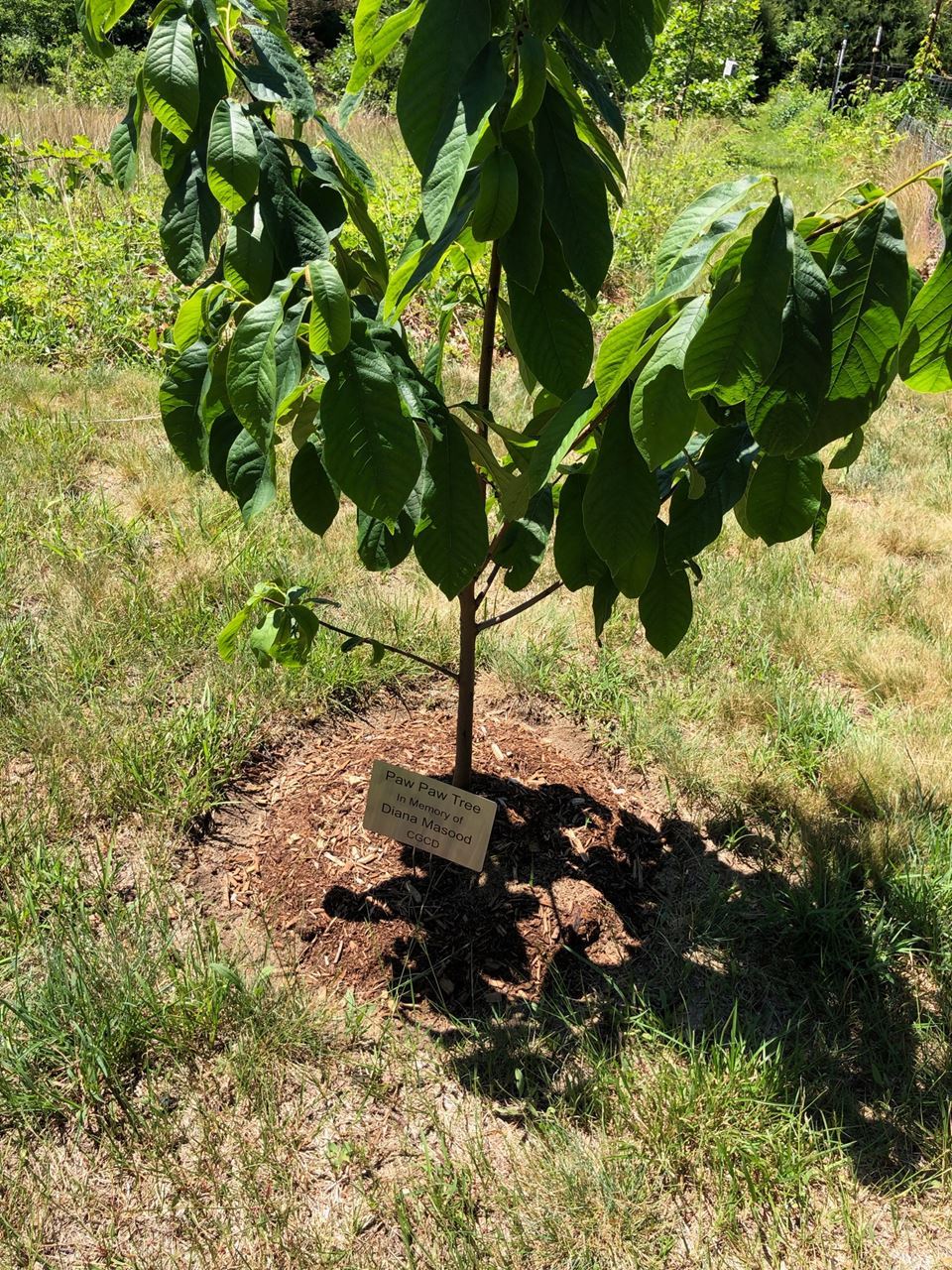
To celebrate the 150th anniversary of Arbor Day the club planted a Paw-paw tree at the Stewart property where we tend several vegetable plots. This tree was dedicated in memory of Diana Masood a very active club member who donated her time, talents and energies to the garden club for many years.
Paw-Paws / Asimina triloba
I am guessing that many of you have never heard of paw-paws before even though it is a native in 26 of the eastern states of this country, as well as Canada. It grows wild from the Gulf Coast up to the Great Lakes and is often found along the banks of rivers and streams.
So what exactly is a paw-paw? It is a deciduous large shrub to small tree reaching up to 20 feet in height. Paw-paws spread by sending out runners which grow into thickets. The long leaves are alternate on the stem emitting an odor when bruised. The bark is thin, smooth later becoming warty with blotches. The flowers are plentiful as well as beautiful but have a disgusting smell as they are pollinated by flies. The flowers can be white, purple or maroon with 3 outer and 3 inner petals. It produces a large yellowish green to brown colored fruit.
Paw-paw fruits are 6-8 inches long, kidney shaped and grow in clusters like bananas. The sweet flesh is orange when ripe and has been said to taste like a combination of bananas, mango and pineapple flavors. There is a thin layer of phenolic compounds between the skin and the fruit which gives a bitter taste. Simply scrape away this layer. The consistency is often compared to custard or avocados. The flesh can be eaten raw but is also used to make ice cream and baked deserts. Paw-paws are loaded with dark brown toxic seeds that need to be discarded. One source recommends scooping out the flesh then removing the poisonous seeds. Caution, a few people become nauseous after eating unripe over ripe paw-paws.
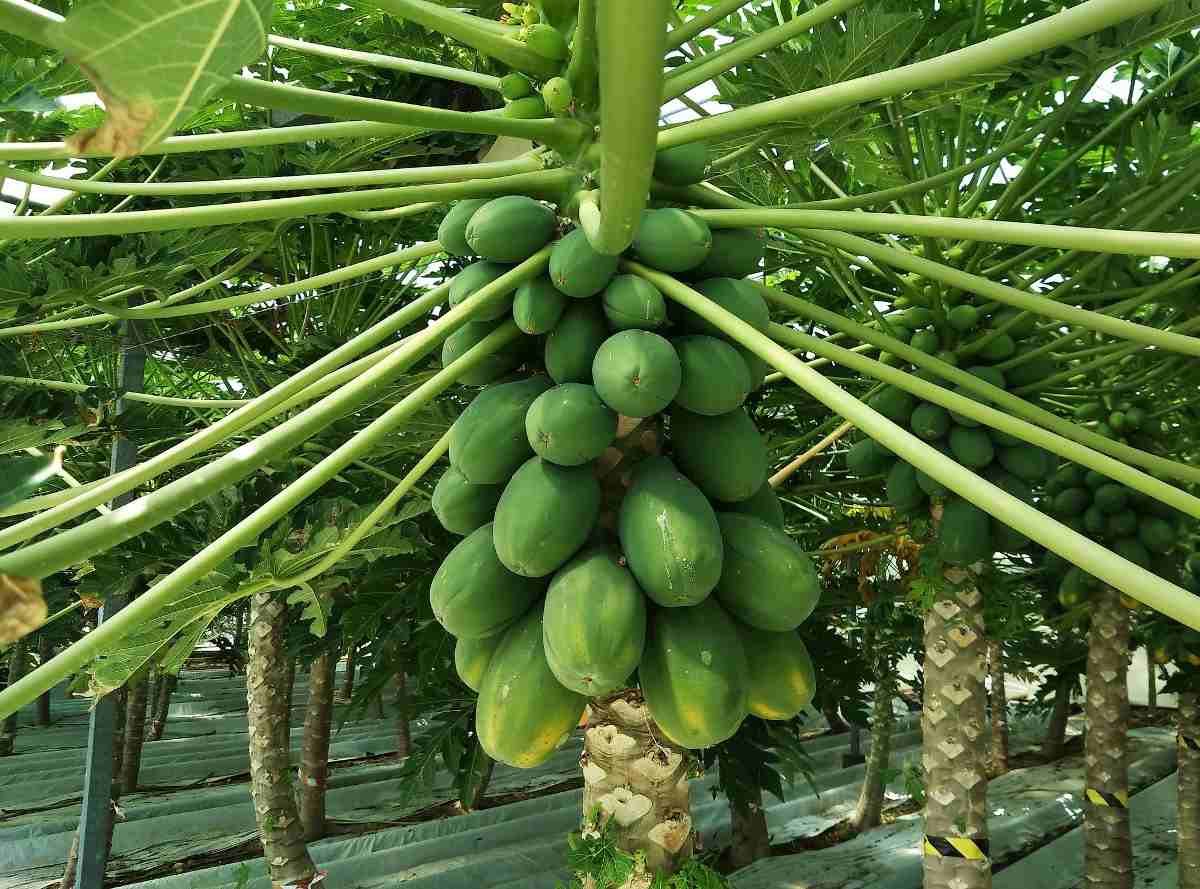
Historically the tough fibrous inner bark of the paw-paw tree was used by native Americans and settlers for making ropes, fishing nets and mats as well as for stringing fish.
Two past presidents liked paw-paws. George Washington liked paw-paws served as a desert. Thomas Jefferson grew them at his home in Monticello. Daniel Boone and Mark Twain were also fans of the paw-paw. In the Sept, 1806 records of the famous American early explorers Lewis & Clark stated that paw-paws saved them from starvation along part of their route.
Zebra swallowtail butterflies find the paw-paw a good host as their larva feed on its leaves.
If you really want to get into paw-paws there are festivals usually in late Sept. in various parts of the country including Pennsylvania, Ohio and West Virginia. Of course there are competitions for the largest and best paw-paws, samples of all sorts of foods and beverages made using the fruit, trees for sale and of course, eating contests.
| |
A FEW GARDENING TIPS
May 2022 by Jeanette Mac Kenzie
*Sometimes gardening tools just seem to disappear. To solve this, cover the handles with bright colored masking tape.
*Did you know that Miracle Whip can be used to clean sap off of garden tools as well as you hands.
*Sowing small seeds: Put the seeds in an old salt shaker with a small amount of sand and gently sprinkle them on the soil. Run a strip of toilet paper down the furrow and plant the seeds on top. You can see where each seed is and the TP will break down in the soil.
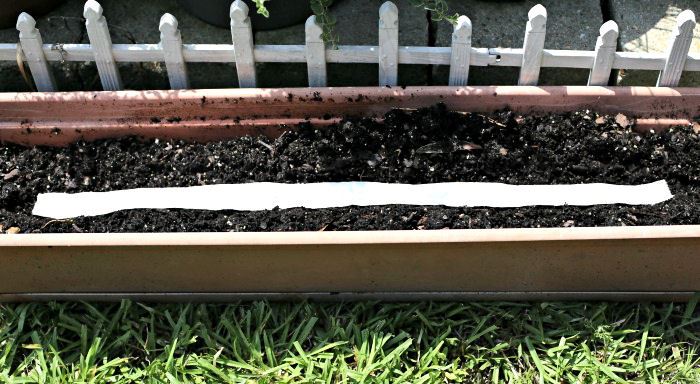
*Marigolds are said to deter some types of garden insects. Try mixing some in with your veggies.

* Extend your harvest season of fast growing vegetable by making several small planting every few weeks.
*Double cropping: Sow radishes with carrots. The radishes will sprout quickly and prevent weed. After the radishes are harvested the slower growing carrots will take over.
*Beets and broccoli are another good combination as beets grow fast while it takes awhile for the broccoli to fill in.
*If your veggie garden only gets 6 hours of sunshine or less try growing these shade tolerant plants: lettuce, spinach, Swiss chard, endive, cabbage, sorrel and arugula.
*The dried stems of harvested grains (wheat, barley, oats) are called straw. Straw is preferred over hay as a mulch because it is usually weed free.

*Pine needles also make a good mulch and they are usually readily available with our abundance of white pine trees.
*Best herbs for a shady garden include angelica, chervil, chives, lemon balm, lovage, mint, parsley, mint, sweet cicely, sweet woodruff, and tarragon.
*Weeding is much easier done when the soil is damp and the weeds are small, then mulch the area to prevent new weed seeds from sprouting.
*Get rid of weeds in your sidewalk before they set seed. Use a vinegar with a high concentration of acetic acid 15-20%. Liberally spray on sidewalk weeds, being careful along the edges so you don't destroy wanted plants. Vinegar destroys a plants ability to retain water.
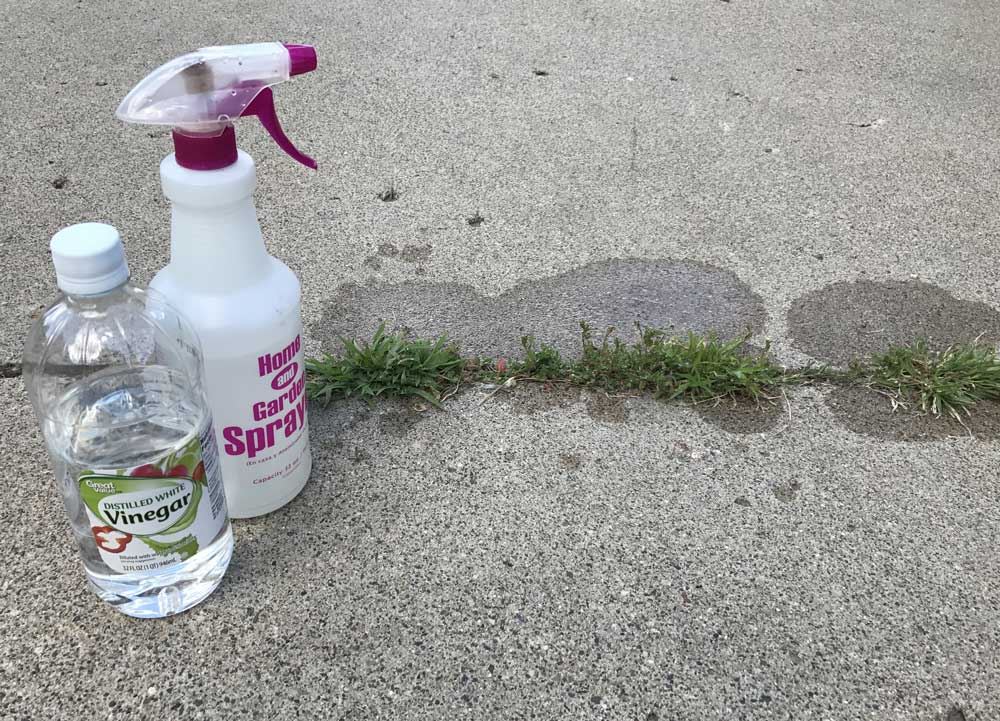
*Room to Grow: remember when planting new perennials that most won't reach their full size for about 3 years so space accordingly.
*If you find keeping up with a perennial garden is becoming stressful due to age, lack of time or energy start replacing with flowering shrubs, which need less care.
*When cutting flowers for bouquets cut them early to mid morning. Carry a bucket of water to plunge then into then bring inside to a cool area before arranging.
*Saving peonies: cut stem when in bud stage with a bit of color showing and they feel like a marshmallow. Immediately wrap completely with newspaper or carefully place in a large zip lock bag. Store in refrigerator until ready to use days, weeks or even months later. Recut stem place in water and watch the blooms open. Avoid having fruit in the refrigerator as they release a gas which will prompt the flowers to open.
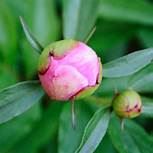
Put a mailbox near the edge of your garden to keep a few hand tools, a magazine, a beverage and a bug proof snack. Nearby have a comfortable chair where you can relax and watch the butterflies flutter through your garden. Sit back and enjoy your garden.



PHENOLOGY
April 2022 by Jeanette Mac Kenzie
When should you plant outside? Some seed packets say plant when the soil is warm. A few old time farmers would drop their pants and literally sit in the soil to test the temperature. I don't recommend this method as your neighbors may be calling the police on you.
“Hardiness zones were developed by the U.S. Dept. of Agriculture to determine the plants that grow best in the climate were you live. Each zone represents the last frost in the spring and the first frost in the autumn. We live in Zone 6a where the last spring frost is approximately April 15 and first autumn frost is Oct, 15. As our planet warms the zones are updated, the last two updates were in 1990 and 2012.
Since these average frost dates are just approximate, observing natures signs can be helpful. PHENOLOGY (fi-na-le-je) is the study of the seasonal timing of life cycle events such as when certain animals reproduce, or migrate and when different plants leaf out and bloom. This timing is directly affected by day length, temperature and rainfall. Weather can be different each year so let the plants and animals signs indicate when to plant.
Phenology not only helps you decide when to plant various crops or flowers but is also helpful in knowing when certain DESTRUCTIVE INSECTS become active. For instance when foxglove flowers open watch for Mexican bean beetle larvae. When crab apples start to bloom watch for Eastern tent caterpillars to hatch. When morning glory vines start to climb Japanese beetles arrive.
There are many sites in computer land about phenology. One which has a long list of what to look for before planting vegetables is harvesttotable-phenology.com. You also might want to look at The Old Farmer's Almanac both on line or the magazine itself. Become an educated gardener and learn when to plant in the spring.
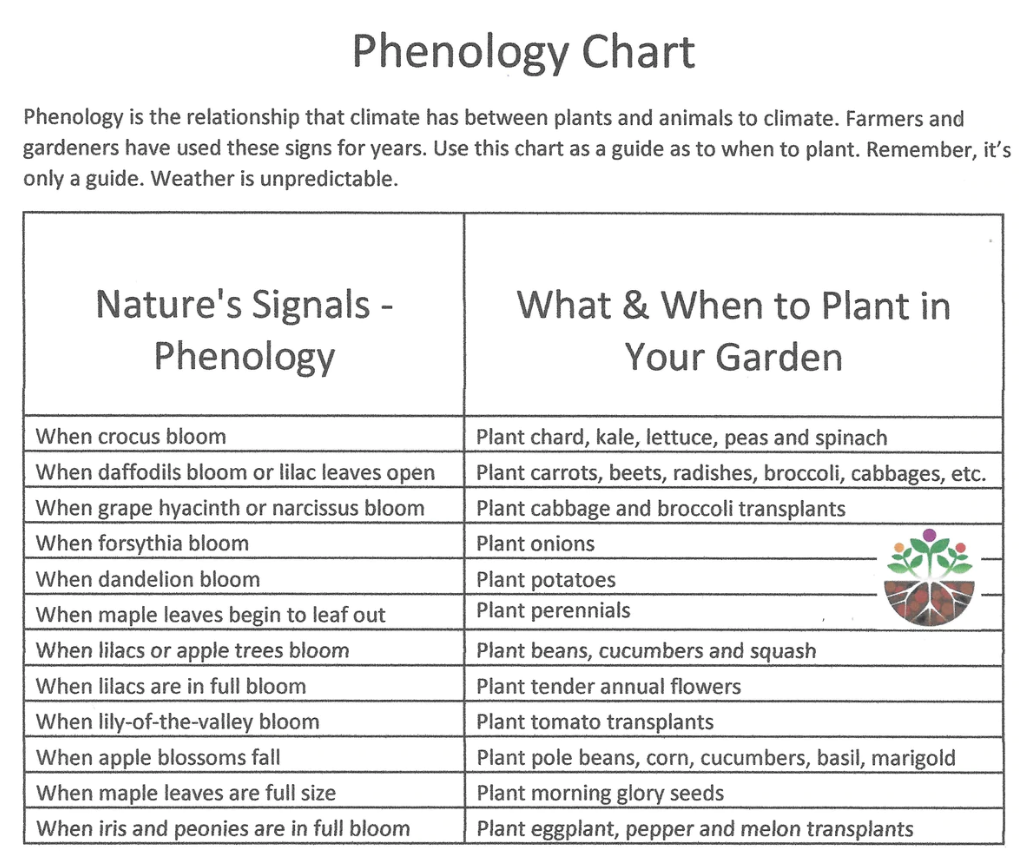
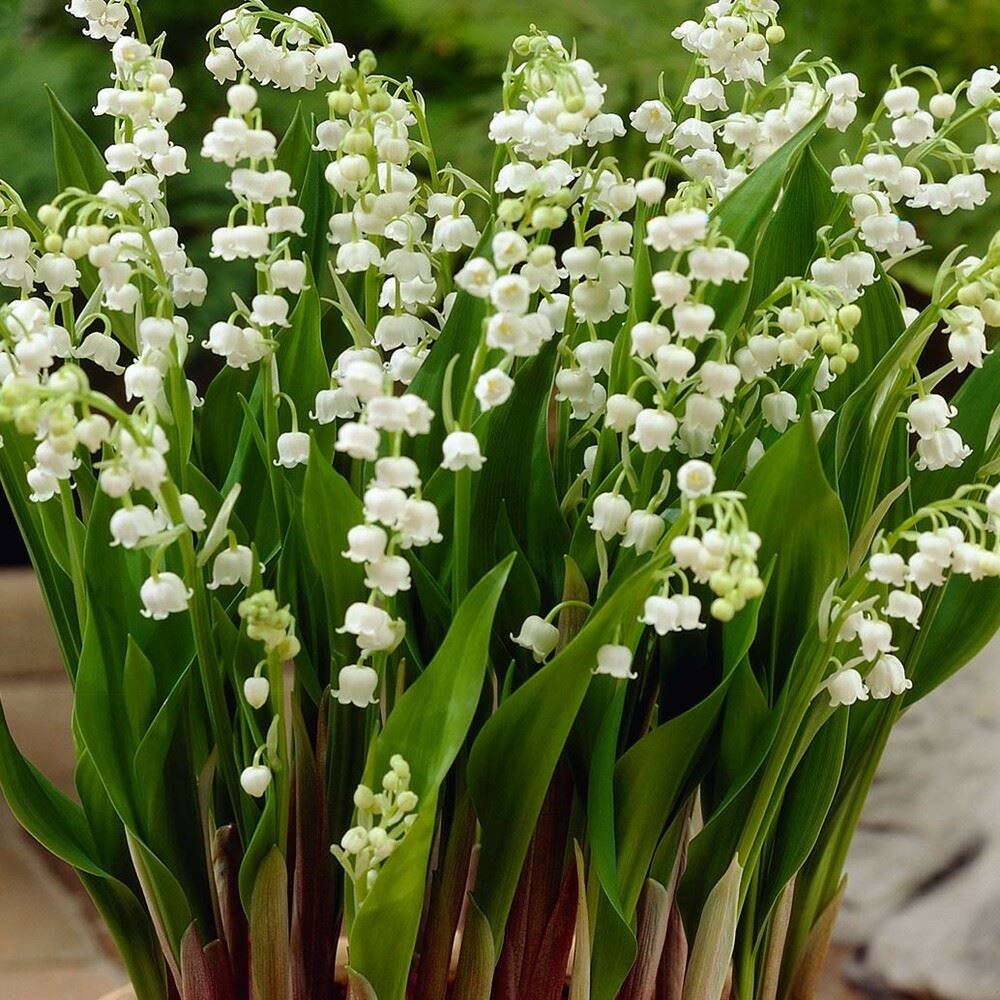
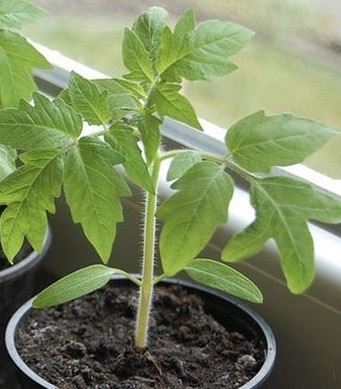
FLOWERS IN FEBRUARY
February 2022 by Jeanette Mac Kenzie
To raise your spirits during these cold, drab, late winter days go outside when the temp is above freezing and prune some of your flowering shrubs and trees. How is that going to help? It will, if you bring some of those smaller branches inside and make them bloom. This process of getting blooms earlier is called FORCING.
Most spring blooming ornamental trees and shrubs set their flowers buds during the previous growing season. By February these buds have experienced the minimum dormancy period of about 6-8 weeks so they can usually be forced to open early. Also late winter is the best time to prune deciduous trees and large shrubs to improve the shape of the plant, remove crossing branches & old or diseased wood.
The branches to be forced should have a diameter no larger than 1/2 inch. Look carefully at the branches you choose. Leaf buds are smaller and pointed while flower buds are round and fat.
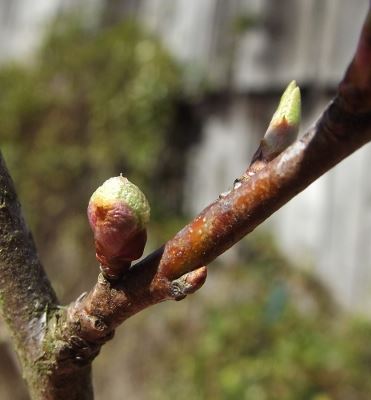
Inside prepare a bucket of hot tap water (not scalding - the temp you would use for hand washing dishes. Hot water has the least amount of oxygen. If oxygen gets into the stems, it can block water from being taken up causing dehydration. Add floral preservative which will promote hydration and retard bacterial growth, keeping the water clear for up to a week. You can make your own preservative with 1 Tablespoon of Listerine or 1 teaspoon of a lemon-lime soda per quart of water. Hold the stems underwater, recut at a sharp angle an inch or so above the original cut. The stems will quickly absorb the water. For branches larger than 1/2 inch you can also cut an X in the base of the stem to allow more water to be absorbed.
Now you have a choice to make. !. You can set the bucket of branches in a cool area of 50 - 60 degrees and wait for 1 - 3 weeks for the buds to open. OR 2. immediately arrange the branches and put them where you can watch the buds slowly open up. Which ever method you use, make sure you change the water and add new preservative as needed. Misting also helps.
Keep the branches out of direct sunlight and away from any direct heat sources. Flowering branches should last about a week while those forced for their leaves will last much longer. Some of them may even put out roots for planting outdoors later in the spring.
Now WHAT TO FORCE! Forsythia with its warm yellow flowers are probably the easiest shrubs to force. Witch Hazel, cherries, peaches, pears, apples, red -bud, Bradford pear, quince, crab-apples, lilacs, magnolias, spirea, mock orange, beech and willows are among the branches that force well in our area. If after 2 – 3 weeks nothing seems to be happening to the branch go out and cut new samples OR try other varieties you are growing that are not mentioned here.
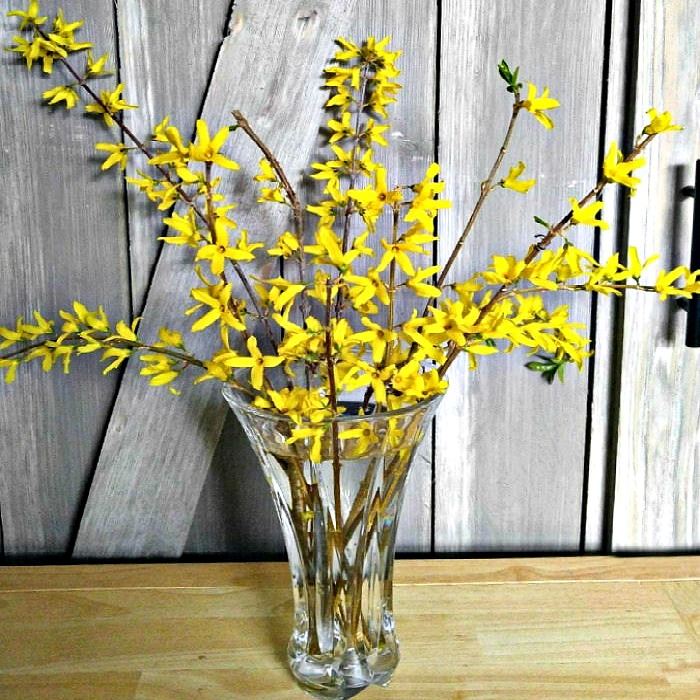
Pussy willows are another shrub easily forced. When the buds on the pussy willows develop and open the fuzzy, soft, wooly catkins you have a choice to make. 1. Remove the branches from water and let them dry and the stems may be kept for several years. OR 2. Keep in water until eventually the catkins will fall off and the stem will develop roots. These stems may then be potted up and kept inside until April when they may be planted out to form another pussy willow bush/tree. Because their roots are aggressive plant away from under ground water sources as well as underground utilities.

Pussy willows are (Dioecious) meaning the female and male parts are found on separate plants. The female catkins are smaller and greenish while the male catkins are are larger and more spectacular with a yellowish hue. Humming birds have been known to use the fuzz to line their nests. As the pussy willow is not pollinated by wind it attracts insects , butterflies and birds to do the pollination. When blooming in the spring the whole plant is alive with these pollinators.
Force branches in February & March to have an early sample of the spring to come. To extend the bloom time in your home, cut some new branches each week to enjoy early spring flowers indoors.

IT’S DAY DREAMING TIME
January 2022 by Jeanette Mac Kenzie
Today it is 10 degrees outside with the prediction of more snow on its way. I am staying inside by the wood stove and daydreaming about next summer’s garden. The seed and plant catalogs are already arriving in the mailbox as well as on line. I’ve seen a few interesting purple colored veggies featured so I decided to do a bit of research on purple.
Purple clothing and fabrics have been associated with power, wealth and royalty for centuries. Why – because of the extreme cost of the dye originally used to produce it. Way back when, the only source of purple dye came from a small mollusk that was found in an area of modern day Lebanon. It takes 9,000 mollusks to make just one gram of purple dye. Queen Elizabeth I forbad anyone but close relatives of the royal family to wear purple. In 1856 a young English chemist William Henry Perkin, accidently created s synthetic purple compound that he patented and soon purple clothing was more available for all.
What about purple in the plant kingdom? The water-soluble plant pigment that causes purple, blue and some red tones in fruits, vegetables and flowers is called anthocyanins. This pigment protects plants from sunlight damage and cold temperatures and other stresses as well as attracting pollinators like bees and butterflies.
Eating purple veggies also helps us, as they are an anti-inflammatory, warding off cardiovascular problems, cancer and helping in memory and other age related problems. Purple veggies are higher in antioxidants that play a role in preserving human health.
One of my favorite purple veggies is a bean that comes in both bush and pole varieties. As the beans cook in water they turn a dark green while the water becomes purple. Kids are fascinated by this change. When cut in diagonal slices they can be quite attractive served raw in a tossed salad as the outside of the bean is purple and the inside is green. If you want to try a bean that is a bit more exotic try the Chinese Red Noodle Bean (Vigna unguiculata). The beans grow to about 18 inches long in clusters of up to 4. Only 1 or 2 beans are enough for a serving. These beans plants definitely need something tall to climb on and may cause curious neighbors to want to see what you are growing!
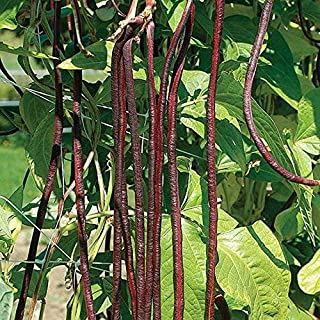
Who doesn’t like sugar snap peas? A fairly new one on the market is purple and called Sugar Magnolia Tendril Pea. It grows on vigorous vines that can reach up to 8 feet long with lots of curly tendrils that attach to whatever they can grab. The flowers as well as the pea pods are shades of purple while the peas inside are green, which makes them decorative as well as a kitchen favorite. Mine never make it to the kitchen, as they are my favorite gardening snack along with Sun Sugar cherry tomatoes.
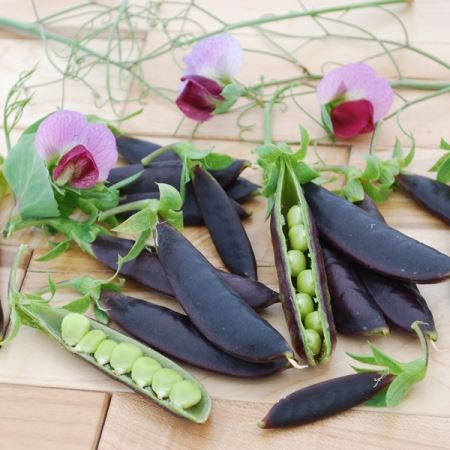
Purple/red cabbage is low in calories and still a good source of fiber, anti-oxidants and vitamins A, C, K & B6 as well as small amounts of other vitamins and minerals. It can be eaten raw as in coleslaw, cooked or fermented. Plant cabbage seeds in April, as they prefer cool temperatures. Adding compost to the soil is helpful too.

Going back in time, say 5,000 years or so, wild carrots were white, cream colored or purple. It is believed tat they were first cultivated in Afghanistan and Iran. So where did orange carrots come from? About 400 years ago Dutch growers crossbred carrots until they got an orange variety. This was supposedly done as a political feat to honor William of Orange who was a prominent person in the struggle for Dutch independence. Now purple carrots as well as cream-colored and yellow carrots are becoming fashionable. Some purple carrots have orange centers; others like Pusa Asita, from India, are purple throughout. Carrot seeds are very tiny so only plant them 1/4 inch deep. As they can take up to 3 plus weeks to germinate I plant a few radish seeds with them. As the radishes grow they loosen up the soil making it easier for the carrots to break ground. By the time the carrots start growing the radishes are almost ready to harvest. The soil needs to be kept moist until the carrots germinate so very light mulch is helpful.

Tomatoes are one of the favorite home grown vegetables. Names ranging from Purple Bumble Bee, Blue Beauty, Black Beauty, Cherokee Purple, Black Krim, True Black Brandywine, Moon Shadow, to Indigo Apple Tomato all have shades of purple in them. These are tomato varieties from just two of my favorite seed companies: Baker Creek’s website is http://www.rareseeds.com that carries heirloom seeds from around the world. Also https://www.highmowingseeds.com a company located in northern Vermont that carries organic seeds. Their seeds are available locally at Aubuchon Hardware in Kingston and Morrison’s in Plymouth.
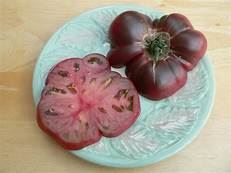
Cherokee Purple tomato
The list of purple veggies goes on and on from eggplant, lettuce, potatoes, onions, kohlrabi, peppers to sorrel. I don’t want this to become a book so will close with a purple flower.
Echinacea Green Twister a coneflower that was recently hybridized in Germany. This is a drought tolerant perennial that blooms in the mid to late summer. The outer rim of the petals are light green merging to a violet pink color on the inner petals. The flowers are quite striking in the garden as well as in floral arrangements. These plants are drought, deer, heat, humidity and poor soil tolerant. Birds will eat the seeds from the cone heads if plants are not pruned in the fall. The blooms attract butterflies and humming birds. The seeds for planting are available from many sources.

When planning your garden consider adding some colorful vegetables in with the flowers.
PLANTING YOUR CHRISTMAS TREE
December 2021 by Jeanette Mac Kenzie
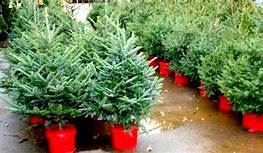
Is there a spot on your property that calls out to have an evergreen tree but you just haven’t gotten around to planting one? Dec. isn’t the time one usually thinks about doing such things but it is doable. Why not combine two projects at one time? Getting a Christmas tree and later planting it outside. It’s not too late. Our soil has not yet frozen and digging a hole for your new tree is relatively easy.
Consider carefully the location on the property. Find out the eventual height and spread of the tree branches you choose. In a few years you don’t want branches covering your front door, growing into other shrubs, trees or under power-phone lines. Also consider the amount of sunlight that the tree will get.
Find a nursery that has either balled & burlapped evergreens (commonly called B & B) or those in pots or decorative containers. Hopefully you can find a variety of evergreen or holly that you want. Most likely these trees will be on the shorter side and costlier than a cut Christmas tree.
As soon as you know the size of your tree, dig a hole for its future planting. It should be just as deep but twice as wide as the root-ball. Save the excavated soil in a container or pile onto a tarp to put somewhere it won’t freeze. Temporarily fill the hole with leaves, evergreen needles, hay, etc. and cover with a tarp to try to keep the hole from freezing.
. Keep your tree in an unheated garage or porch until it is time to move it inside and decorate it for Christmas. Locate the tree away from heat sources keeping it as cool as possible as well as well watered. Your tree should only be inside for about a week or so. Then transition the tree by letting it spend about a week getting used to the cold again by putting it back in an unheated garage or porch before planting outside. Remove the temporary material from the hole. If the soil in the hole has frozen, pour boiling water around the edges. Take the tree out of container and plant making sure it is at the same depth it was growing in. Make sure that the (trunk flare) where the trunk meets the root-ball is not buried, as it may lead to later fungal rot. . If the tree is B&B remove any wires and fold down the burlap before planting. The burlap will eventually decompose. Use the dug up soil to fill in around the edges of the tree and water deeply. Apply mulch around the tree
An option for a living Christmas tree is a Norfolk Island pine. This plant (Araucaria heterophylla) is endemic to Norfolk Island in the Pacific Ocean between New Zealand and New Caledonia. This is a conifer although botanically it is not a true pine. In most of North America and Europe it is only grown as a houseplant. When young the tree has a symmetrical triangle shape which resembles many of our conifer trees we decorate for the holidays. If you have or get a Norfolk Island pine, give it bright indirect light, routine watering and lots of humidity. The best way to do this is place the plant pot in a tray of pebbles/gravel filled with water.

These trees seem to be most available in the larger grocery stores that have florist departments. They run from 1 – 5 feet and are usually reasonably priced. Lowes and Home Depot sometimes carry the smaller ones. These slow growing trees don’t like the cold so make sure they are wrapped when getting them to your vehicle and into your home.
Happy tree shopping, decorating and possibly planting
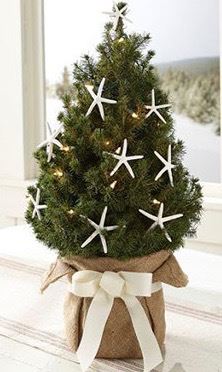
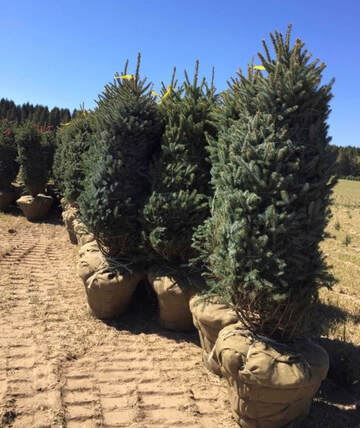
WHITE PINES IN AMERICAN HISTORY
by Jeanette Mac Kenzie November 2021
In general plants that are quite common where we live we tend to not consider very special, while in other parts of the country they could be prize specimens. That’s why I have chosen today’s topic Pinus strobus also known as: white pine, Eastern white pine, Northern white pine, soft pine and Weymouth pine. Those of the Iroquois Nation call it the “Tree of Peace”.
The needles of white pine are attached to the stem in bundles of 5, which is an easy way to identify it. Needles on red pine are in bundles of 2, while the ponderosa pines out west have 3 needles per bundle. The story of white pine in this country has helped to determine our countries history.
By the 1600’s England had few forests left that could provide suitable trees for the giant masts, support timbers and lumber for their growing Royal Navy & merchant ships. For a while until 1652, masts were gotten from Sweden & Denmark until their tall trees were diminished. Then masts were made using several trees fastened together with wooden pegs, which had a tendency to snap in rough weather. Meanwhile the colonies in the New England area were surrounded by virgin stands of huge white pines, perfect for making singlestick masts. The wood of white pine is light in color, soft and easily worked.

In 1691, under King William of England, the Broad Arrow Policy began. Any white pine with a diameter of 24” or larger was given the “Mark of the Broad Arrow. Surveyors of Pines were appointed by the King to mark all such trees. With 3 swings of an ax an upward pointing arrow was put on the King’s Pine trees.
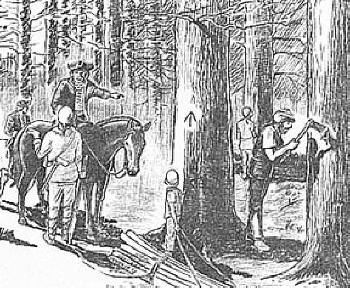
As time marched on the biggest and tallest white pines in this country were harvested for England and became few and far between. King George 1 made a new law in 1772, claiming any white pines with a diameter of 12” or more belonged to the King.
The colonists were not happy with this added restriction, which meant that even though the trees were on their own property they couldn’t legally cut them for their own use or sell the lumber. If caught doing so, they had to pay heavy fines to the King. Saw mills that illegally cut up any of the King’s Pines were also in deep trouble. To avoid being caught they would make an extra vertical cut on a board to make it narrower than 12”. They would also dispose of the Broad Arrow mark on the lumber.
Have you heard about the Pine Tree Riot in New Hampshire? In the winter of 1772 sheriff Benjamin Whiting and his deputy John Quigley attempting to enforce the law about the king’s pines at sawmills were awoken by disguised men. They were severely beaten with tree switches getting one lash for each tree for which they were attempting to collect fines. Then they were forced to ride out of town through a gauntlet of jeering townspeople.
It wasn’t just the taxation of tea and stamps that led to the American Revolution, the King’s white pines had a lot to do with it also.
There are still some stands of virgin white pines, protected in various state parks and on several Indian Reservations in the New England as well as a few other states.
This past summer I was traveling in northern Minnesota with my sister and her husband, a forester who had once worked in the area. All of a sudden we pulled off the main road onto a narrow winding road into deep woods, which opened up into a clearing. Several huge ancient white pines were on the ground. Trails led through several acres of still standing virgin white pine trees that for some reason lumberjacks hadn’t cut down 2 – 3 hundred years ago. Of course before leaving the area I had to hug one of those mammoth ancient white pines.

If you live in one of the older homes in Duxbury, or surrounding towns, you might want to measure the width of any wide pine floorboards. Maybe you have some of the King’s pines in your home! Don’t worry, you won’t be fined or arrested for it these days.

YEAR END GARDEN PLANNING
Jeanette Mac Kenzie October 2021
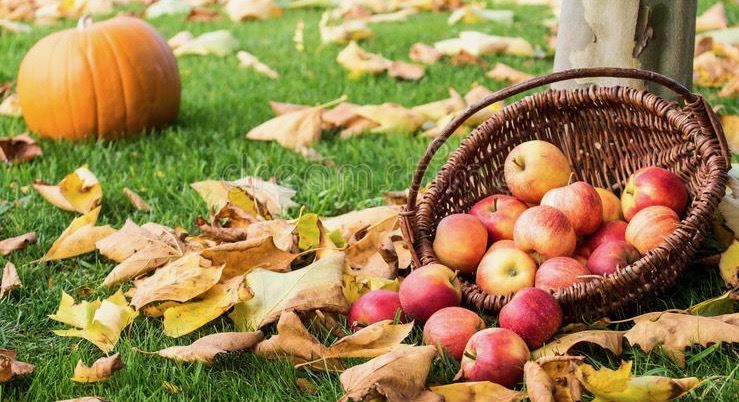
Before the cold weather really kicks in, stop to survey your garden and consider how the plants did this season. If you are a super organizer and planner you may have taken notes as time went by or even taken photos of your gardens as the seasons progressed. For the rest of us it is not too late.
Start thinking on how to improve your observations and record keeping for next year. Plant markers with variety names etc. seem to eventually get lost or disappear. Try keeping record book to note the name of a plant, a brief description such as color, height, bloom time, where purchased and of course the location in the garden and even a photo. 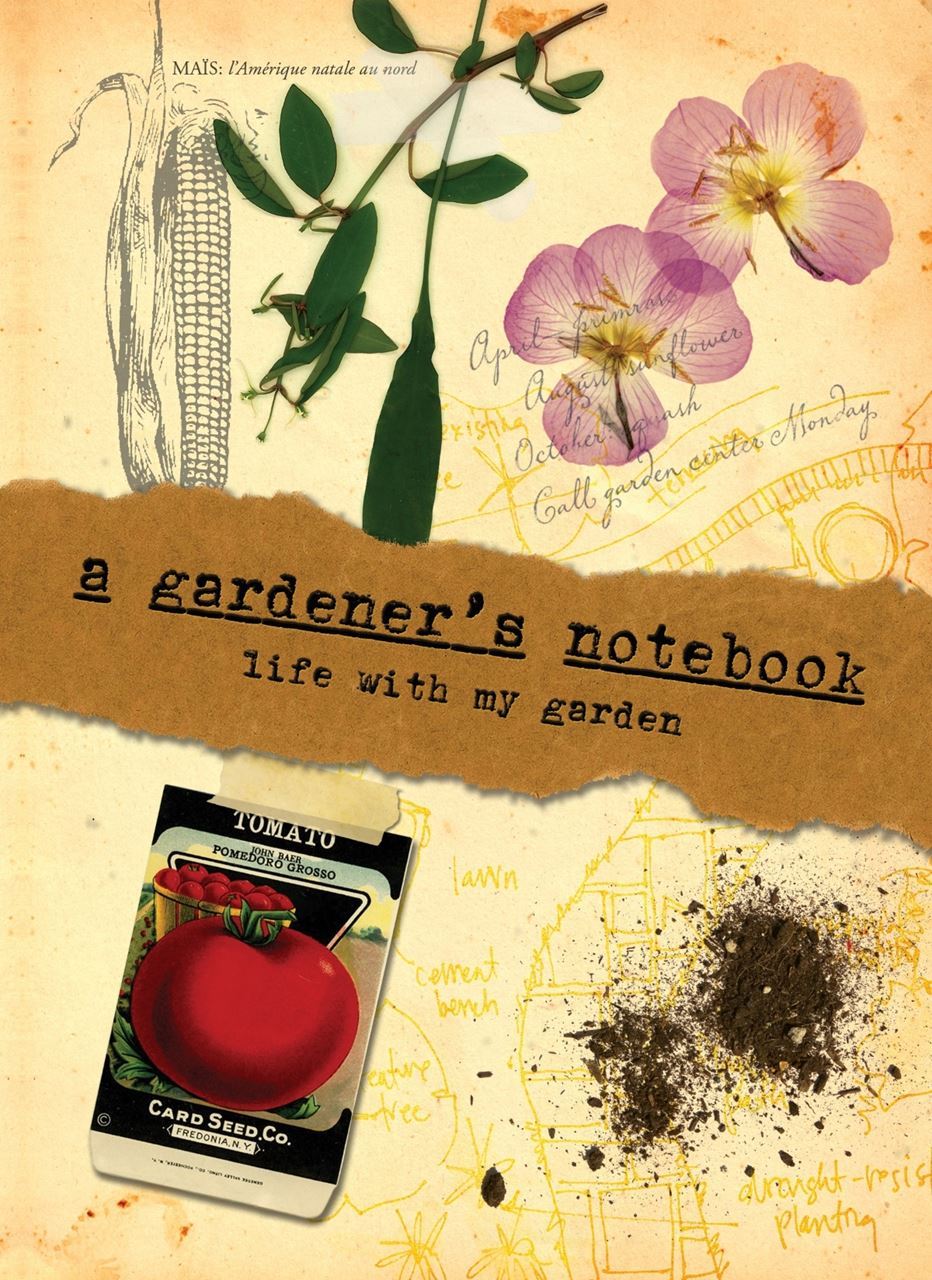
Some may even draw out a rough map where every plant is located. If you tend to move plants around or constantly make new additions do this map in pencil.
When adding a new plant it will help to prevent adding bright orange flowers next to maroon ones that may not compliment each other. Of course if one blooms in the spring and the other not until autumn there is no problem being next to each other.

As you go through the growing season note which plants need to be divided or seem to be in the wrong location due to how they sprawl, the color of bloom or too much sun or shade. Spring or fall are the best times to move or divide most plants.
For perennial flower gardens you aim for a succession of varying plants in bloom at all times. To fill in, add a few annuals that will bloom most of the summer. Don’t forget small shrubs and/or evergreens as part of you garden planning. A mix of varying types of leaf shapes and sizes add interest.
Color in the garden can have many different effects. You could have a “cottage” garden with every color of the rainbow mixed together or separate various plants so each has center stage when blooming. Have a succession of color themes with pastels in the spring followed by yellow and blue in the summer ending with autumn colors in the fall. Some gardeners have favorite colors and stick with one or two throughout the whole season. I always like to have something blooming in white throughout the season, as it tends to emphasize the colors around it. Maybe it is just personal taste but I like to include white flowers in most of my bouquets.
Garden tours are a good place to get ideas of plant combinations. Many of us have enjoyed the club's Garden Gatherings during the summer when we visit each other’s gardens. We get to see first hand the plants that do well in our area. Stopping by garden nurseries throughout the summer can give you new ideas about what is blooming at a particular time. Nurseries appear to be giving more information about whether a plant is native or not.
For vegetable gardeners make notations about where the different vegetables are located. Rotation of various vegetable families is recommended. For instance corn is a heavy feeder so don’t plant it in the same space year after year as it will deplete the soil too much. Did the tomatoes this year really taste super or just mediocre? If you know the variety you can repeat it or avoid it in the future. With tomatoes there are literally 100’s of varieties to choose from especially if you start your own from seed. Consider mixing in some flowers with the vegetables to attract pollinators.
Get your notebook – clipboards – or whatever out and amble around your garden and make notations for next years garden planning on one of these nice autumn days.

SURPRISE
September 2021 by Jeanette Mac Kenzie
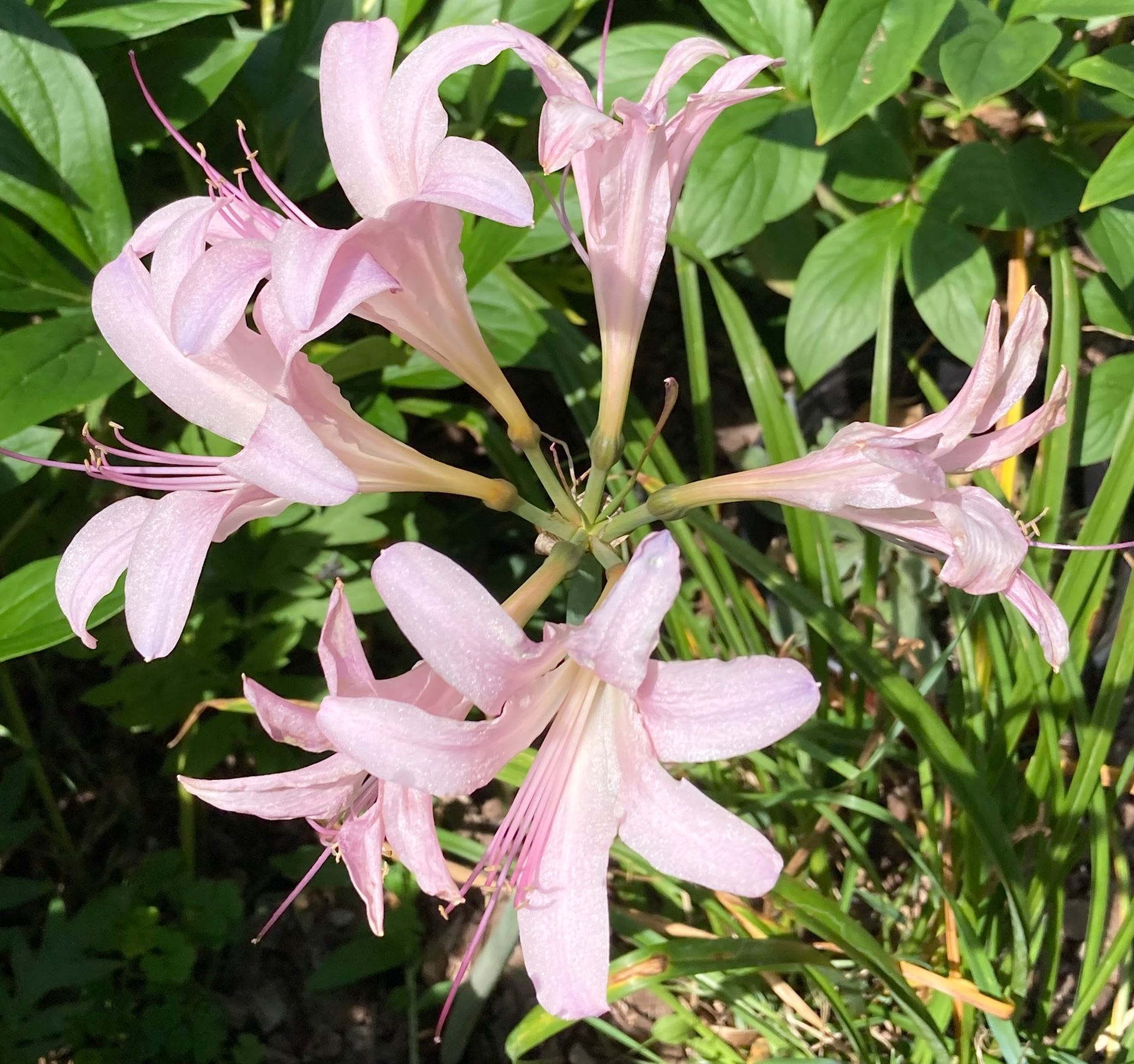
It is always of interest when an unknown plant appears in the garden. How it got there I will never know for sure. It probably arrived in some farm loan brought in years ago. Most times these plants are unfamiliar weeds that I let grow until they bloom which makes identification much easier. Then they head to the compost pile minus flowers and any forming seeds.
In the spring this particular surprise plant had strap like leaves similar to day lilies. I waited and waited but no flowers appeared and eventually the leaves died back to the ground by early summer. Well so much for that plant so I forgot all about it. Then in early August peaking out from under a peony plant were 2-foot bare stems were some absolutely gorgeous baby pink lily like flowers. Some of the stems had 5 to 6 flowers on them. Both butterflies and humming birds were delighted.
With a bit of detective work, a very knowledgeable gardening friend and some computer research my mystery plant now had a label. Its botanical name is Lycoris sqamigera. There are numerous common names including: Resurrection Lily, Naked Ladies (no leaves on the stem), Magic Lily, Mystery Lily and Surprise Lily.
The Surprise Lily is fragrant, does well in full sun to partial shade, is deer resistant, and is a good cut flower. This plant isn’t found in nature, as it is a hybrid of 2 different Lycoris species. It is native to Japan. The best time to plant these bulbs is in the early autumn.
If you want to try growing these beauties I found several places that carry the bulbs: Amazon, Heritage Flower Farm in Mukwonago, Wisconsin, Terra Ceia Farm in Patego, North Carolina and Holland Bulb Farm.
If you tend to forget where plants are located in your garden you might want to mark the spot where the Surprise Lilies are planted with an unusual rock, a brick or some other type of marker. Enjoy the beautiful Surprise Lilies in August.

HUSBAND & WIFE TREES
July 2021 by Jeanette Mac Kenzie

On my daily trip from the kitchen with food scraps to the compost pile I pass an interesting sight. A young 6 foot deciduous trees roots look like they have pinned down a much larger root of a white pine tree. That got me to thinking about trees I have seen in the past where the parts that are near together eventually join to make one tree.
Conjoined trees are a natural rarity that occurs when branches, trunks or roots of trees grown together. The outer layer of the trees eventually touch and over time are rubbed off exposing the cambium layer due to wind movement or just the growing expansion of the tree. Then the trees eventually self graft to each other. The scientific term is inosculation. A similar process can occur in fruits, vegetables and flowers.
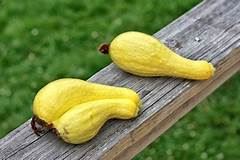
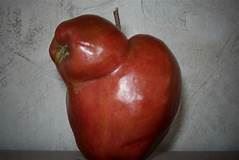
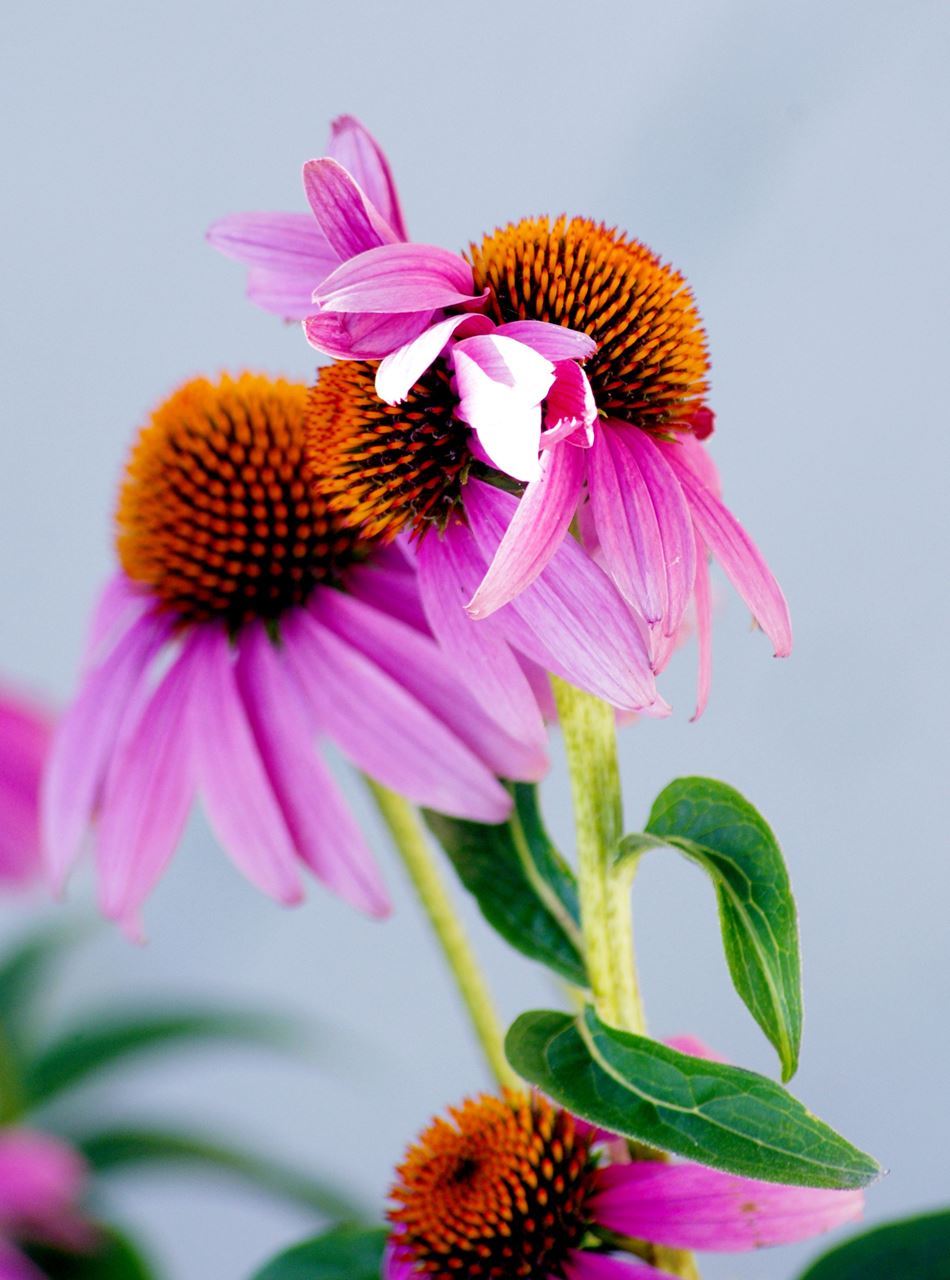
This process can happen in both conifers and deciduous trees especially those with a thinner bark layer. Usually this type of grafting is between two trees of the same or closely related species or genera but it can happen between any trees that are physically touching, rubbing, intertwined or entangled. I guess time will tell if the tree roots along my compost path will join eventually in a few years.


oak and pine conjoined roots conjoined
Next time you travel south on Route 53 in Duxbury notice the conjoined tree at the left side of the parking area of Bongi’s Turkey Roost business. Be on the look out for such trees if walking through any wooded areas.

Bongi's
ORCHID TREE
Jeanette Mac Kenzie June 2021
Have you see them? Trees covered in thousands of white orchid like blooms on tall upright stalks. The flowers are white with yellow-orange markings inside and a few purple spots and are somewhat fragrant. Soon the ground will be covered as the blossoms fall. I call it the orchid tree but actually it is a Northern Catalpa (Cataipa speciosa). Other common names include the Cigar tree, Indian bean tree, Catawba and Caterpillar tree.
Their heart -shaped leaves are huge measuring up to 12 inches long and 8 inches across. When identifying plants it is a common practice to notice how the leaves are attached to the stem. Most common are either Alternate or Opposite. However the Catalpa tree leaves have a Whorled attachment with 3 leaves attached at each node.
The nick- name of caterpillar tree comes from the fact that this tree is the sole food source for the Catalpa sphinx moth (Ceratomia catalpae). If there are a lot of them they can defoliate the whole tree but new leaves readily grow back. Avid fishermen have been know to plant this tree in order to harvest the caterpillars which are used for fish bate.
Catalpa wood has been used for fence posts as well as railroad ties as it is very resistant to rot. Although somewhat unusual, the catalpa is sometimes used as tone wood when constructing guitars and other string instruments. The flowers attract bees, butterflies as well as humming birds. The branches are a favorite nest habitat for many species of birds. It makes a great shade tree as it can grow 60 feet tall with a spread of 40 feet. It often times has interesting twists to its trunk and branches.
Catalpa trees bring back pleasant memories. As a child, I looked forward to going with my grandparents on their yearly excursion to Nerstrand woods on the edge of the great prairie in southern Minnesota. A few plants would be brought back to Grandma’s wild flower garden each spring. Once while meandering in the woods I came across an area where both the trees and the ground were covered with beautiful orchid like white blossoms. As a 4 year old it was like being in a wonderland once seen in a movie.
Eventually the blossoms will turn into long 8-12 inches bean like structures full of seeds. This is where the nickname Cigar tree ties in. As these drop in the autumn it creates lots of litter, which can be a nuisance to clean up each fall.
When you travel north on route 3A just before St. Christine’s church in Marshfield there is a large spectacular Catalpa tree. Another good-sized tree is on Temple Street just north of where Franklin Street crosses it. They are not that common but there are a few others in Duxbury. See how many you can find.
BLACK GOLD
March 26, 2021 by Jeanette Mac Kenzie
Crocuses are in full bloom, daffodil buds are visible, Japanese andromeda shrubs are in full bloom, pussy willows are opening and earthworms are squiggling in freshly turned soil. Spring has sprung and gardeners are looking forward to warmer weather.
It’s not too early to begin spring clean up of our yards and gardens. Start by cutting back dead perennial stems of flowers and decorative grasses and raking up the fall leaves. But then, what to do with all of it? Don’t take it to the transfer station ….USE IT. Start this organic material on its way to becoming “Black Gold” commonly called COMPOST. My dictionary describes compost as “a mixture of various decaying organic substances used for fertilizing land”.
The ingredients for your compost pile are any readily available organic materials such as leaves, weeds, grass clippings, seaweed, hedge trimmings and in the late fall annual plants. Daily contributions from the kitchen could include vegetable and fruit peelings, eggshells, citrus rinds, and coffee grounds. Other ingredients include shredded newspaper, sawdust, lobster-clam and oyster shells, wood chips, cardboard and wood ashes in moderate amounts. Don’t include dairy products, meat, fat or bones as they will attract animals and don’t readily breakdown.
To make compost 4 types of components are needed: carbon, nitrogen, water, and oxygen. The brown-dry items such as leaves and wood chips supply the carbon. The green plant items such as weeds and grass & kitchen scraps supply the nitrogen. As you add layers of brown and then green material add water so the pile is slightly damp. Eventually you will want to start turning the compost pile which will incorporate air.
Manure from herbivore animals such as chickens, rabbits, sheep, cows and horses will also supply nitrogen needed for the bacteria that work in the decomposition process to do their job better. Don’t use cat or dog droppings.
Years ago when the circus came to town they set up in the field surrounded by the library, pool and school building. On the last evening they were in town, I went to see what animal manures might be there for the taking. After much shoveling I came home with a truckload of steaming elephant manure! I placed a few compacted bowling ball sized elephant contributions of ‘you know what’ around the property, mostly on the steps so family members would be sure to see them on the way to school and work. Families of gardeners soon learn to have a sense of humor. Later I was surprised to see oats growing out of the compost where the elephant manure was concentrated. Adding manure to the compost isn’t essential but it helps speed up the breakdown process.
There is more than one way to contain compost. Some will build bins made of wire or pallets. As the compost breaks down it is turned from one bin into the next. There are also various types of commercial compost containers. On a very small scale an old basket or a bucket with the bottom cut out can be used. Easier methods are just a big pile or a long row if you have lots of ingredients. For the long row method the compost is turned from side to side or the row moves forward and back a couple of yards with each turning of the compost.
Why bother to turn the compost? The composting process is aerobic meaning it needs oxygen for the aerobic bacteria to do their job of breaking down all the ingredients. Oxygen is incorporated into the pile by turning it with a garden fork. The turning process will also expose all the material to eventually be in the center of the pile where decomposition is most rapid. As you turn the compost you know it is really cooking when the exposed center is streaming or you can feel the heat it makes from the decomposition process. If you have a really big pile don’t attempt to turn it all at once. Instead of going to the gym turn compost for a set amount of time each day.
The compost is ready to enrich the garden when it has changed into black, fresh, earthy smelling soil often full of earthworms that have aided in the decomposition process. Compost will enhance any soil it is added to. When planting or transplanting vegetables, flowers, shrubs or trees, first put a shovel full of compost in the bottom of the hole. Compost can also be used as summer mulch for both veggies and flowers. There is no such thing as too much compost. If you don’t already have a compost pile now is the time to start when you are cleaning up your garden areas for another season of gardening.
Jut follow William Shakespeare’s advise:
“DO NOT SPREAD THE COMPOST ON THE WEEDS”
GARDEN CATALOGS
January 2021 by Jeanette Mac Kenzie
Seed, plant and gardening paraphernalia catalogs arriving in the mailbox are welcome in these cold days of winter with the quiet isolation due to Covid-19. The enticing pictures and vivid descriptions of what this year’s garden could look like set our minds to daydreaming. Keep in mind before you order one of everything, what your time, energy, available space and budget restraints might be.
You want to order from a catalog that tells you the information needed to grow particular plants: maturity date, disease resistance, hybrid or open pollinated, are seeds treated with a fungicide, height & width at maturity, light needed, # of seeds in a packet, spacing when planted. Some of these criteria are more important to know when planting vegetables. To order a particular flower, shrub or tree it is important that the botanical name is stated not just a common name that could refer to any number of different plants. Many catalogs have excellent information about how to grow & when to harvest particular food plants. For heirloom plants it is more interesting to find out about their history.
As each catalog arrives, I go through it and make notations of particular varieties I am interested in with page number, ordering code, price and number of seeds per packet. This list is attached to the outside of the catalog along with the shipping price and shipping costs. Then I can narrow down my choices to fit my garden space and the amount of time I plan on tending my garden. If you have been ordering seeds via catalogs for a few years, you probably have already narrowed down which catalogs you prefer. Of course in recent years many seed catalog are available to order on line.
A few things to pay close attention to:
1. Be wary of descriptive terms like vigorous grower or slightly intrusive. These plants might take over your garden.
2. When buying mail order plants try to get them from nurseries close to your growing zone. Duxbury is in Zone 6b. Plants grown in Texas or the Carolinas may not do well here in New England.
3. The latest spectacular hybrid may be on the cover or in first few pages. Unless it is really important to you, wait a year or two for the price to drop and the plants/seeds to be more readily available.
4. Avoid buying seeds/plants just because you want them with no idea where they might be squeezed into the garden landscape plan appropriately. I must admit I am guilty of this one. A woman whose garden was on a tour years ago in Hanover had a similar situation. Her whole property was covered with assorted size and shaped garden islands tied together with rambling pathways just big enough for a lawn mower to get through.
5. Enjoy your catalog browsing but get you orders in early if possible. Apparently many more people have taken up gardening since last spring possibly due to the Covid epidemic. Some of the seed companies have been swamped with orders, run out of a few varieties and even closed down for a time to catch up with shipping orders.
Happy Garden Planning
Out of the Past
January 2021 Jeanette Mac Kenzie
Fifty years ago Celia Houghton, known by her nickname Kiki, was president of our garden club. To educate the club’s members about gardening, several ways were discussed. It was decided to write a book. The horticulture expert of the group was Rozmond Truden. “She spent hours in research and study preparing each article, and it shows - - not only in the written word, but in the improved gardening methods and achievements of her readers.”
Years later Roz Truden gave me an autographed copy of GARDEN GLEANINGS, the book she and the club created. 50 years ago. The following is what Roz wrote in the late winter chapter.
“ SUGGESTIONS FOR GROWING PLANTS FROM SEED.
“In order to get a head start on the growing season hereabouts annual flower seeds may be sown indoors beginning in late February and continuing through March and April. Biennials and perennials are more successfully started in late summer to become mature and well established before winter. Successfully producing your own seedlings cannot only be extremely rewarding, but the horticultural knowledge gained from trying, whether successful or not can be invaluable. The seed catalogues begin to arrive in January and early February so as you peruse them let yourself be tempted to send for a packet or two of your favorites. Choose varieties that will grow in whatever garden exposure you have to offer, as a plant needing plenty of sun cannot do its best in the shade.
Germination is most successful in a sterile medium as the warm moist conditions favorable to seed germination are also favorable to a fungus commonly referred to as “damping off”. The sterile media suitable are vermiculite, perlite, milled sphagnum moss and sterile sand. A mixture of these in equal parts is highly recommended by many seed growers. Some have success with packaged soil mixes.
Containers should also be sterile and at least two and a half to three inches deep. Makeshift containers such as soup cans, aluminum foil pans and coffee cans (shallow size) should be perforated with a can opener or screwdriver so that they may be watered from the bottom before sowing the seeds.
Large seeds may be poked into the medium. Smaller seeds should be sprinkled over the medium, then the container tapped lightly and the seeds will be sufficiently covered. Water again from the bottom and cover with a plastic bag or piece of glass. Place in a warm seventy to seventy-five degree location. OUT OF THE SUN, as sun through plastic or glass is burning and drying. Check your container from time to time to be sure the medium stays moist. When germination has started, remove covering, place in sunlight and be sure to keep seedlings moist. The sunny location chosen for the growing seedlings should be a cool one, as in a cooler location the seedlings will grow stronger, not spindly and weak. Keep turning the container to prevent the seedlings from leaning toward the sun.
The containers of seeds may be set on a heating cable, covered with gravel, or on any other device supplying bottom heat. This will hasten seed germination. The seedlings can benefit from bottom heat also but should be in a cool room to prevent weak, stingy growth as stated above.
Among the slower geminating seed to be started in late February or early March, or eight to ten weeks from sowing to planting and outdoors, are the seeds of the petunia, verbena snapdragon, ageratum. Quicker germinating seeds or six to eight weeks from sowing to planting outdoors, are the seeds of marigold, zinnia, cosmos, aster and calendula, which may be started after the middle of April. Whatever seeds you choose read the back of the seed packet carefully.”
AUTUMN LEAVES
October 2020 by Jeanette Mac Kenzie
It’s that time of year again. Most of the rusty-blonde evergreen needles (leaves) have fallen from the trees. Different types of evergreen trees and shrubs will drop their needles over different time periods: larch and cypress -yearly, spruce & firs- every few years, pines -2-3 years and cedars -3 years plus. Evergreens keep their green color year round as the falling needles are located in the interior branches. Because there are so many white pines in our area and each tree is on its own drop schedule there always seems to be lots of needles on the ground in Sept & Oct. Because pine needles beak down at such a slow rate they have little effect on the soil pH so can be used for mulch or as a compost ingredient. Also the needles are great for making pathways in the garden.
In the autumn, as the daylight lessens a bit each day and temperatures start to drop, chlorophyll production also slows down. This decreases the green pigment in the leaves. Soon shades of yellow, orange, brown, from carotenoids, which have always been present in the leaves, begin to show. However, the red shades of anthocyanin are produced in the autumn. It is believed that this pigment plays a role in readying the tree for next spring.
At the spots where the leaf stem meets the tree/shrub a layer of cells begins to form slowly severing the tissue that supports the leaf and causing dehydration. The tree seals the area off until the leaf detaches and falls to the ground.
Now if you and/or neighbors have lots of deciduous plants, soon your ground is covered with colorful leaves. In times past we would rake the whole area into a huge pile and all the kids and a few adults would jump into the leaves. Soon the air was filled with the smell of burning leaves, as this is how we disposed of them. This practice is now frowned upon and illegal in many places.
Rather than transporting the leaves to the Transfer Station there are ways of using the leaves on your property.
First of all they can be used to add to your own compost pile. Compost is a partially composed of carbon materials/brown matter such as leaves, conifer needles, small twigs, shredded paper & cardboard. The pile should consist of about 2-3 parts of carbon material to 1 part nitrogen material. The nitrogen matter or green matter ingredients are grass clippings, weeds and spent annuals and perennial trimmings, sea weed and some kitchen ingredients such as vegetable and fruit peelings, egg shells, coffee grounds If you have LOTS of leaves the extras can be bagged and saved to add to grass clippings next summer. You can just let the pile sit there and it should be useable in about a year. However, it will decompose much faster if it is forked over, which adds oxygen. Also add water when there is little rain. If your compost pile is large, you may want to just spend a few minutes daily to eventually get the whole thing turned over. It counts as part of your daily exercise routine!
By first running them over with the lawn mower, the shredded leaves will break down faster when added to garden. This will help attract earthworms and beneficial bacteria and enrich the soil. Shredded leaves can also just be left on the lawn where they will break down over the winter providing nutrients for the grass as well as shading the soil to help prevent weed seeds from growing. The shredded leaves make great mulch for shrubs, trees, perennials and veggie beds. Add 2-3 inches deep making sure that none of it touches the stems or trunks of the plants. As the leaves break down they add nutrients to the plants.
There are numerous sources in “computer -land” that show many ways of using autumn leaves for decorating and crafting.
If you are a kid at heart or have young ones in your family you may want to just jump into a big pile of raked leaves on a sunny brisk autumn day. Then…….. head for the kitchen for a cup of hot chocolate and popcorn.
Happy leaf raking
SIMPLE LAYERING
October 2020 by Jeanette Mac Kenzie
First of all I am not talking about putting on an extra sweatshirt, sweater or jacket when the weather is cold but variable. In horticulture layering refers to a method of propagating another plant from a stem or branch while still attached to the parent plant. Some plants and shrubs will do this on their own.
Fall is the best time to do a simple layering one of the easiest methods of propagating some plants. Evergreens, however do better when the process is done in the spring.
Last October I decided to try layering a rhododendron. It was a good-sized bush with numerous branches already growing near the ground. I choose 5 branches to try the process on.
First I cut about half way through the stem, and then dusted the area with a rooting hormone powder. Next I inserted a small twig (toothpicks work well) to prop open the cut area. Carefully bending down the cut area into a dug trench in the soil, which was then covered with 3-4 inches of soil. There are special C shaped pins that can be used to pin down the cut stem in the soil. However being a frugal New England gardener I made my own with some heavy wire to hold the stem in place. On several of the stems I just put a brick or heavy stone to keep the stem from popping up. The area was then watered. During the following year I made sure that the area was kept moist. The buried stem will not root if the soil is dry!
A year later the rooting stems were given a bit of a tug to make sure they had developed roots. They had, so I cut off the new plants from the parent plant, dug and planted them in different areas of the property. Since the new root systems were still small,l the plants were staked for support.
Simple Layering is best used on plants that have stems that can be bent down to the ground. Examples include: Holly, Forsythia, Daphne, Camellia, Magnolia, Lilac, Viburnum, Witch hazel, Smoke Bush, Rhododendron, Azalea, fruit bushes, Maples, slow growing herbs such as rosemary, lavender, bay. Some plants will root in a matter of weeks such as tomatoes and tomatillos while others take up to a year.
The rooting hormone powder will give the plant a better chance of putting out new roots along the buried stem. Various brands are available at Amazon, Home Depot, Lowes, Walmart, Ace Hardware and most good-sized plant nurseries.
If you want some new plants, basically free, try your hand at simple layering. You might even get some to root and get potted up in time for our plant sale next spring.
The Stinking Rose
Oct. 2019 by Jeanette Mac Kenzie
Some gardeners are happy when the season is over and their gardens are all put to bed for the winter. Others however still want to keep planting. If you are in the latter category this topic is for you.
I am referring to the STINKING ROSE commonly known as garlic. The term reportedly goes back to Greek and Roman times. If looked at from underneath, a garlic bulb does slightly resemble a white rose with the large ends of the cloves forming the petals.
Garlic should be planted anytime between mid Sept. to the end of Nov. Garlic likes a well-drained soil in full sunlight with lots of organic matter, so add some compost to the planting area. Keep the bulbs intact until you are ready to plant the individual cloves. I like to use a dibble to make the planting holes. Plant the cloves with the pointed end up about 6-8 inches apart then cover with 2 inches of soil. For a finishing touch add mulch. I prefer salt marsh hay, but straw, chopped leaves or grass clippings will also work. Garlic does not like any competition from weeds so the mulch will help with this problem next spring.
Next summer when about half of the leaves have died back, it is time to harvest the garlic. Using a garden fork or shovel loosen the soil around the plants then gently lift them out without pulling on the stalks. Shake off most of the soil then bunch 6-8 plants together and hang to cure in a dry, well-ventilated place such as a shed or garage. The curing process takes 4-6 weeks. The garlic can be used any time during this process but the flavor won’t be as strong.
Perhaps no other herb has been used for as long and in as many cultures as garlic. Its powers were often associated with physical stamina, endurance and strength. From the Pharaohs of Egypt to Chinese dynasties, there are references to garlic’s use as a food, as a medicine and as currency. In 2016, world production of garlic was 26.6 million tons, with China alone accounting for 80% followed by India with 5%.
UNDERSTANDING GARLIC VARIETIES: There are 2 main types both of which can be grown here in New England: soft neck and hard neck. Within these 2 categories there is a great variation in bulb size, flavor as well as hardiness, disease resistance and storage potential
SOFT NECK: This is the type best used if you like to braid your garlic, as the stem is more flexible. The cloves are smaller but there are more of them and they tend to keep longer. Most garlic found in a grocery store is soft neck. In general is NOT recommended to plant grocery store garlic as it is apt to have been heavily fumigated and sprayed. Soft neck garlic has 2 sub-groups namely SILVERSKIN and ARTICHOKE. Within each sub group there are numerous varieties.
HARD NECK garlic has a central stalk called a scape with usually one row of cloves around it. The scapes are often harvested and used in stir-fry or pesto. I like to use them in flower bouquets as they have an interesting curving twist to them. Hard neck garlic should only be grown in cold climates. Because the outer paper of the garlic bud is thinner, hard necks don’t store as long. Hard neck garlic has 3 main sub groups: PORCELAIN, ROCAMBOLE and PURPLE STRIPE. Like the soft neck garlic, there are numerous varieties within each sub group.
While checking the various sources of getting garlic on line I noticed that many are already sold out. Check out your favorite local sources for garlic. Your initial purchase of garlic bulbs can be a bit pricey. When you find a variety you like, each year save some of the largest bulbs for planting in the fall then you shouldn’t have to ever buy garlic again.
Did you know that garlic repels blood-sucking insects such as mosquitoes and ticks? Am not sure if you need to eat it or rub it on your skin or both. With Halloween coming up, keep in mind that it is also supposed to repel vampires and evil spirits.
On the next nice autumn day get out into your garden and plant some garlic.
 PEONIES
PEONIES
Sept. 2019 by Jeanette Mac Kenzie
For thousands of years peonies have been cultivated in China & Japan, where some of the finest varieties come from. These hardy perennials bloom in the spring and early summer in every shade except blue. I wouldn’t be surprised if hybridizers aren’t working on that color. Peonies can stand the summer heat but need a period of chilling which our climate amply provides. Peony plants are very long lived some lasting up to 100 years.
As peonies symbolize “good fortune” and “happy marriage” they are a popular flower for weddings and anniversaries with their sweet scent. In Victorian times using the Language of Flowers they represented bashfulness.
Unfortunately their bloom season is less than 2 weeks. There is a new industry of growing peonies in Alaska as they are harvested in July and Aug when ours have all gone by. Thus cut peony blooms can be ordered over a longer time period.
Autumn is the time of the year to plant and/or divide peonies. Unlike most other perennials, peonies don’t need periodic division. Well then, why am I telling you this is the time to divide them! The only way to propagate a named variety of peony is by plant division. Growing from seed can take up to 5 years to get flowers but they won’t be like the parent plant. If you already have some peony plants that you like, why not divide them rather than buying more?
If you are going to dig and divide first cut the foliage back to an inch or so. Carefully dig up the whole root system with a spading fork. Shake or gently hose off the soil so the small pink buds at the crown of the root system are visible. These buds are the beginning of next year’s growth. Cut through the root system with a sharp knife, dividing the peony plant with 3-5 buds in each division. The roots them selves resemble carrots.
In a sunny area, with well drained, soil, dig a hole about 1 ft. deep and 2 feet wide. Prepare it by adding a light dusting of bone meal, limestone and either some well-aged manure or compost in the bottom of the hole.
Pay close attention to this detail. Plant the peony division so that the buds are only 2 inches below the surface of the soil. This 2-inch depth is critical – if planted deeper than this, the plant WILL NOT BLOSSOM. If you have peonies that haven’t bloomed in a long time this could be the problem or the plant isn’t growing in full sun.
For an established peony plant, you don’t plan on dividing don’t cut the foliage until late fall as it will continue to build strength for the next year.
For you floral arrangers, I have found that peony leaves are great as fillers for flower arrangements as they last a long time when cut.
Don’t worry if you see ants all over the flower buds. They are just after the sweet nectar that forms around the outside of the buds. Ants don’t do any harm to the plant.
If I have motivated you to considering dividing your peony plants do it before early Oct. so the roots have a chance to get established before the ground freezes. Once the ground does freeze, for the first winter, add a few inches of mulch but be sure to remove it in early spring.
Maybe at the next garden club’s spring flower show you might win a blue ribbon for your peony blossom!
Moon Seeds
Jeanette Mac Kenzie July 2019
This year we are celebrating the 50th anniversary of humans landing on the moon. To tie in with the anniversary is this article about MOON SEEDS you might find interesting.
500: Seeds flown to the Moon by Richard Hollingham July 17. 2019
Before he became an astronaut, Stuart Roosa had an even more dangerous job. He was a smoke jumper – a highly trained firefighter who would parachute into remote forest areas to tackle wildfires.
When he was assigned as command module pilot for Apollo 14, in January 1971, the US Forest Service once again asked for his help. Scientists wanted to see whether seeds would be affected by weightlessness.
Roosa agreed to take 500 seeds from American redwood, pine, sycamore, fir and gum trees. He carried them in his personal kit the 238,855 miles to the Moon, where he orbited 34 times, before returning to Earth.
The seeds survived the journey but during a decontamination process (part of the procedure to protect the Earth from possible moonbugs), the capsule containing the seeds burst open. Scientists feared many would be lost or damaged. Once they were planted, however, most of the flown seeds grew into healthy saplings, with no discernible difference between those flown to the Moon and regular seeds on Earth.
Trees grown from the seeds have become known as Moon Trees. They have been planted around the world, including at the Kennedy Space Center in Florida and in the White House garden.
A Moon sycamore overlooks Roosa's grave at Arlington National Cemetery in Virginia. The trees and second generation Moon Trees, grown from cuttings carried by the astronaut, will continue to provide a living legacy of the Apollo missions long after all the astronauts have died.
NaHCO3
by Jeanette Mac Kenzie
Unless you are a whiz at chemistry, you probably won’t recognize this as the formula for sodium bicarbonate, commonly known as baking soda. This has been used throughout history as a rising agent for baking. When mixed with acids such as chocolate, lemon juice, vinegar, cream of tartar, yogurt, baking powder, etc. it makes bubbles that cause dough to rise. It also has been used as a cleaner, and a deodorizer. How many of you have an opened box of baking soda in your refrigerator or have scrubbed a pan with burnt food using baking soda?
That is all well and good but what does it have to do with horticulture? Baking soda has many uses related to gardening.
· To clean clay pots or a birdbath just sprinkle some baking soda, scrub with a brush or damp cloth, rinse and let dry.
· To encourage better blooms on your flowering plants mix 1 Tbsp baking soda with 2 quarts of water and apply to the soil around the plants.
· To sooth itchy skin from bug bites make a paste from baking soda and water to apply to the skin. Let it do its job for about 10 minutes then rinse off. The itchiness will have subsided.
· Make your tomatoes sweeter by sprinkling a small amount of baking soda around the base of the plant. The powder lowers the acidity of the soil and thus makes the tomatoes less acidic and sweeter.
· Some garden plants are susceptible to fungus such as powdery mildew. Make a mixture of 1-teaspoon baking soda, a teaspoon of liquid soap, 2 teaspoons of vegetable oil and 5 cups of water to spray on both sides of infected leaves. This makes the surface less acidic and limits he ability of the fungus spores to grow.
· To prolong the life of cut flowers add a teaspoon of baking soda to the water in the vase.
· To kill weeds that grow in your sidewalk sprinkle baking soda on them. It will burn the leaves and the weeds will disappear in a few days.
ph Plant roots absorb nutrients from soil when they are dissolved in water. If the mixture of water and nutrients are in soil that is too acidic or too alkaline the roots aren’t able to uptake the nutrients even though they may be present in the soil. To get a rough idea about the pH (degree of acidity or alkalinity) of your soil try this simple test.
Get your kids involved in this bit of chemistry.
Collect soil samples from several areas of your garden and put in 2 separate containers. To one container add 1/2 cup of vinegar. If it begins to bubble the soil is alkaline meaning the pH level is above 7 which is neutral.
In the second container add 1/2 cup of baking soda and enough water to make it muddy. If this bubbles your soil is acidic meaning the pH is below 7. This just gives you a rough idea of the soil pH but isn’t as detailed as a pH test done with a commercial test kit. Soils in New England are more apt to be acidic. Free soil tests are offered by the Master Gardeners at the Hingham Farmers Market August 10 Sat from 9-1:00. at the Bathing Beach. If you can’t wait until then check out the University of Massachusetts Extension Service at http://soiltest.umass.edu . They charge a small fee but give you good directions on how to correct your soil pH if needed.
· When you gardening day is over, wash your grubby hands with soap & water, then again with some baking soda to really get them clean.
· 1. When using these home -made mixes, first test on a small portion of the plant to make sure there are no adverse effects.
· 2. Use suggested dosages as too strong a mix can burn plant leaves.
· 3. Avoid spraying on flower buds & stalks.
